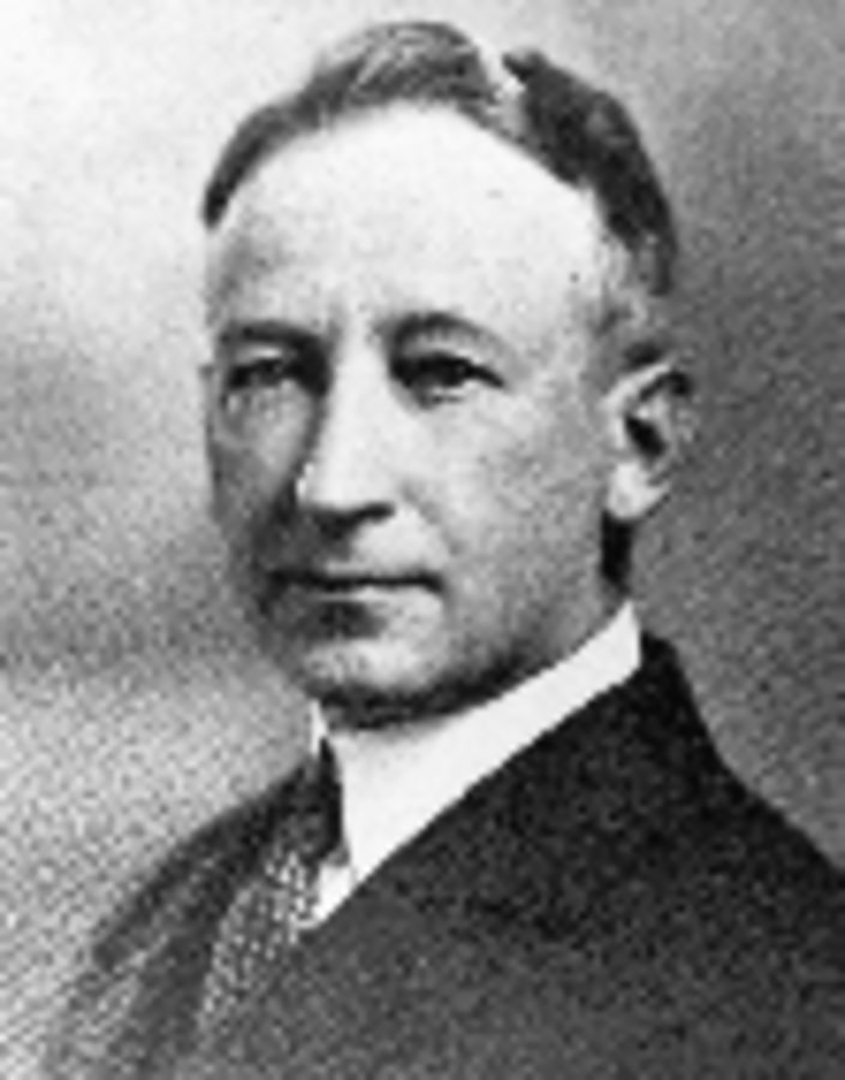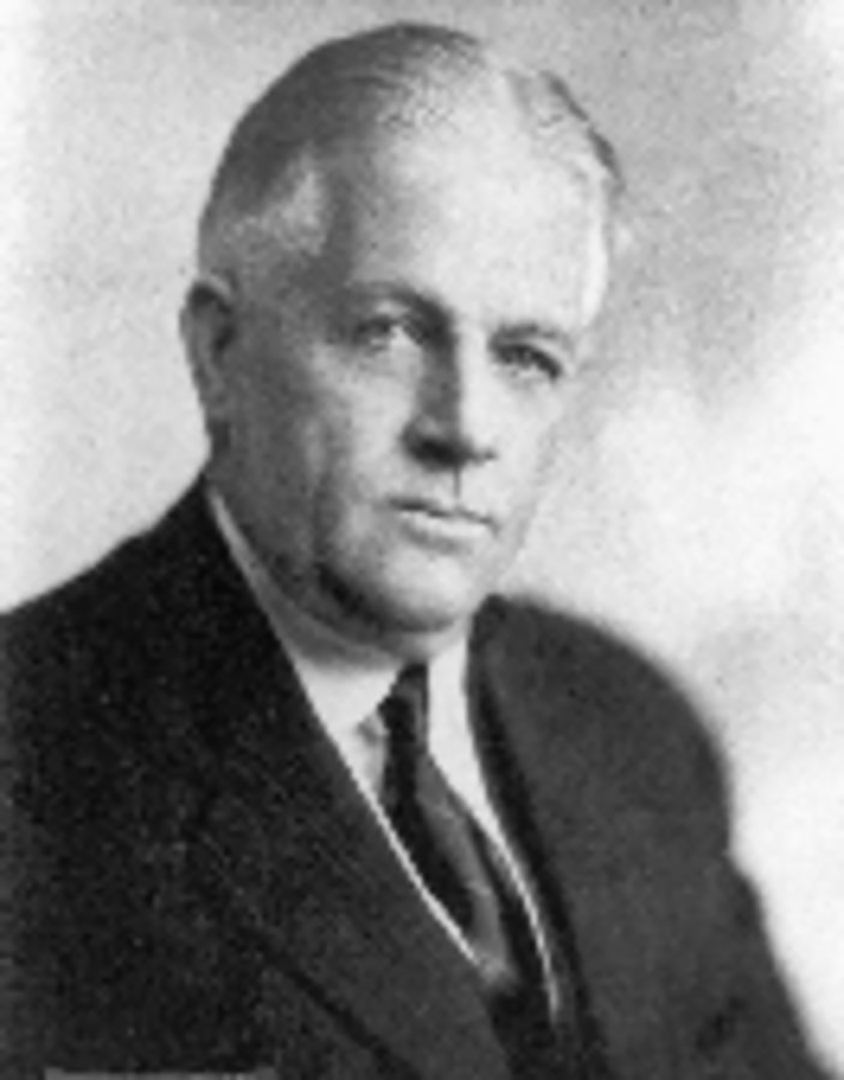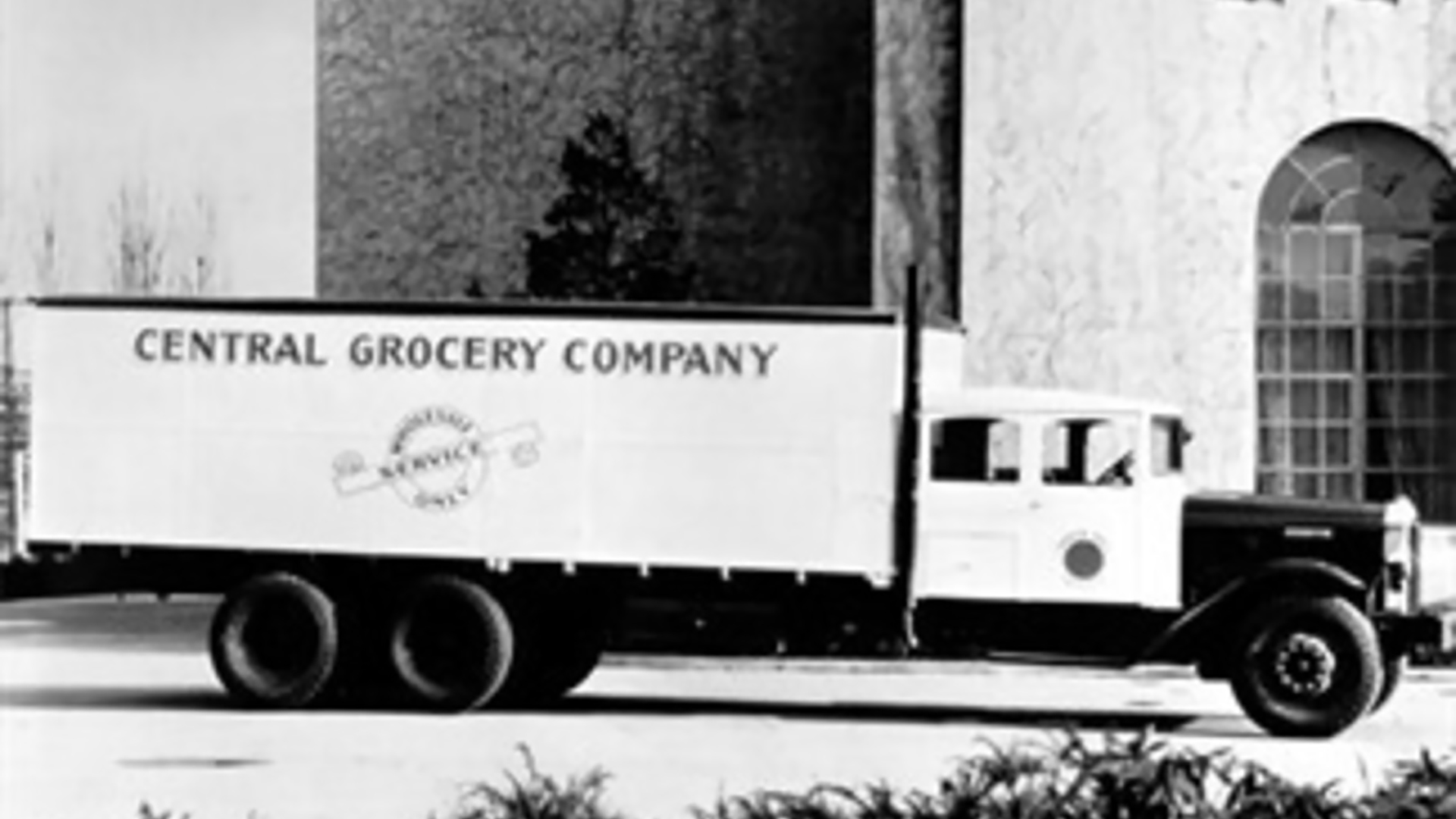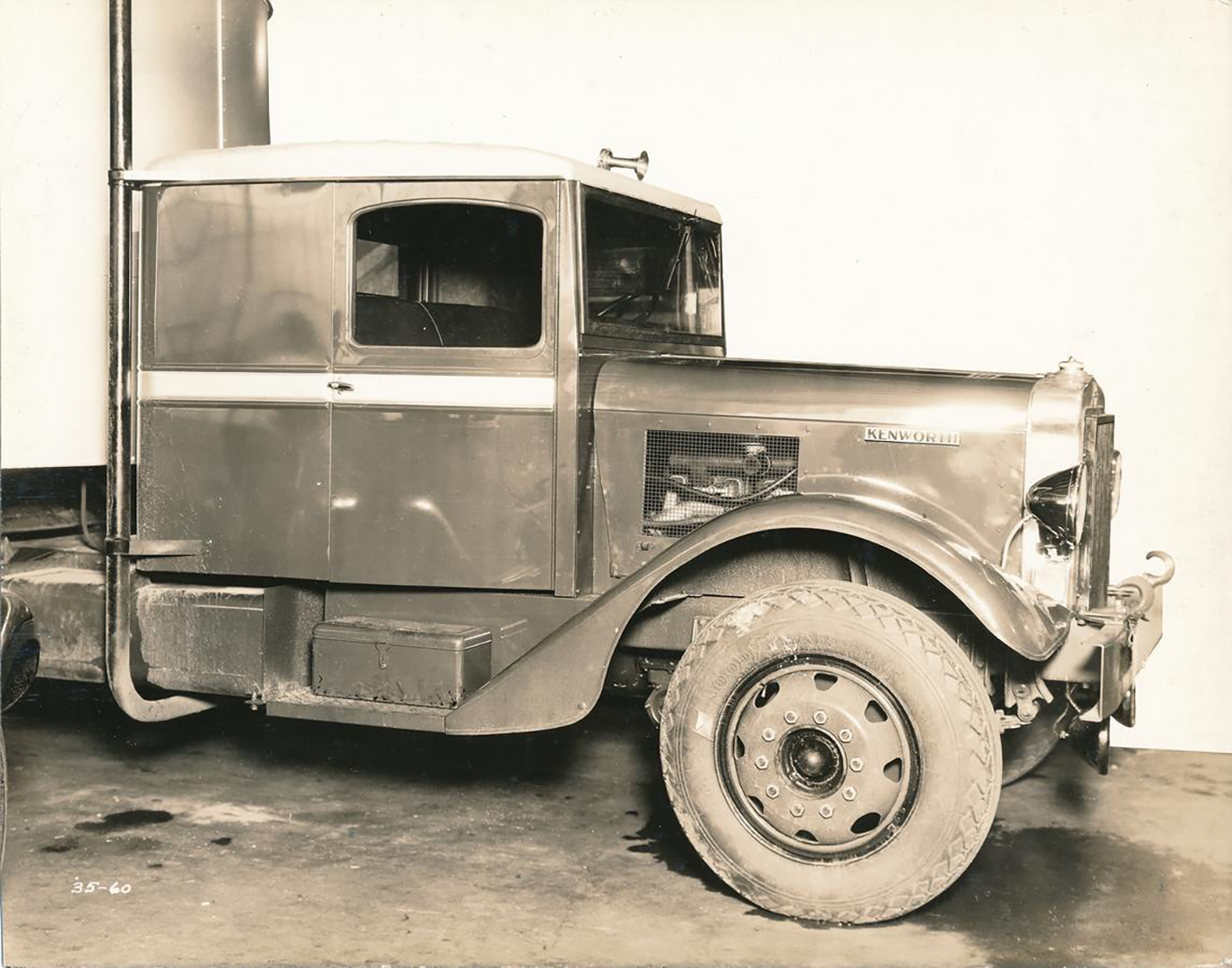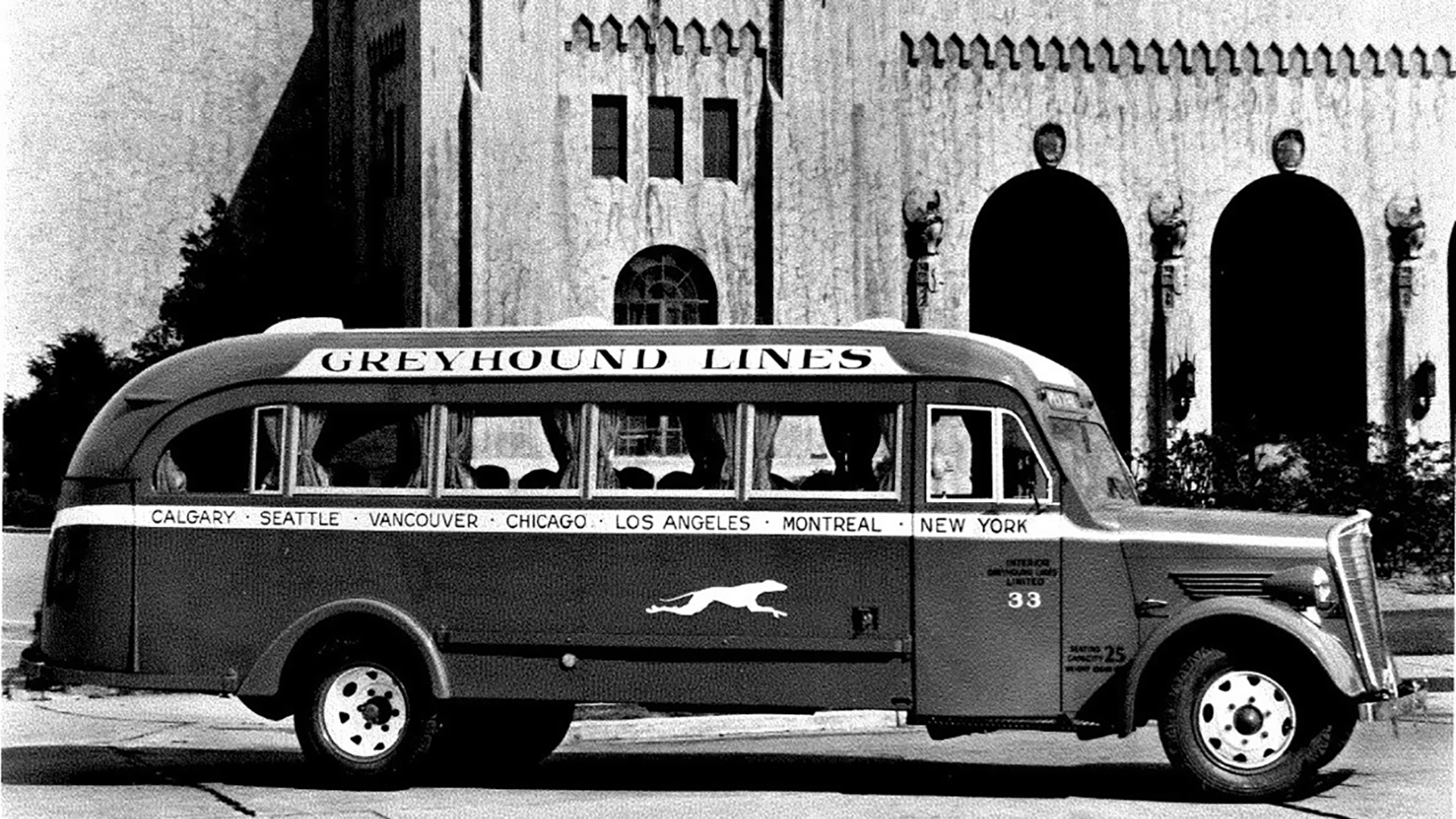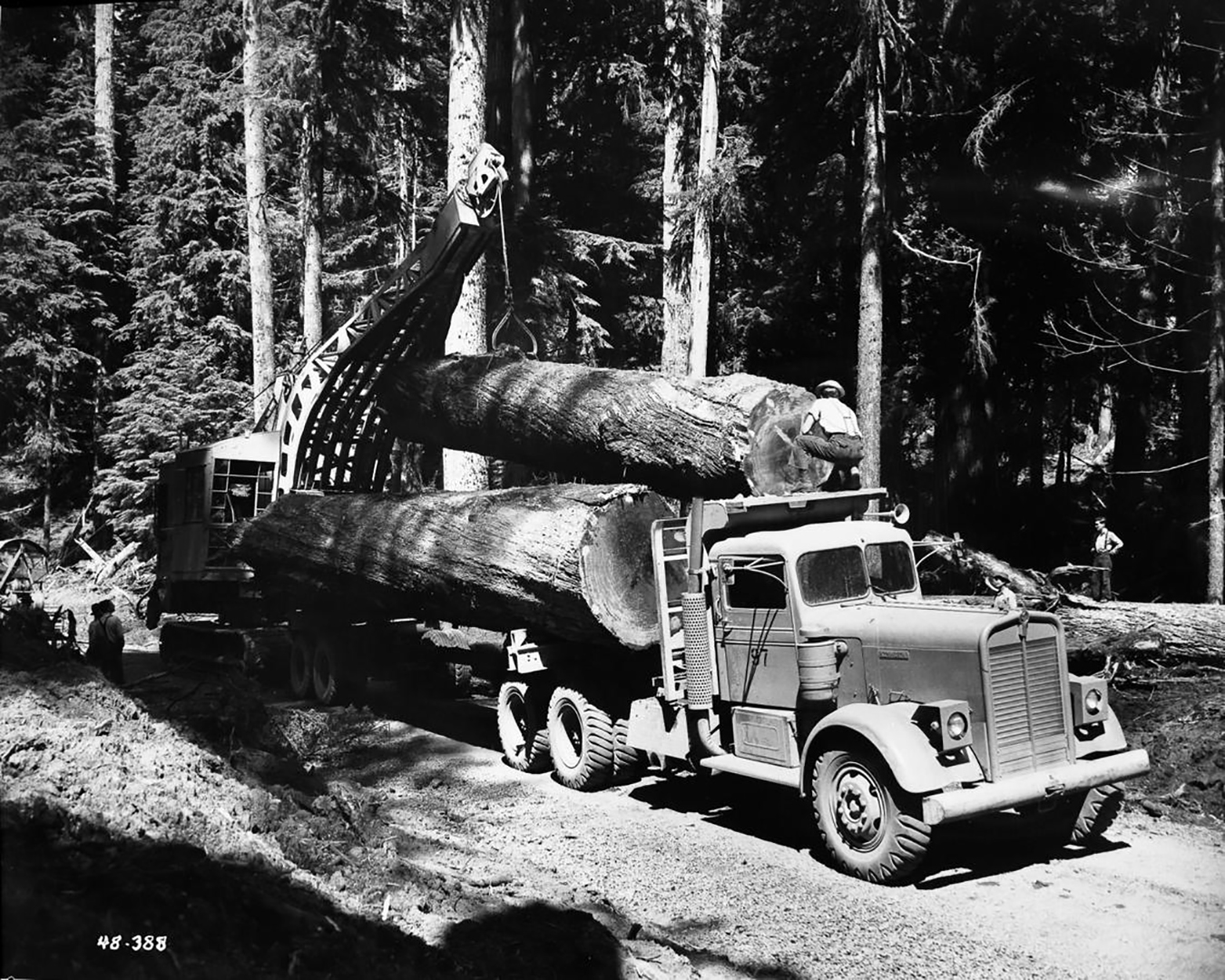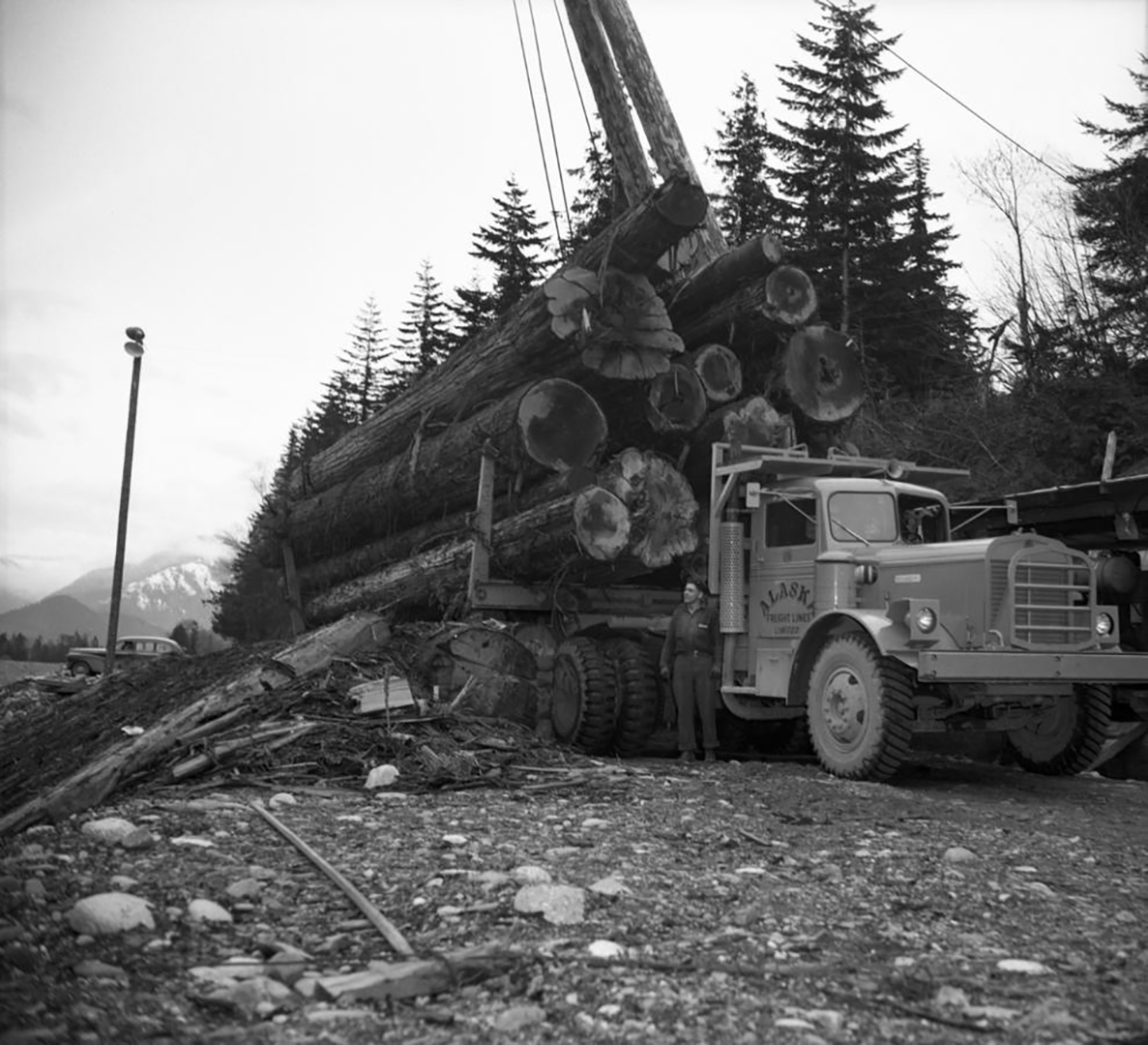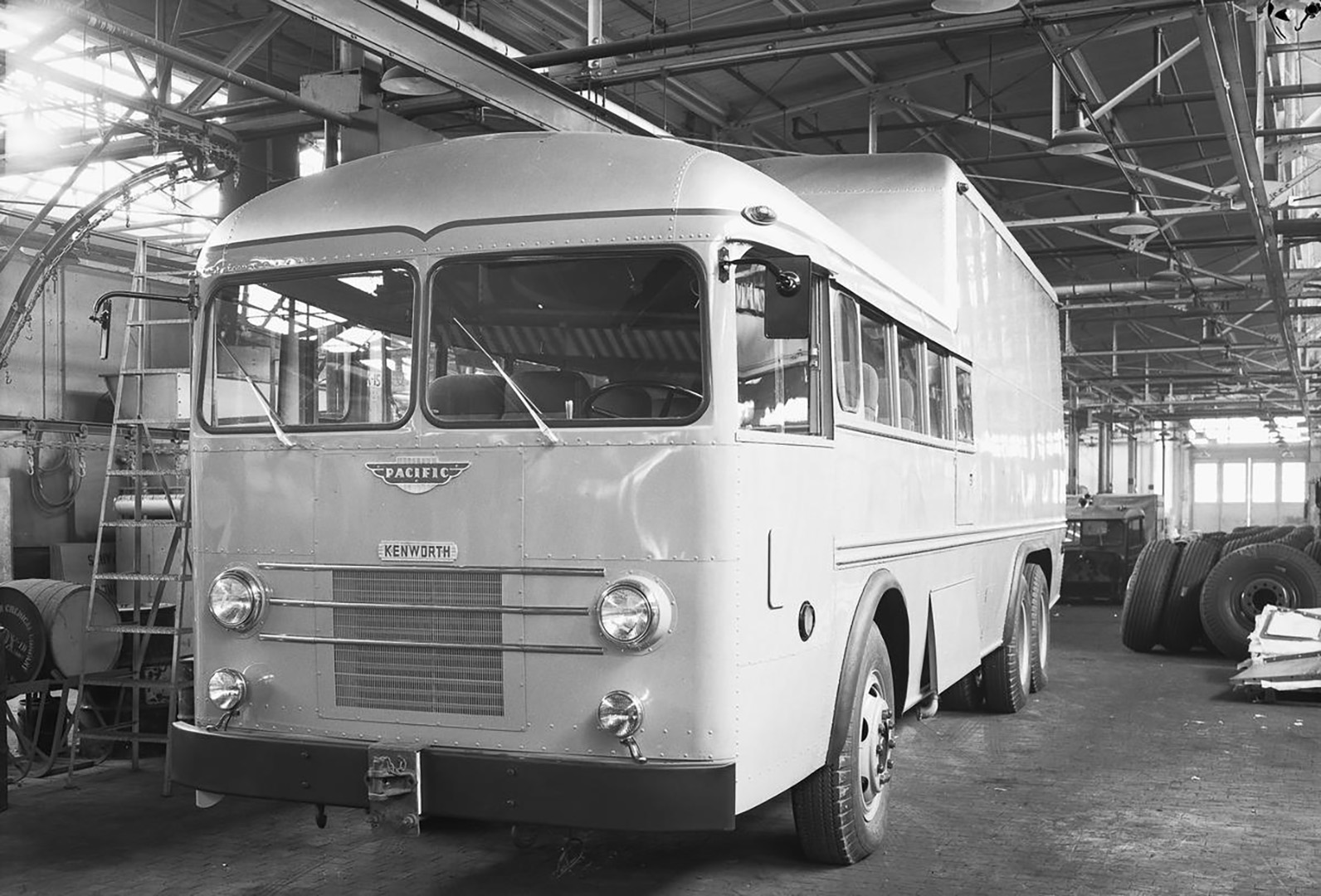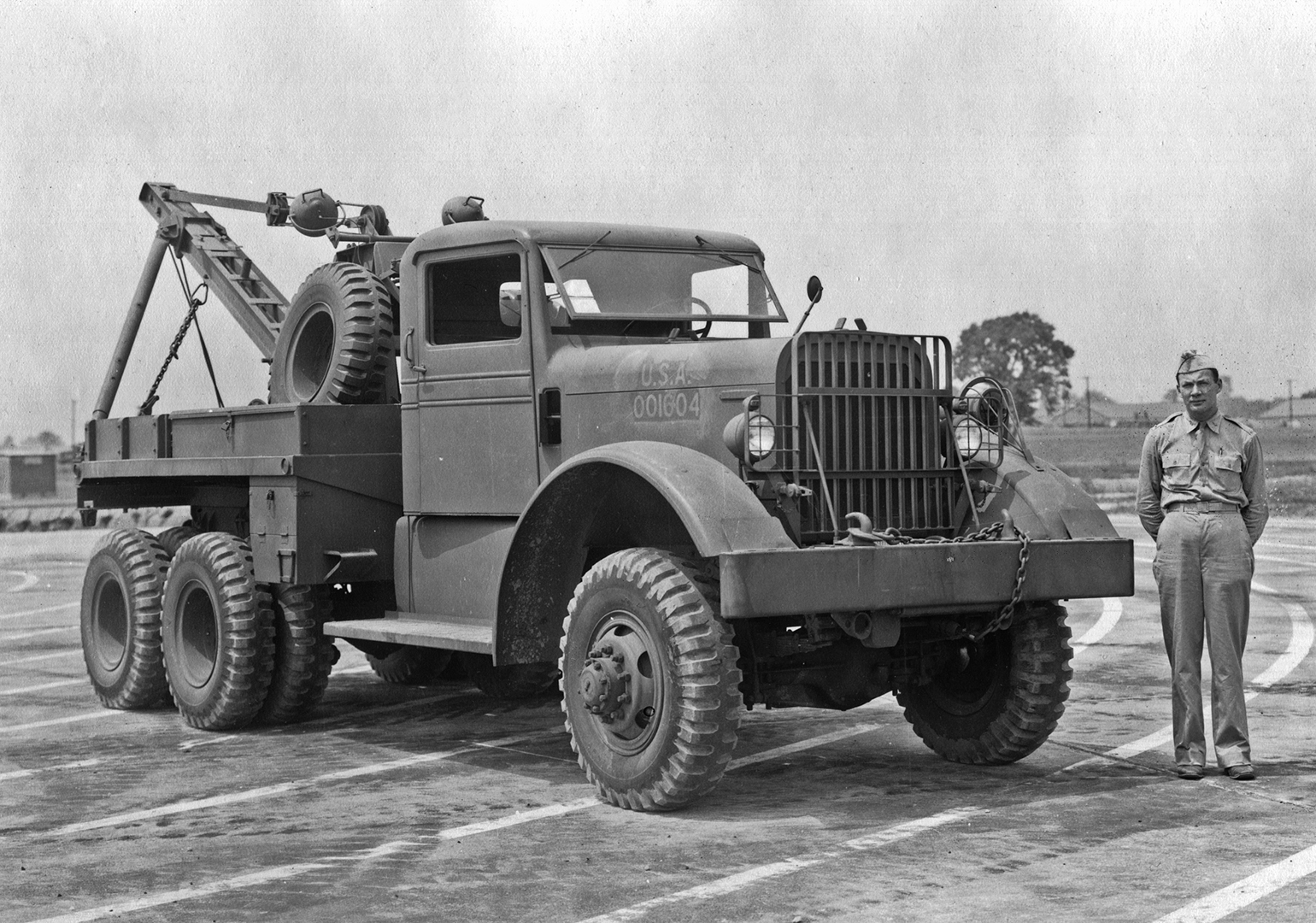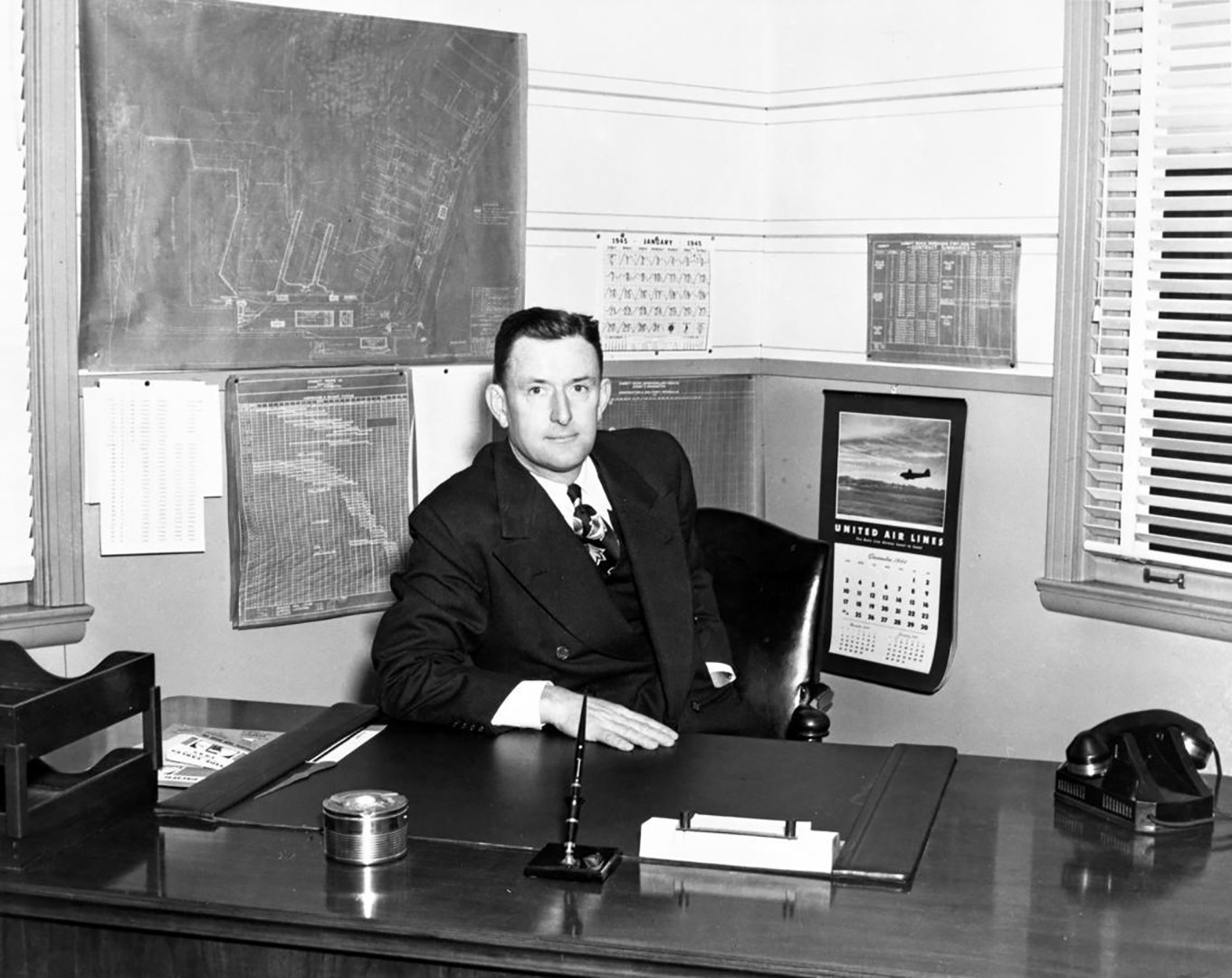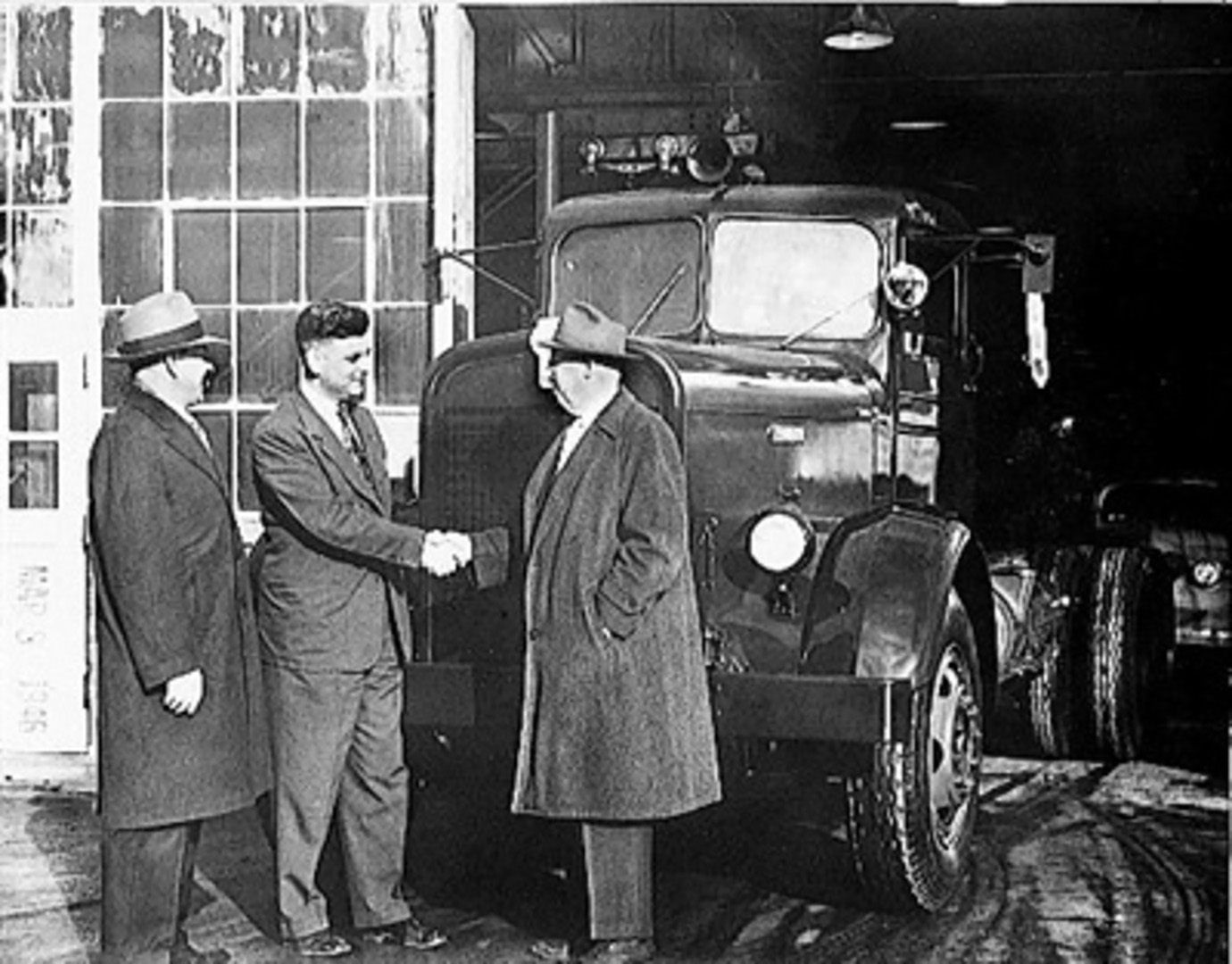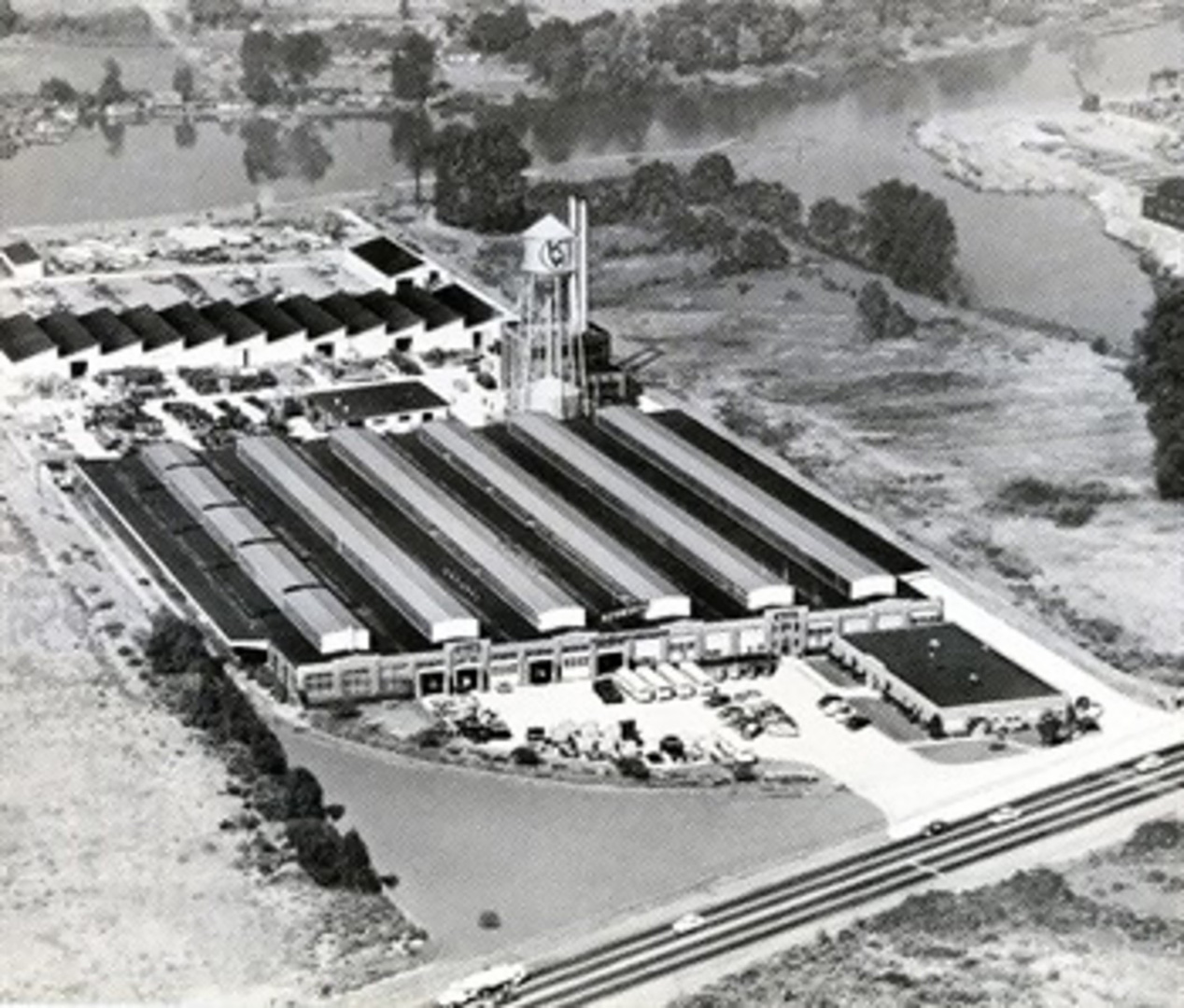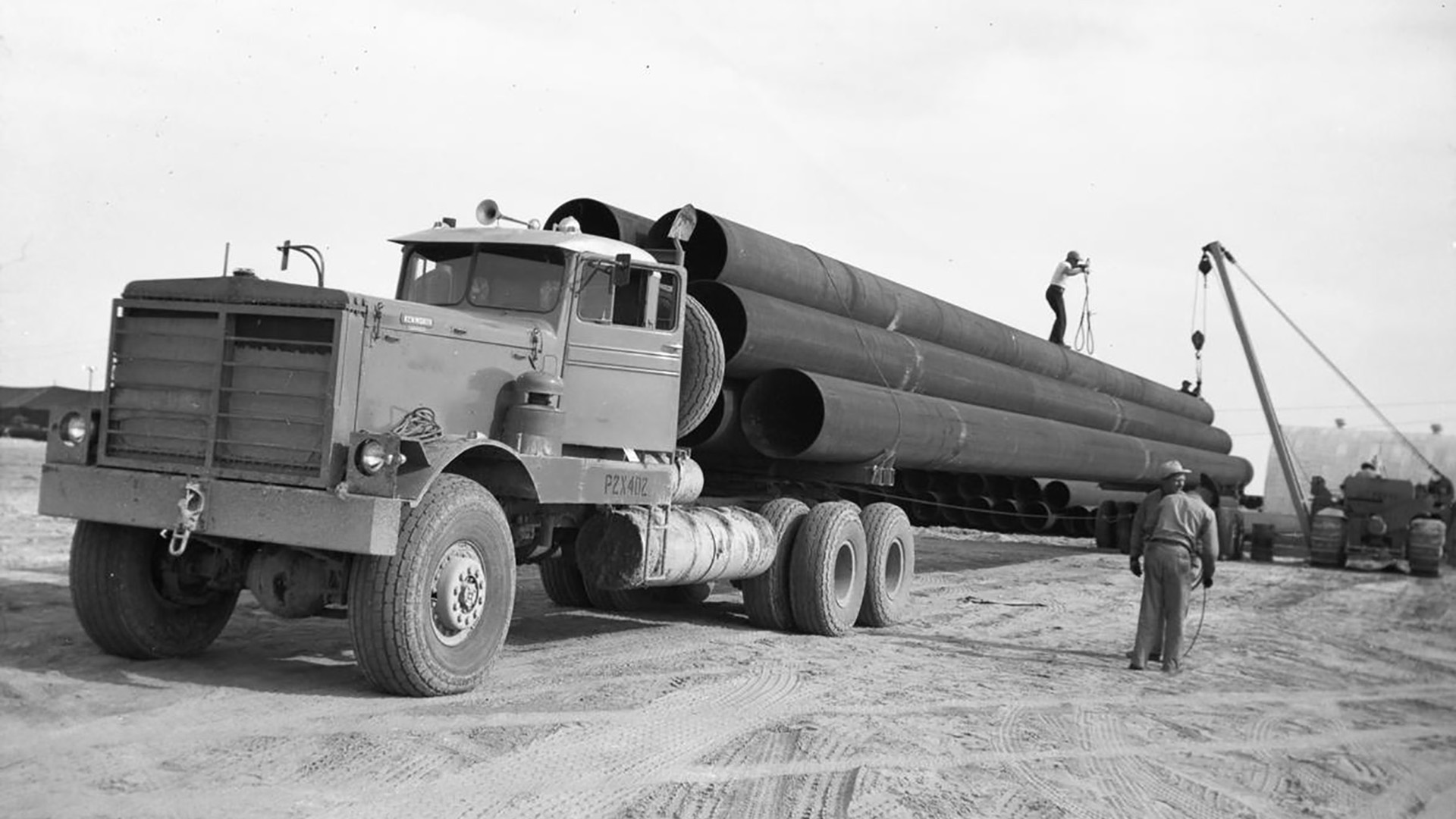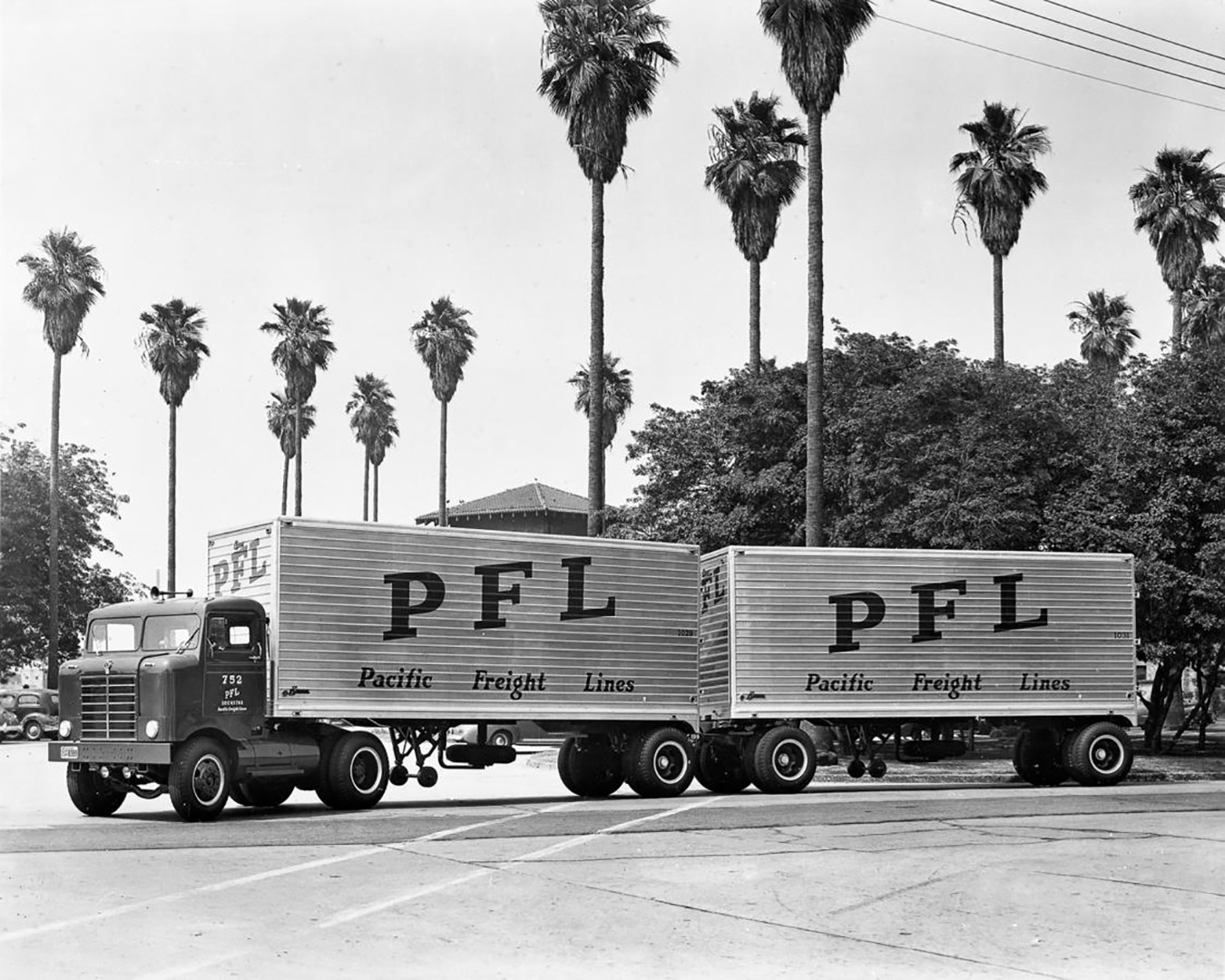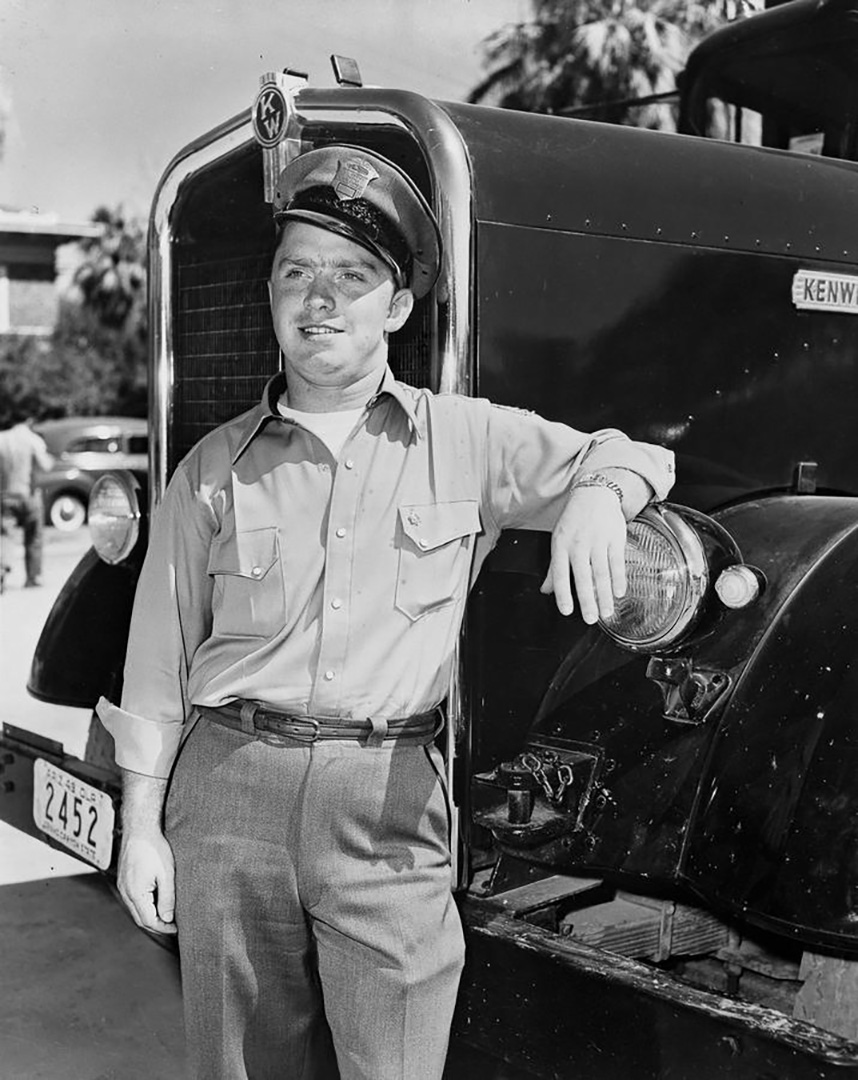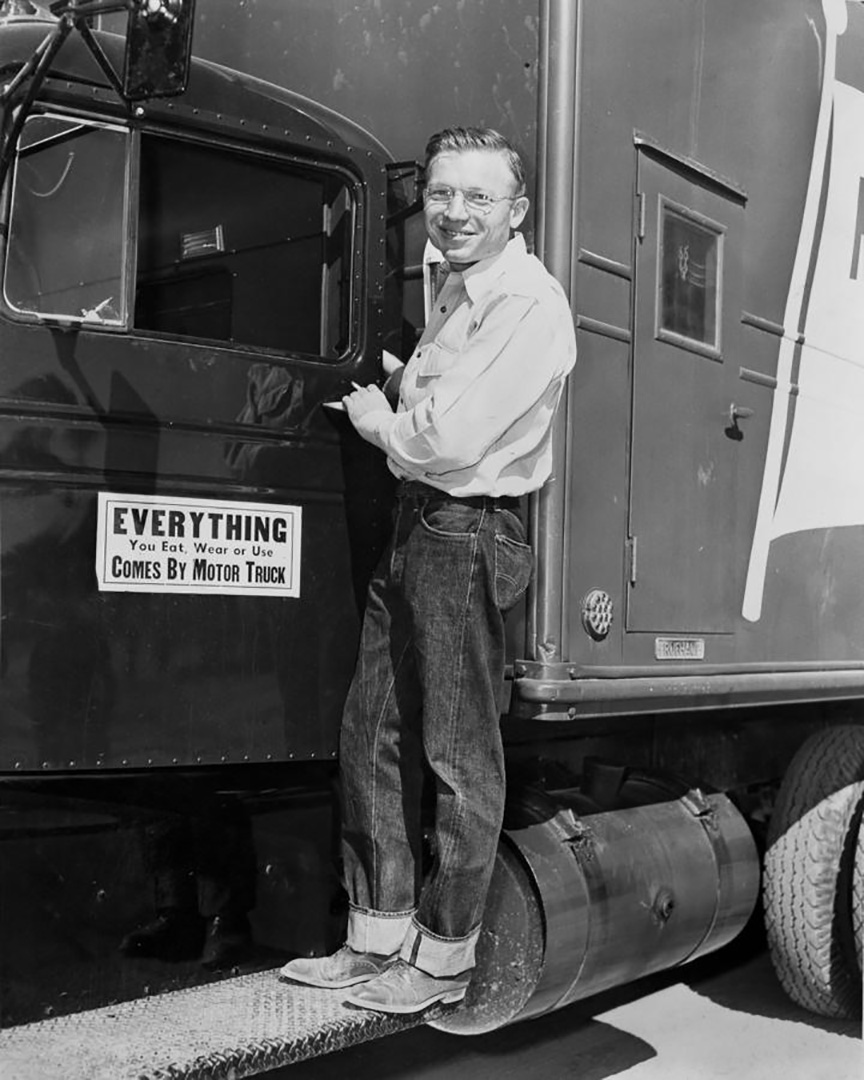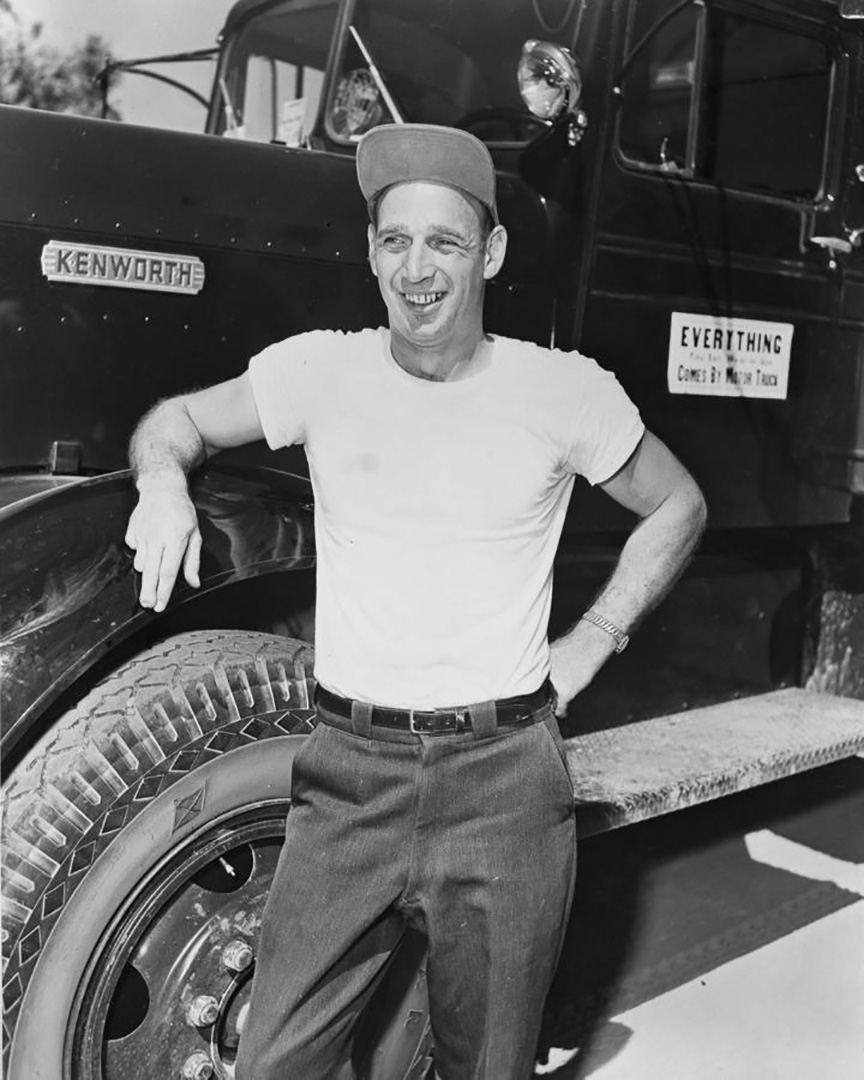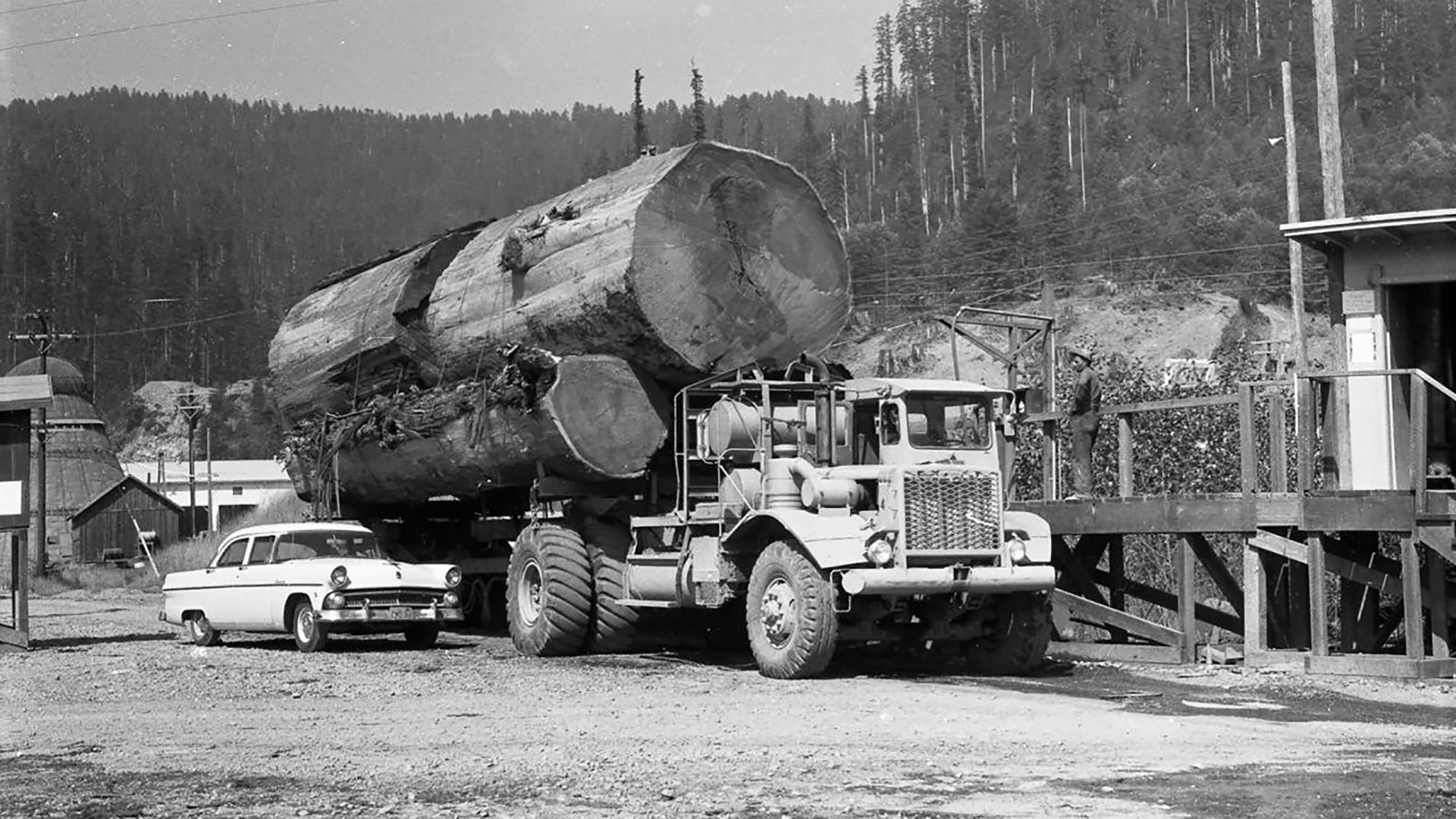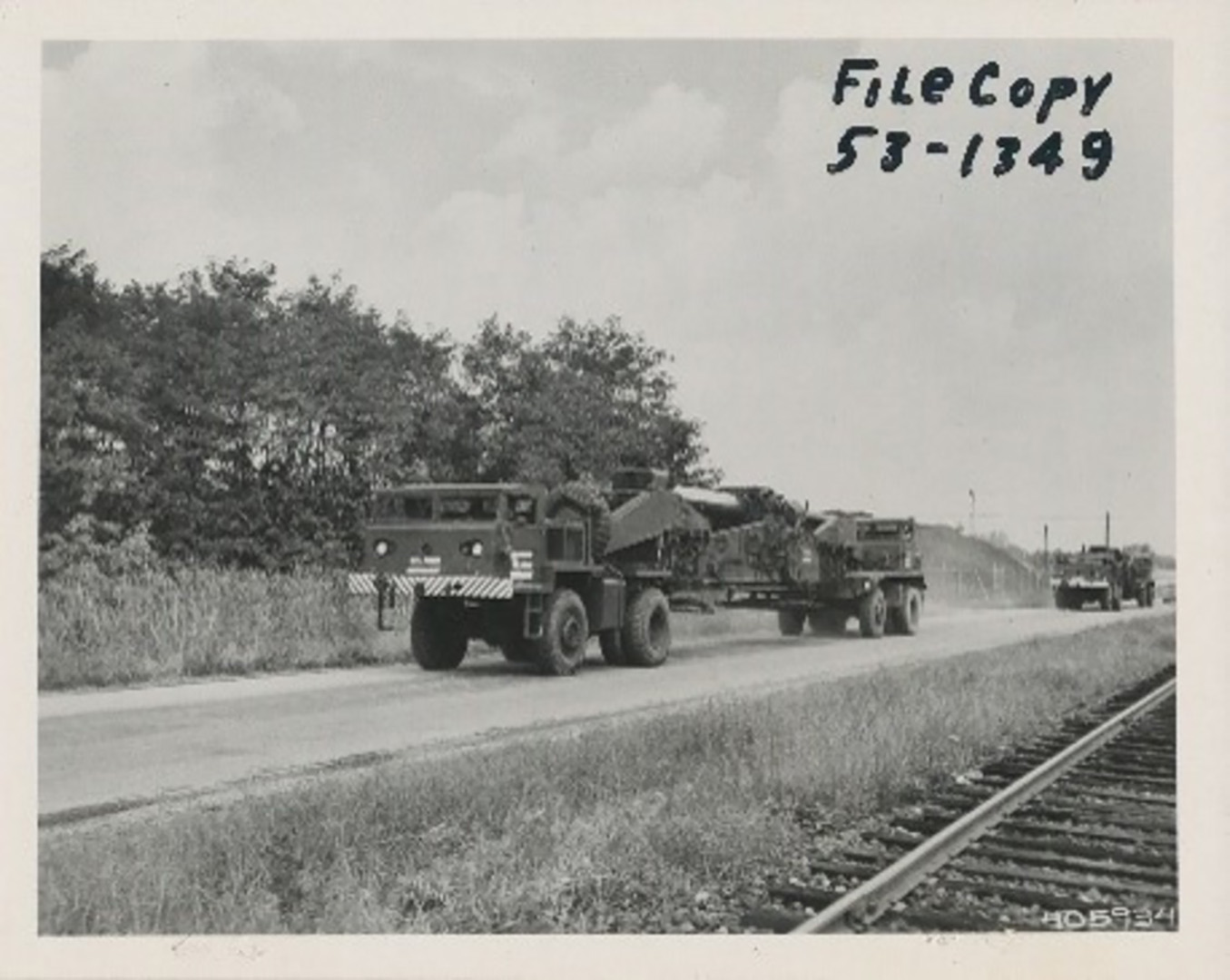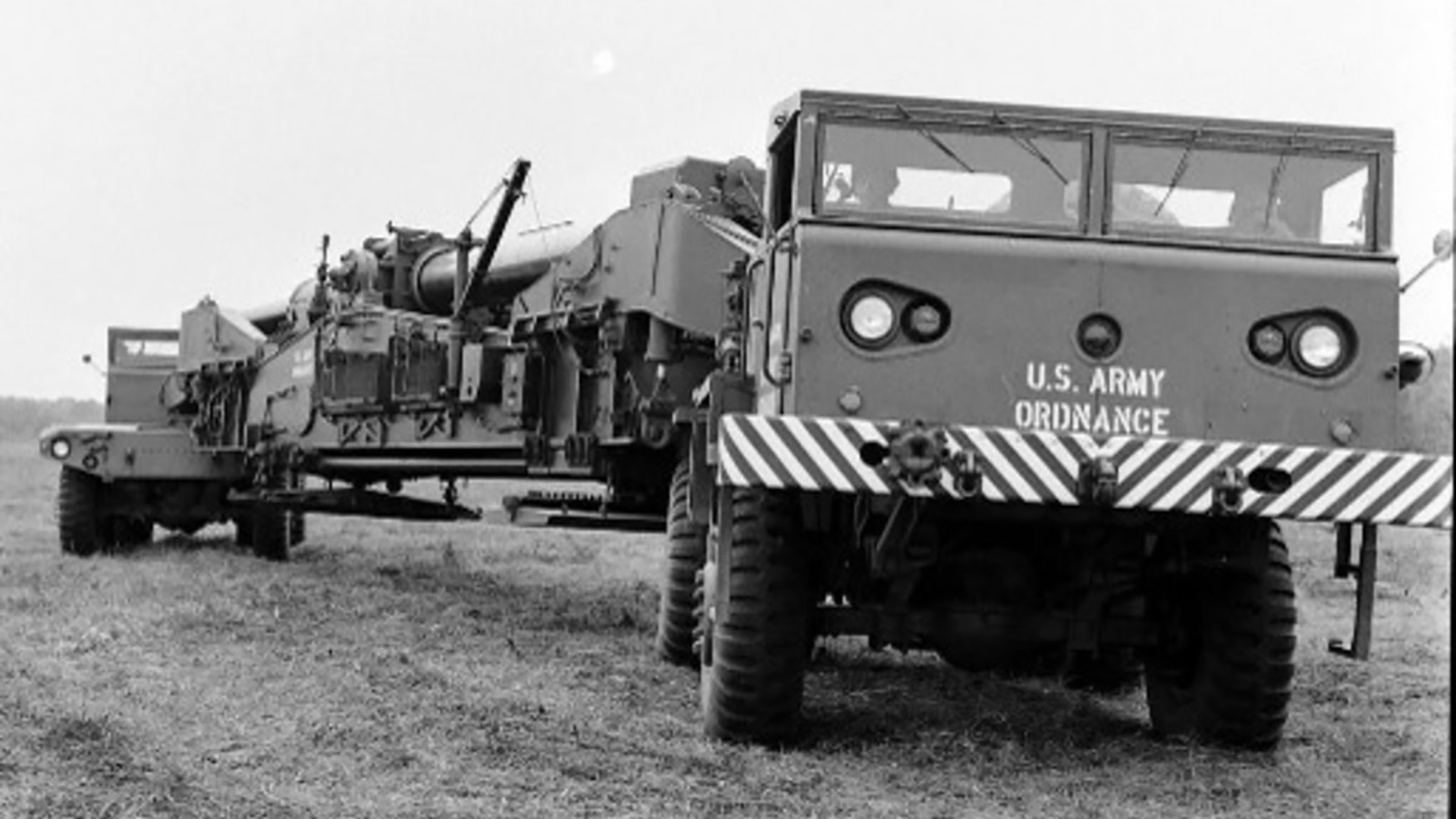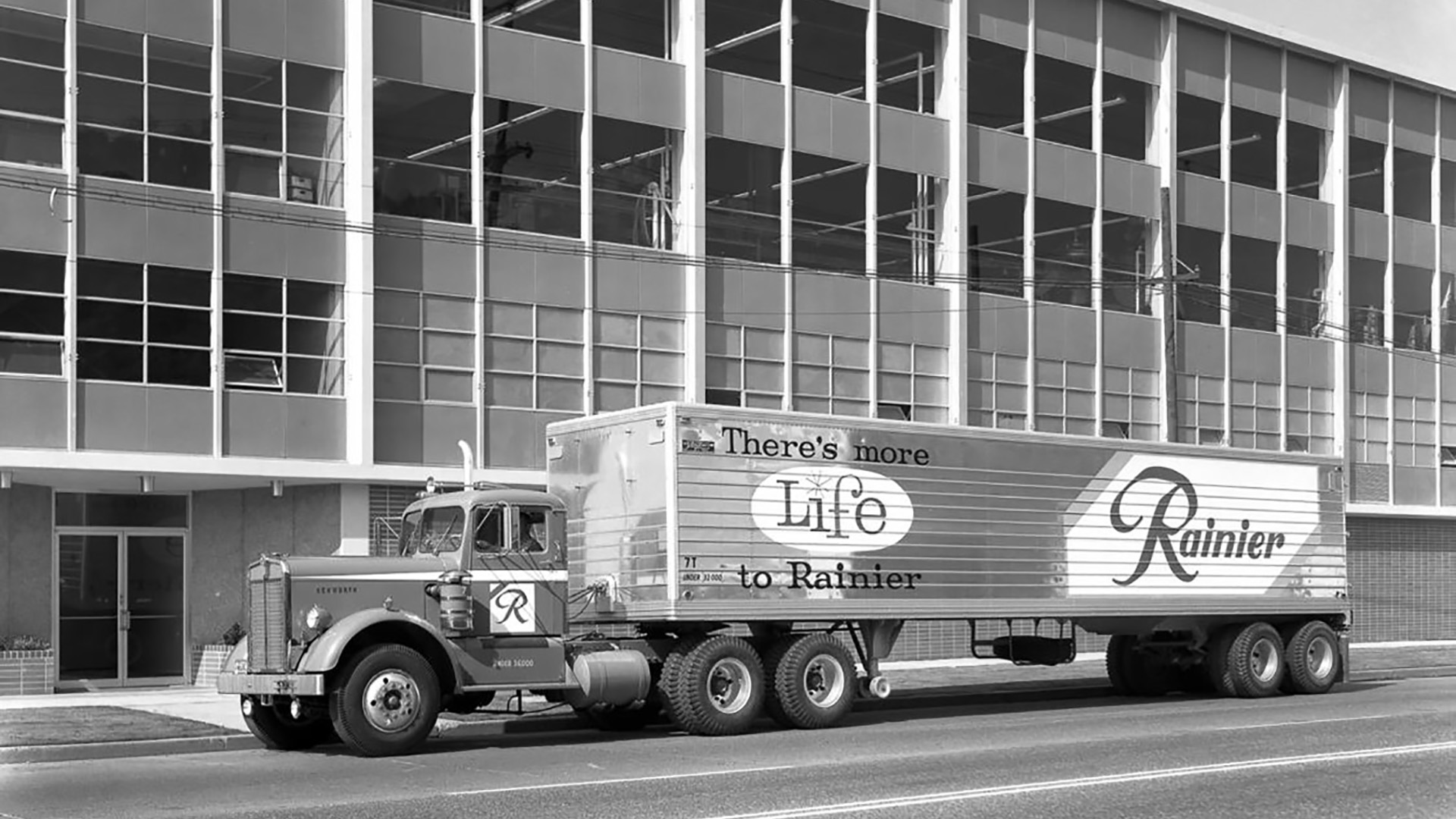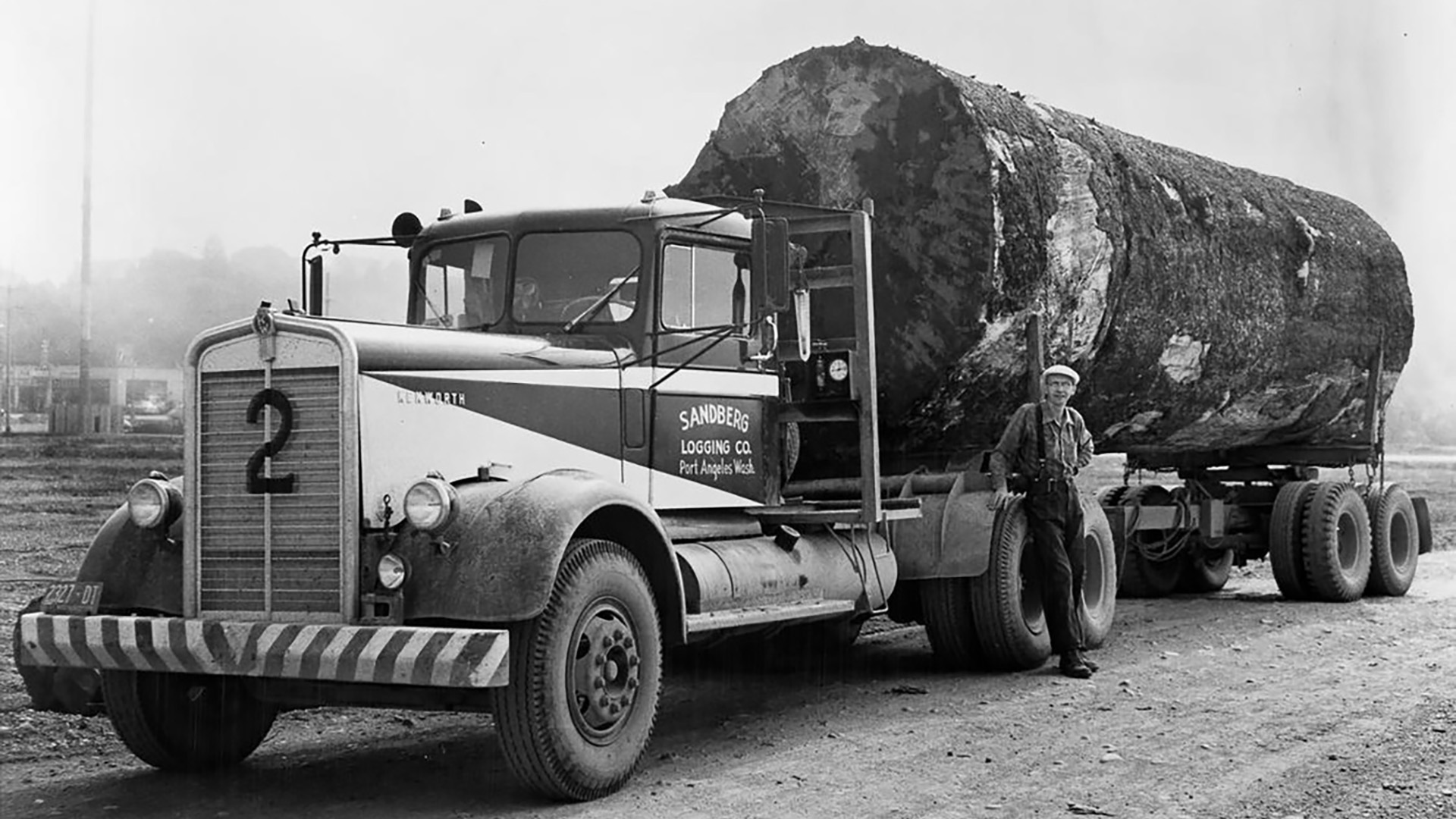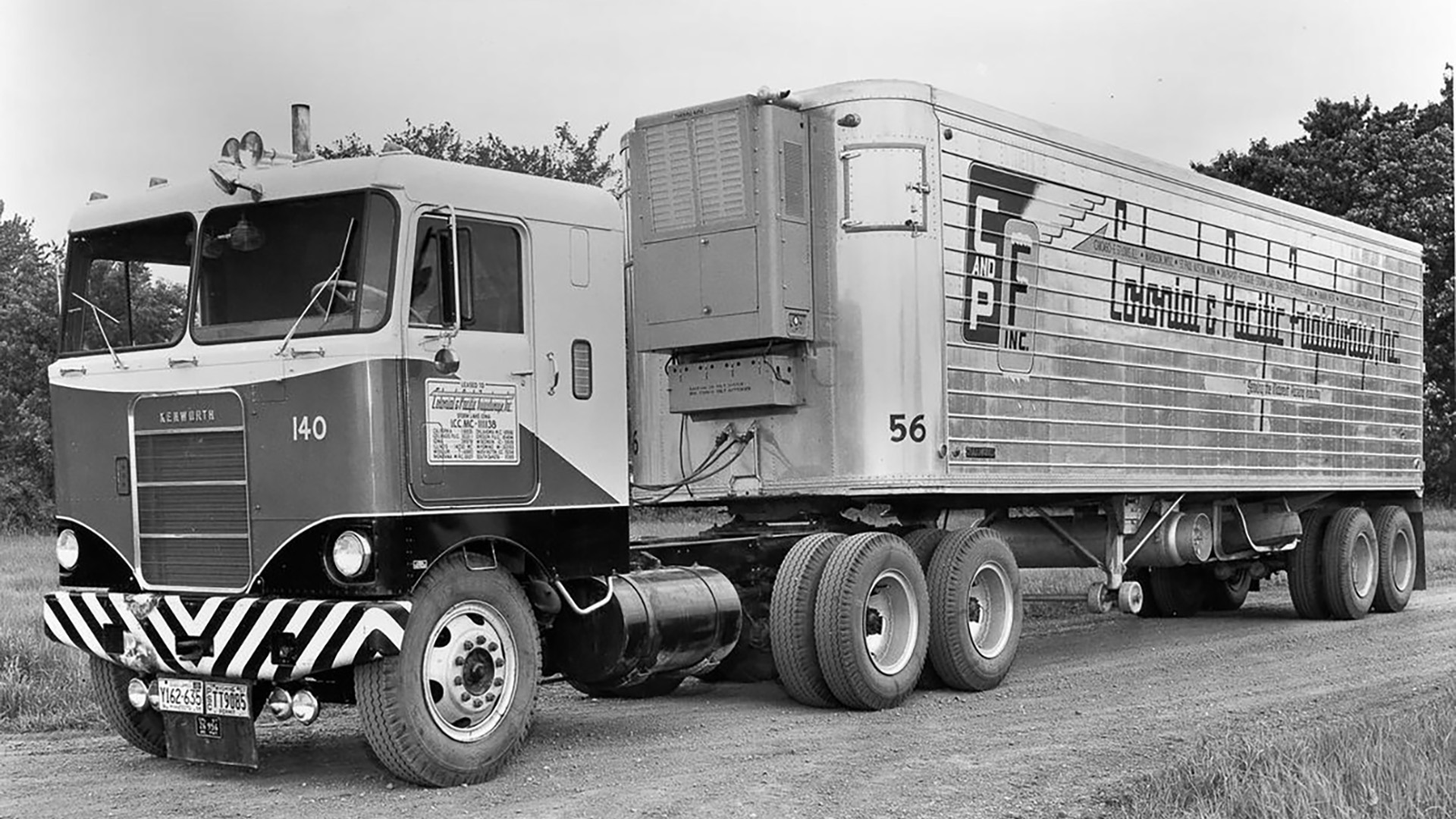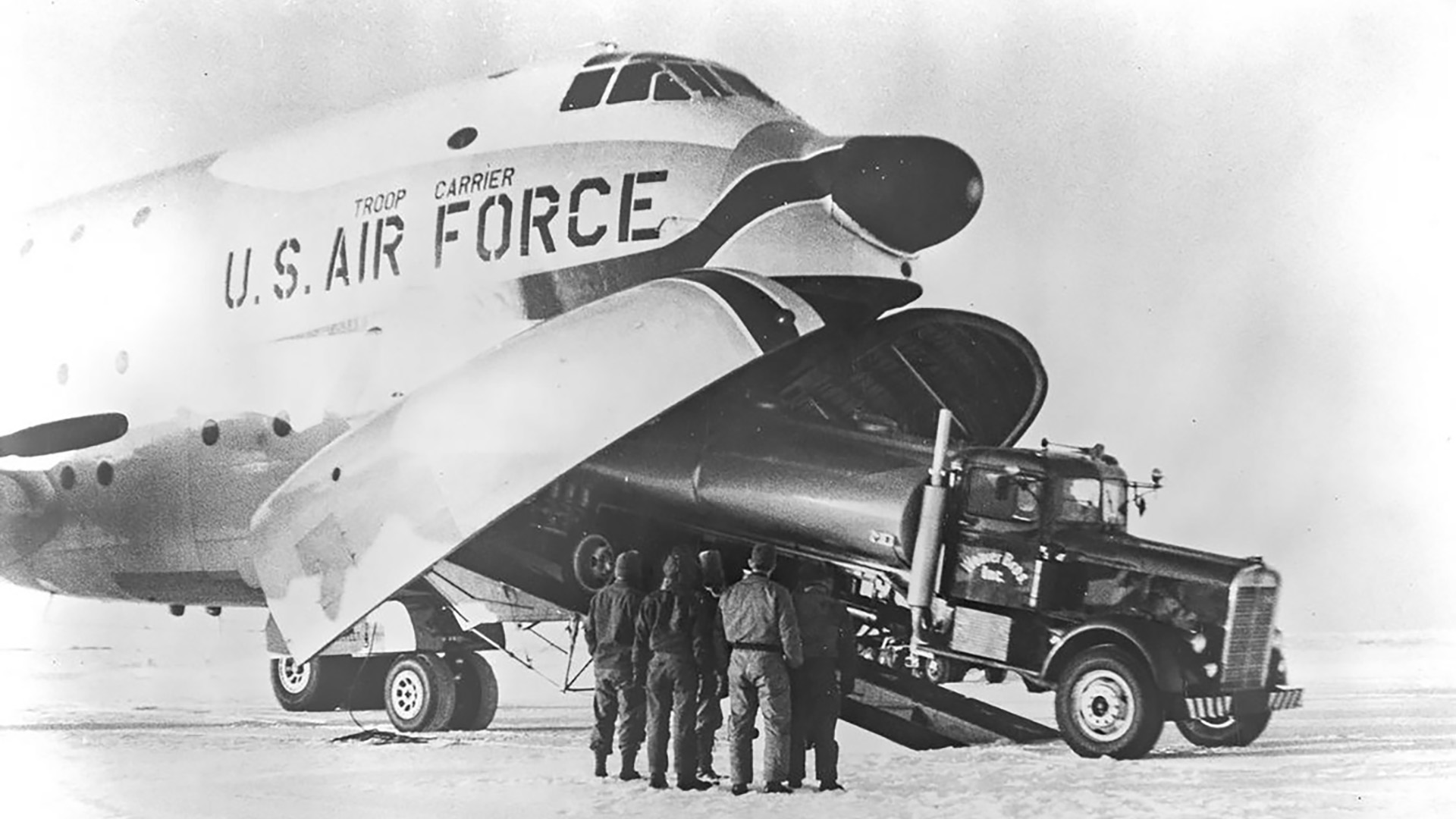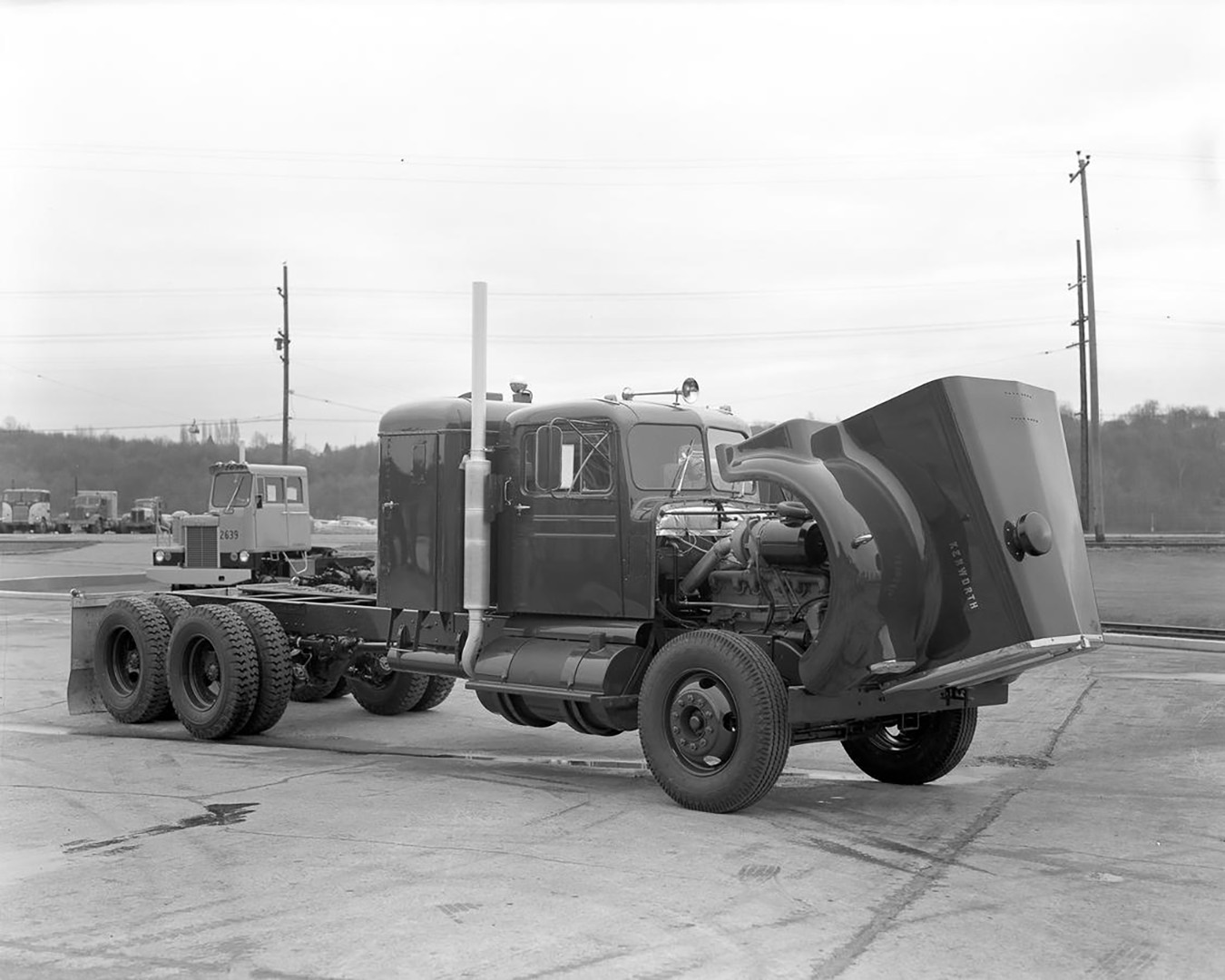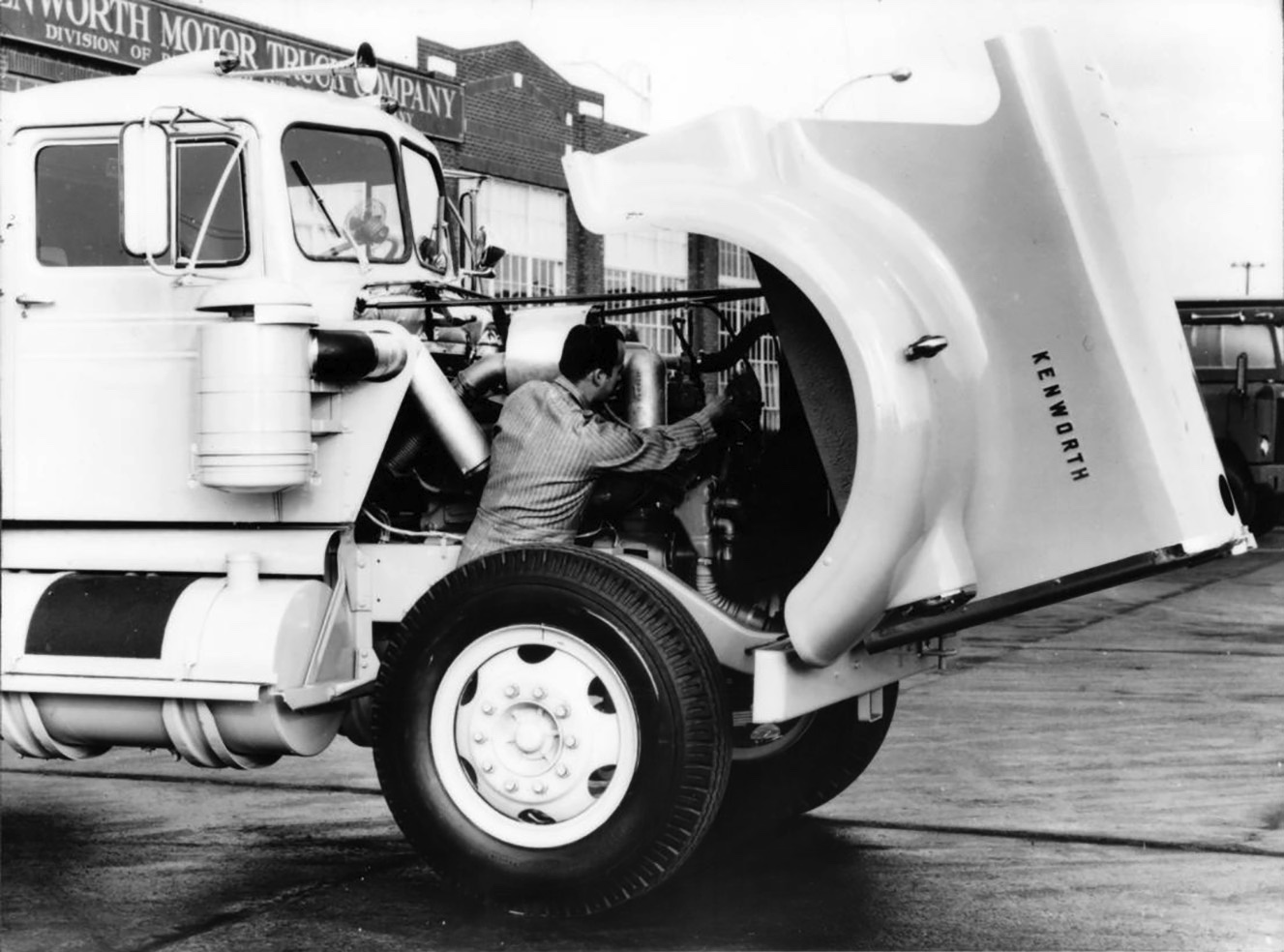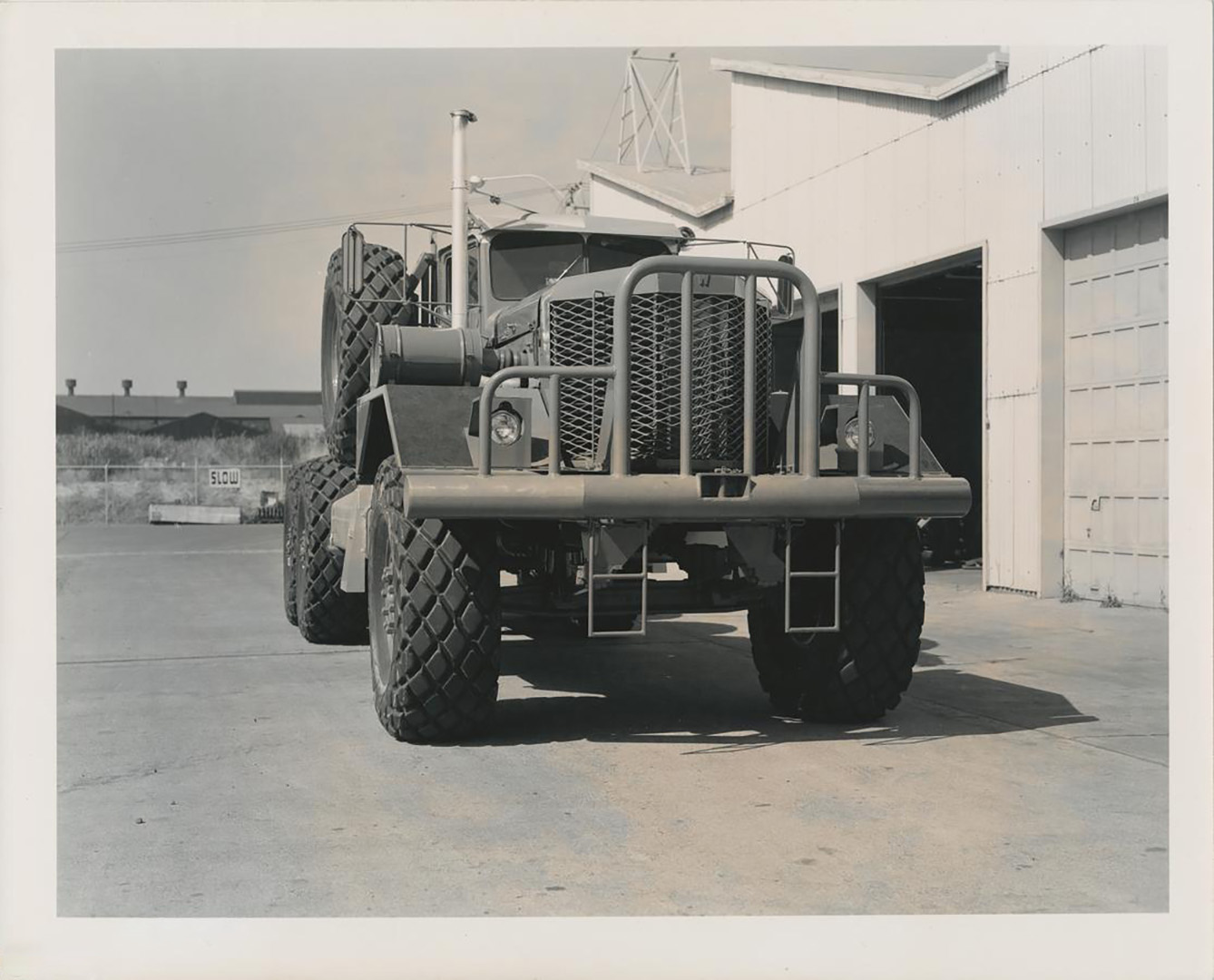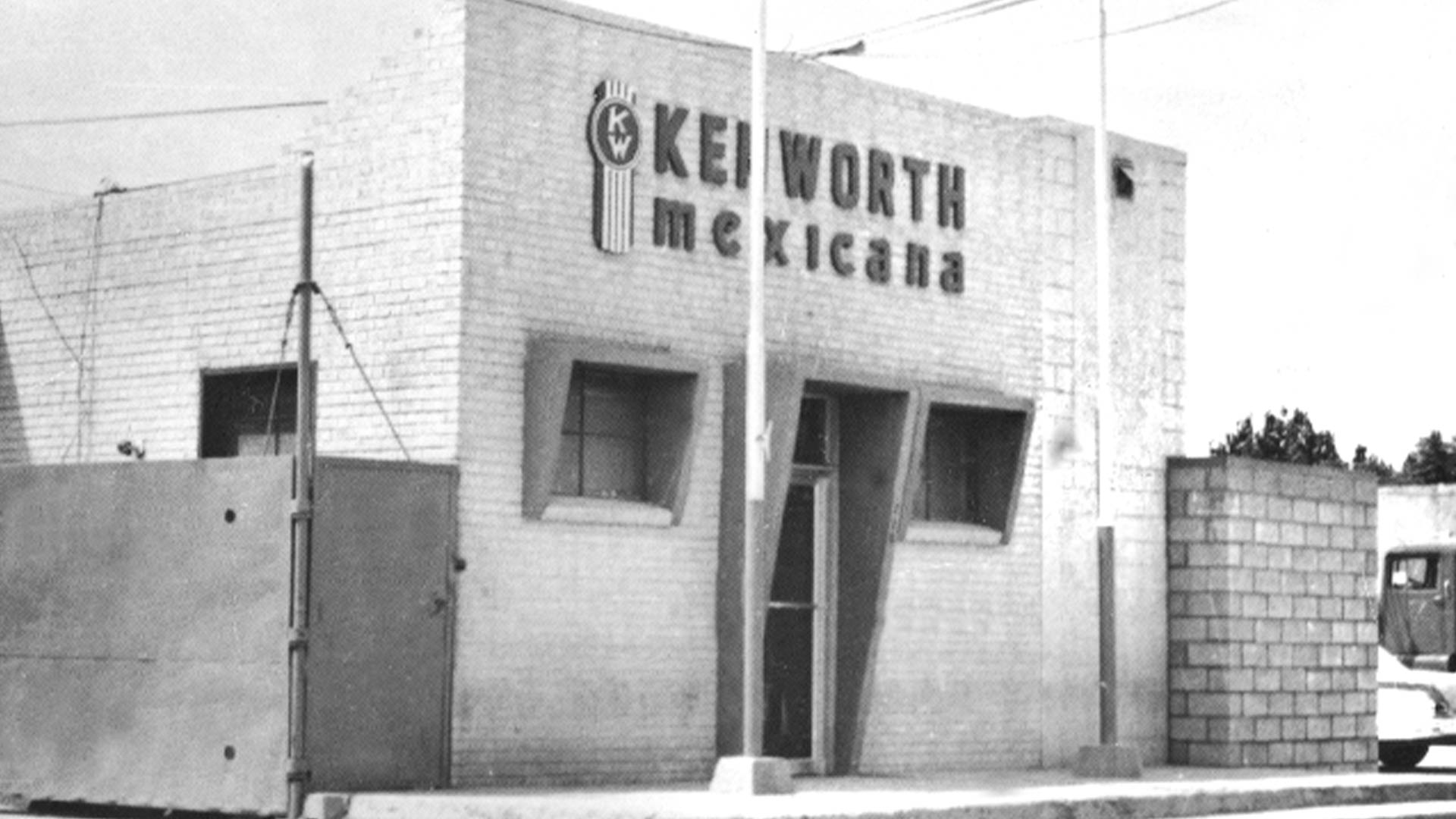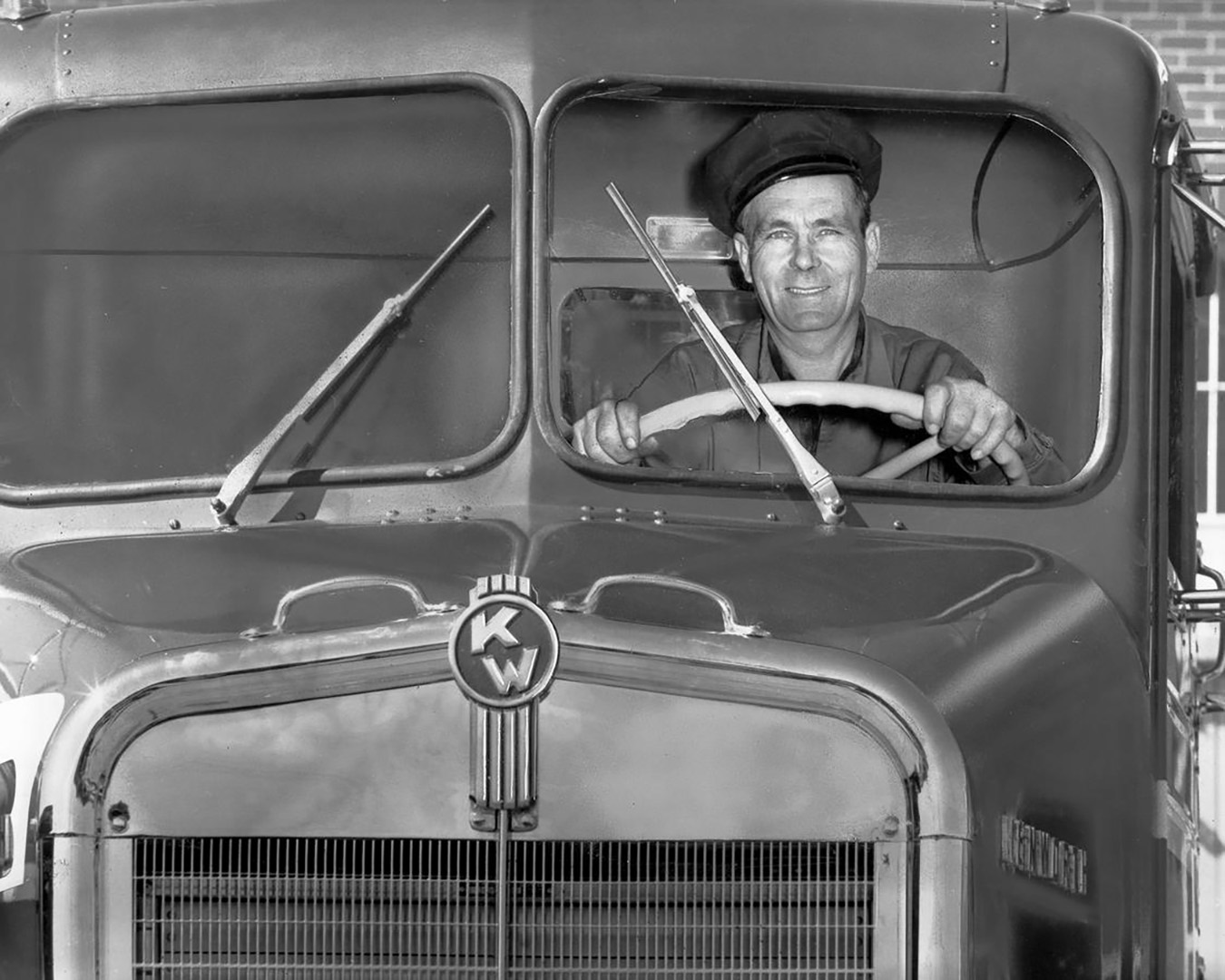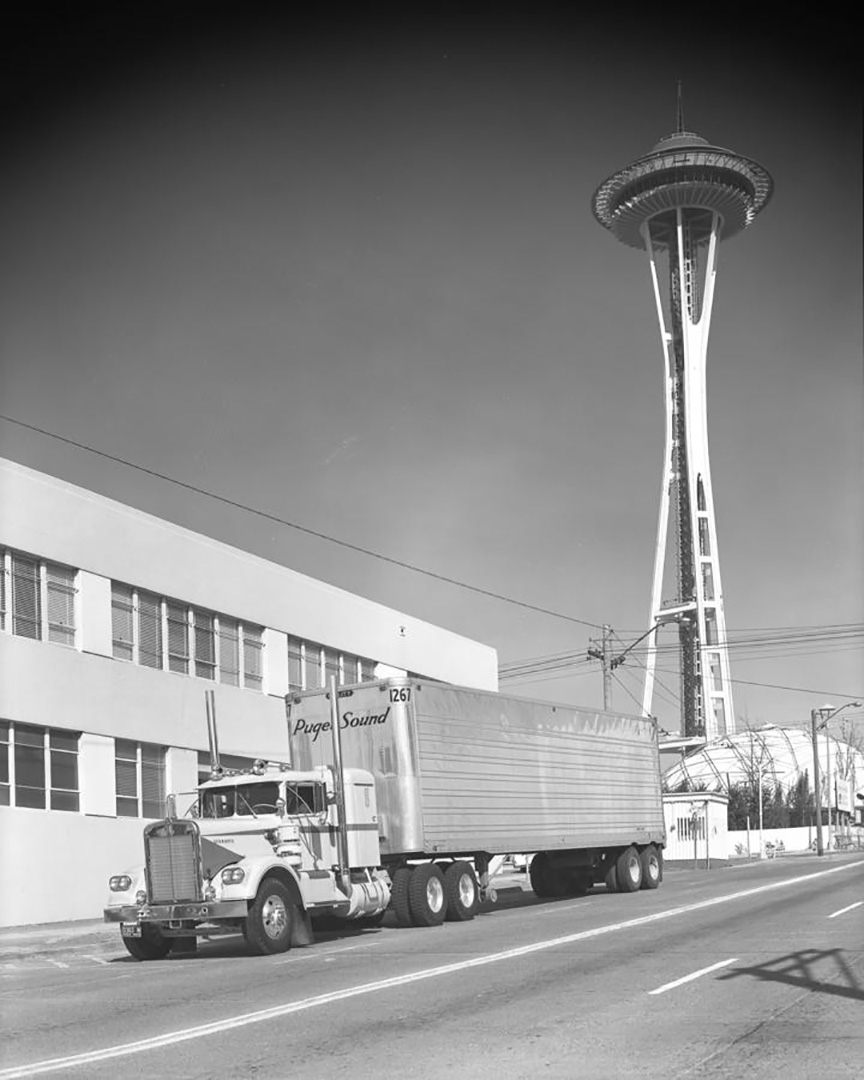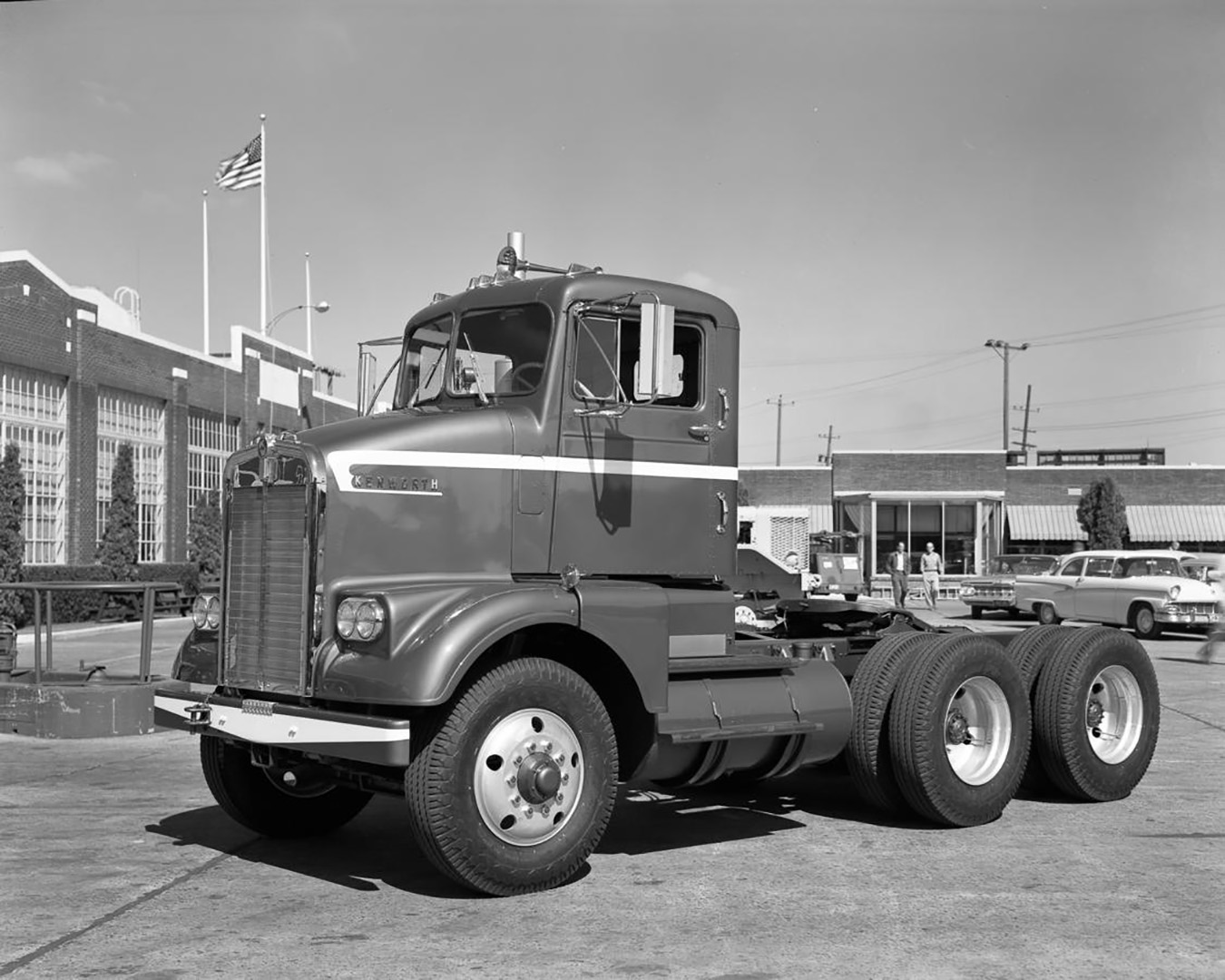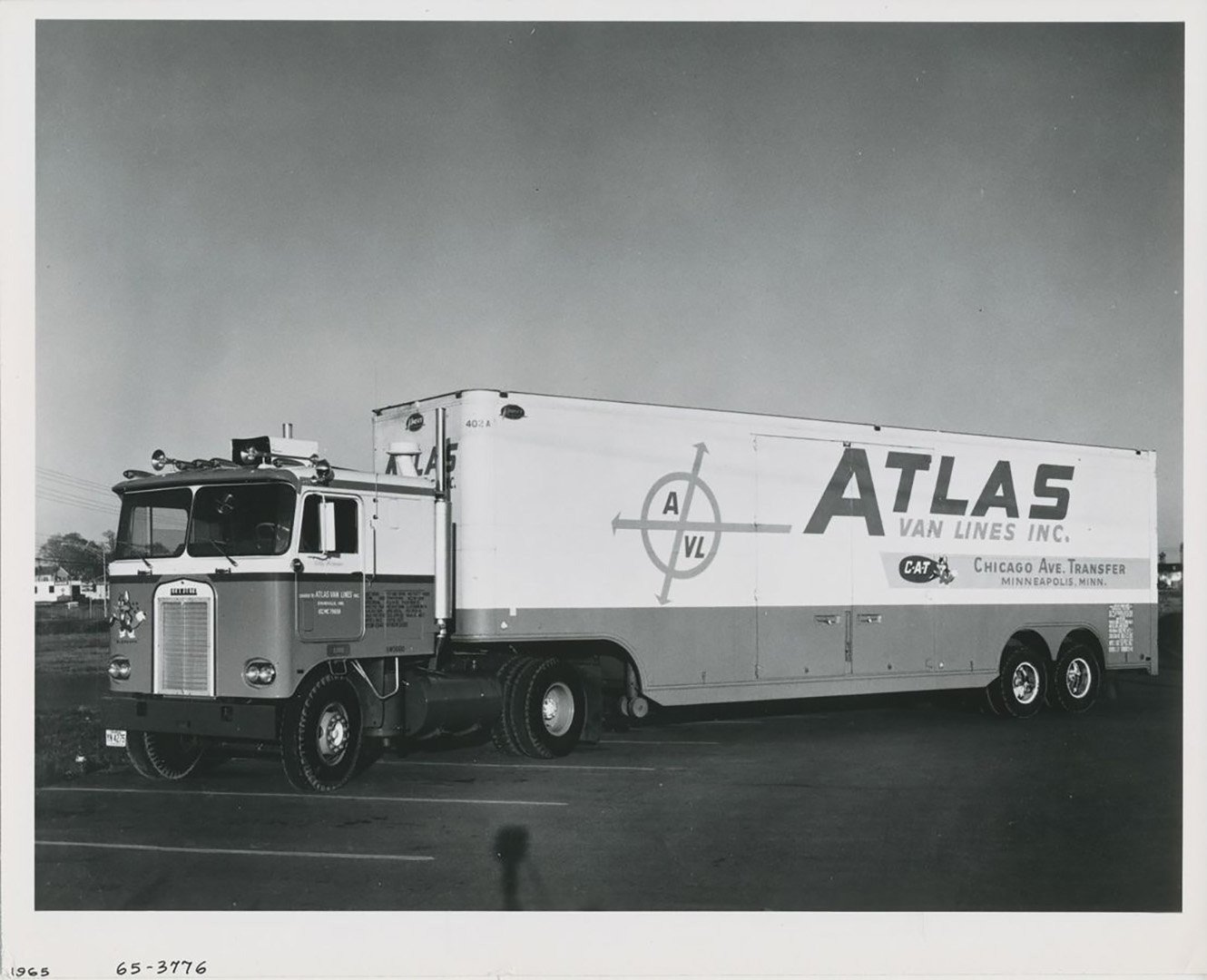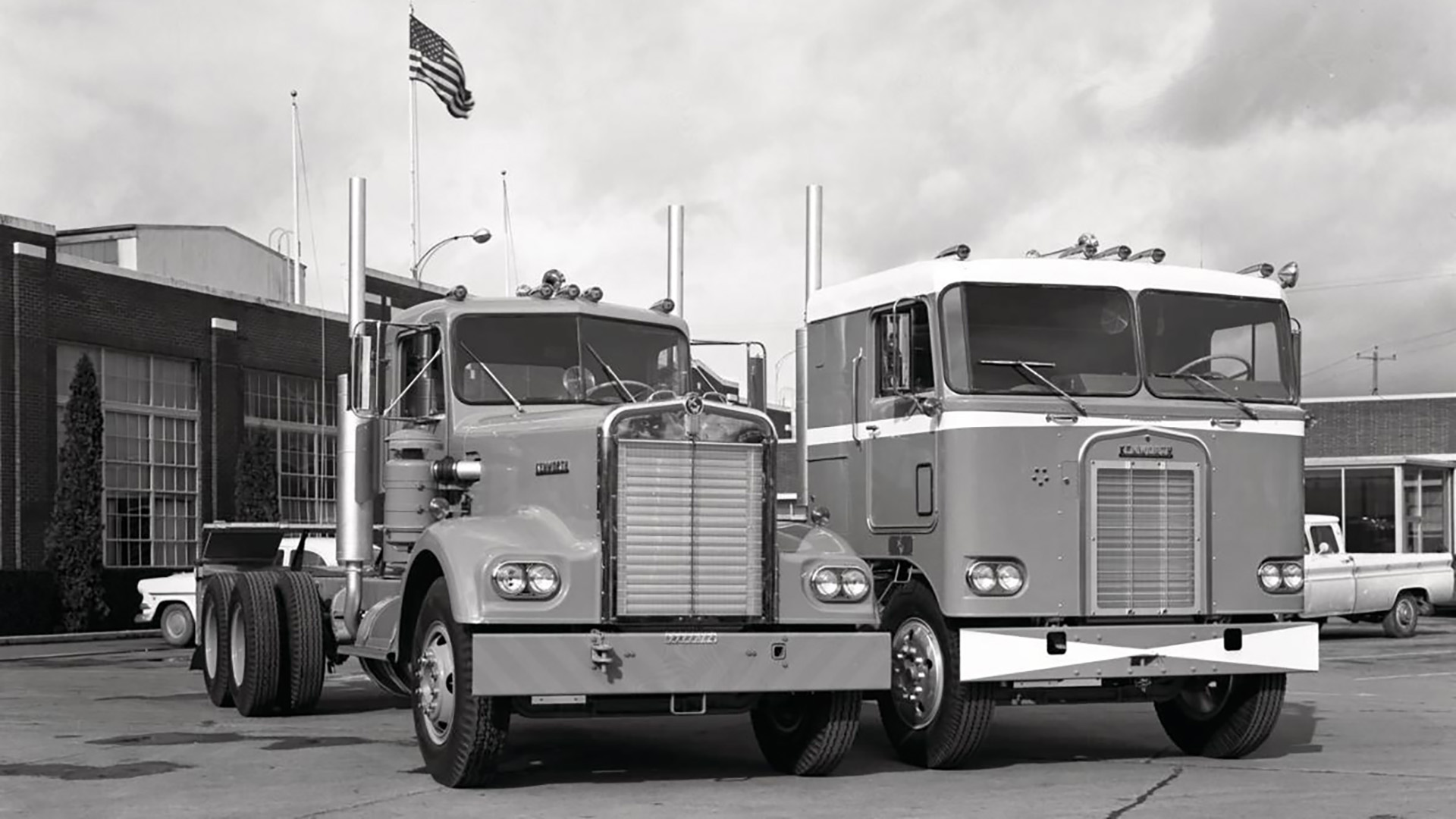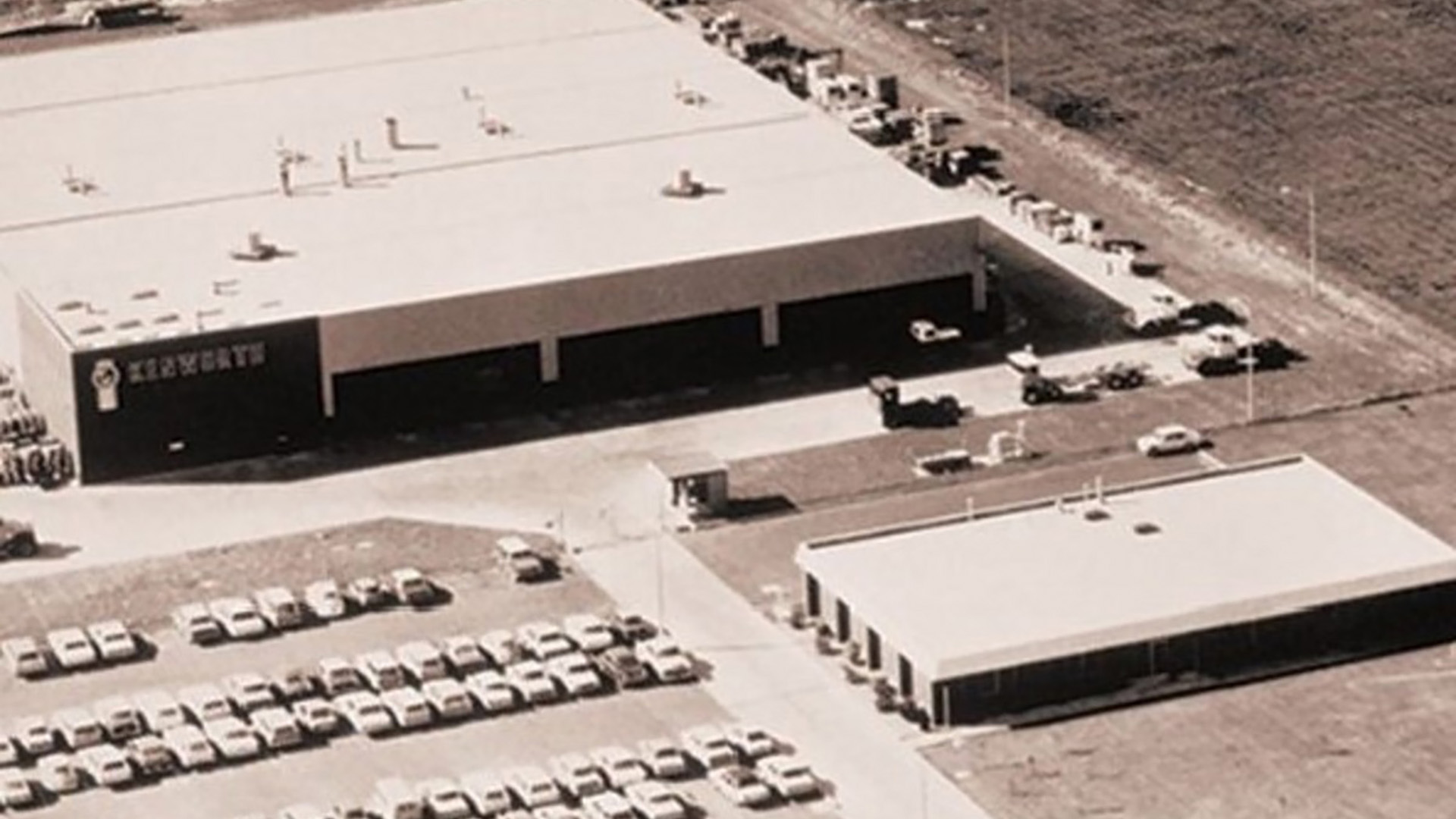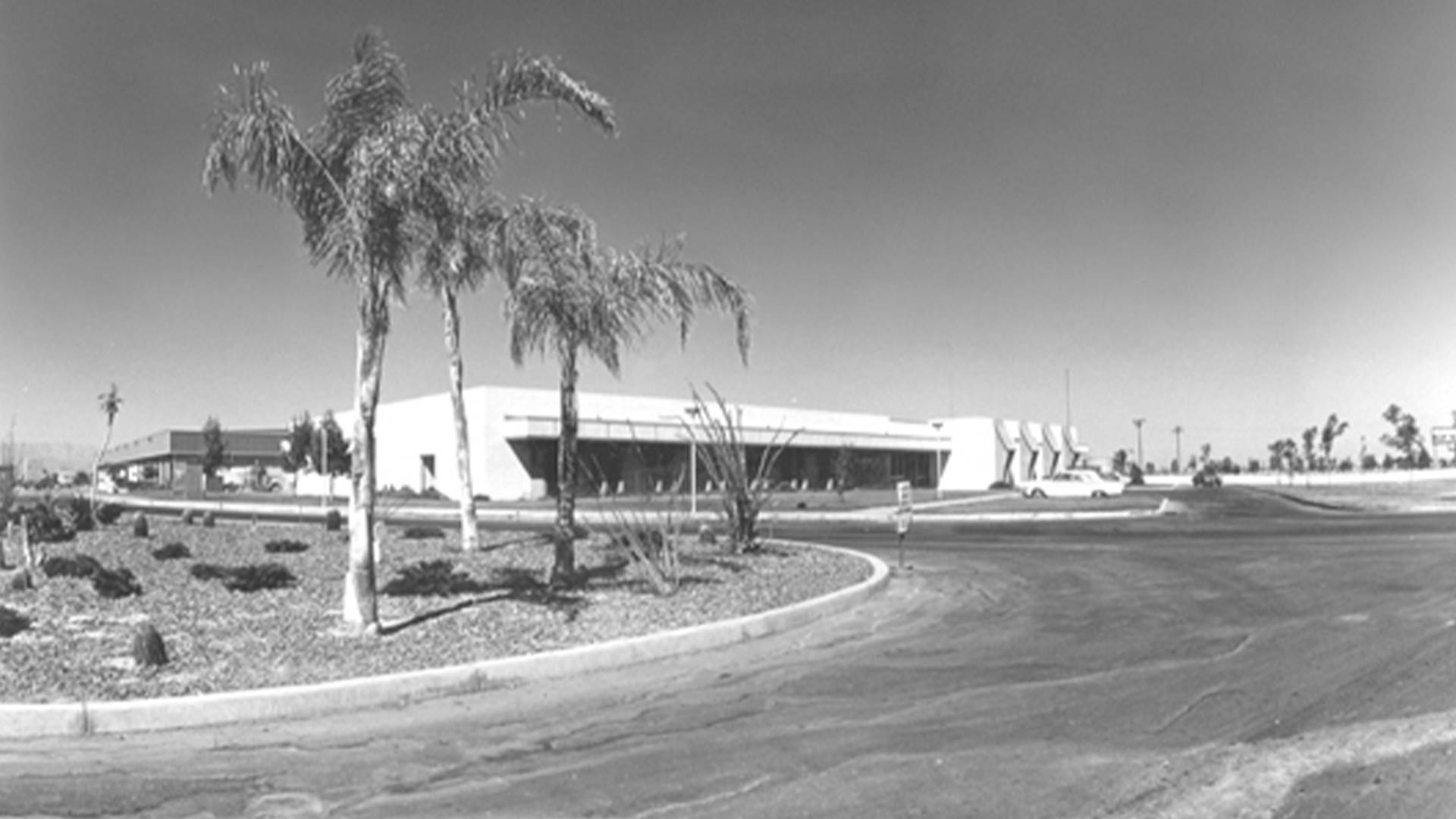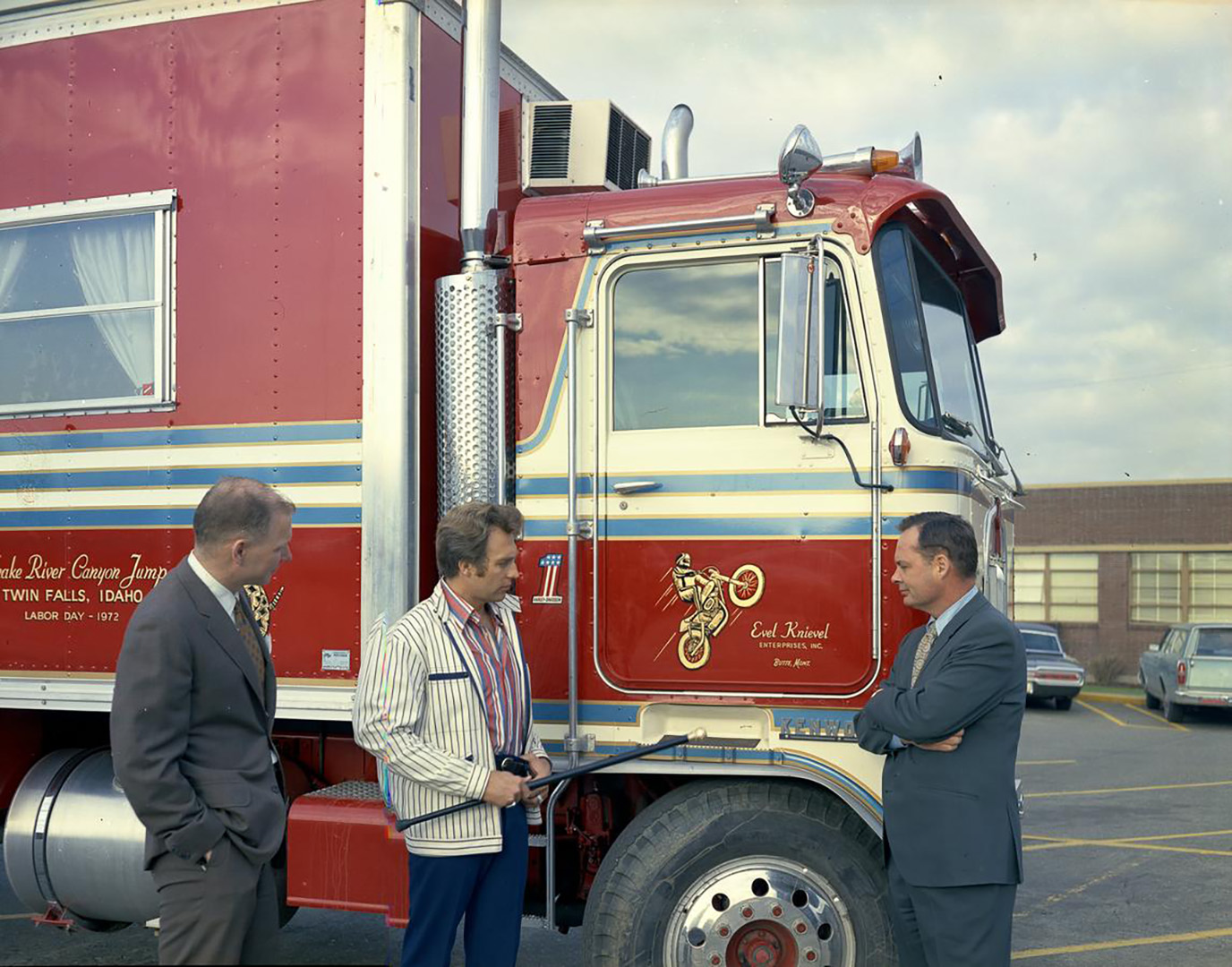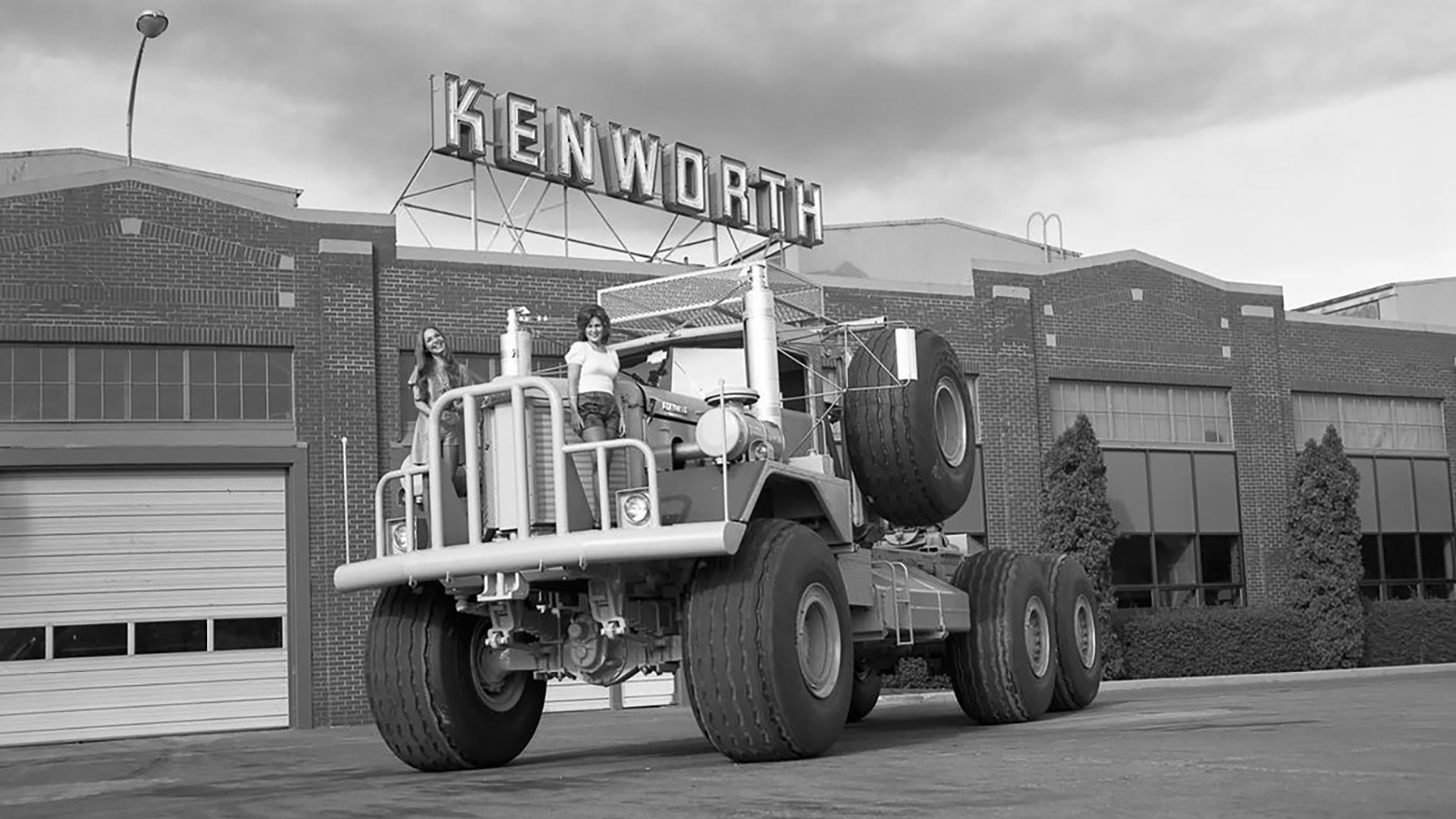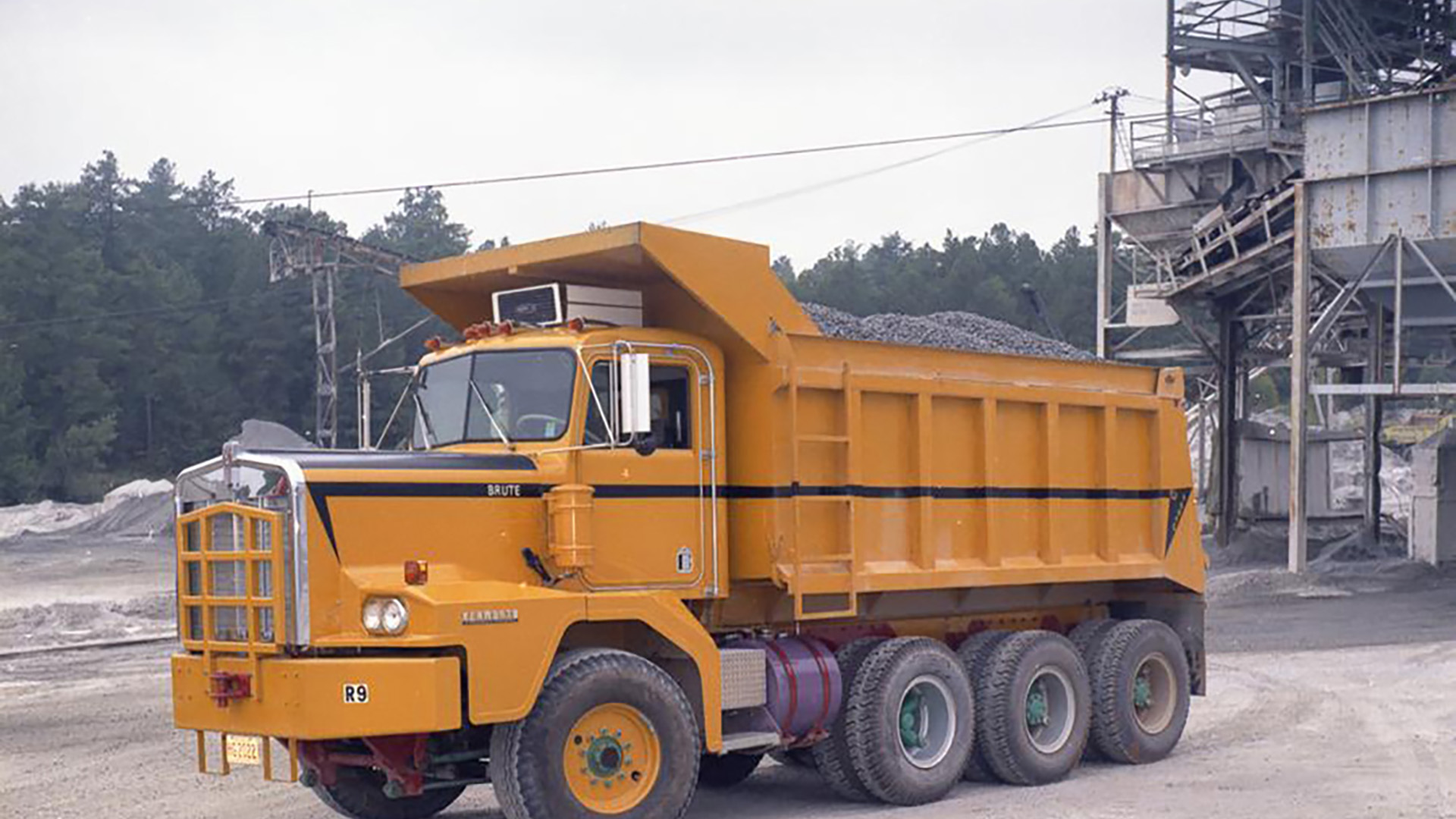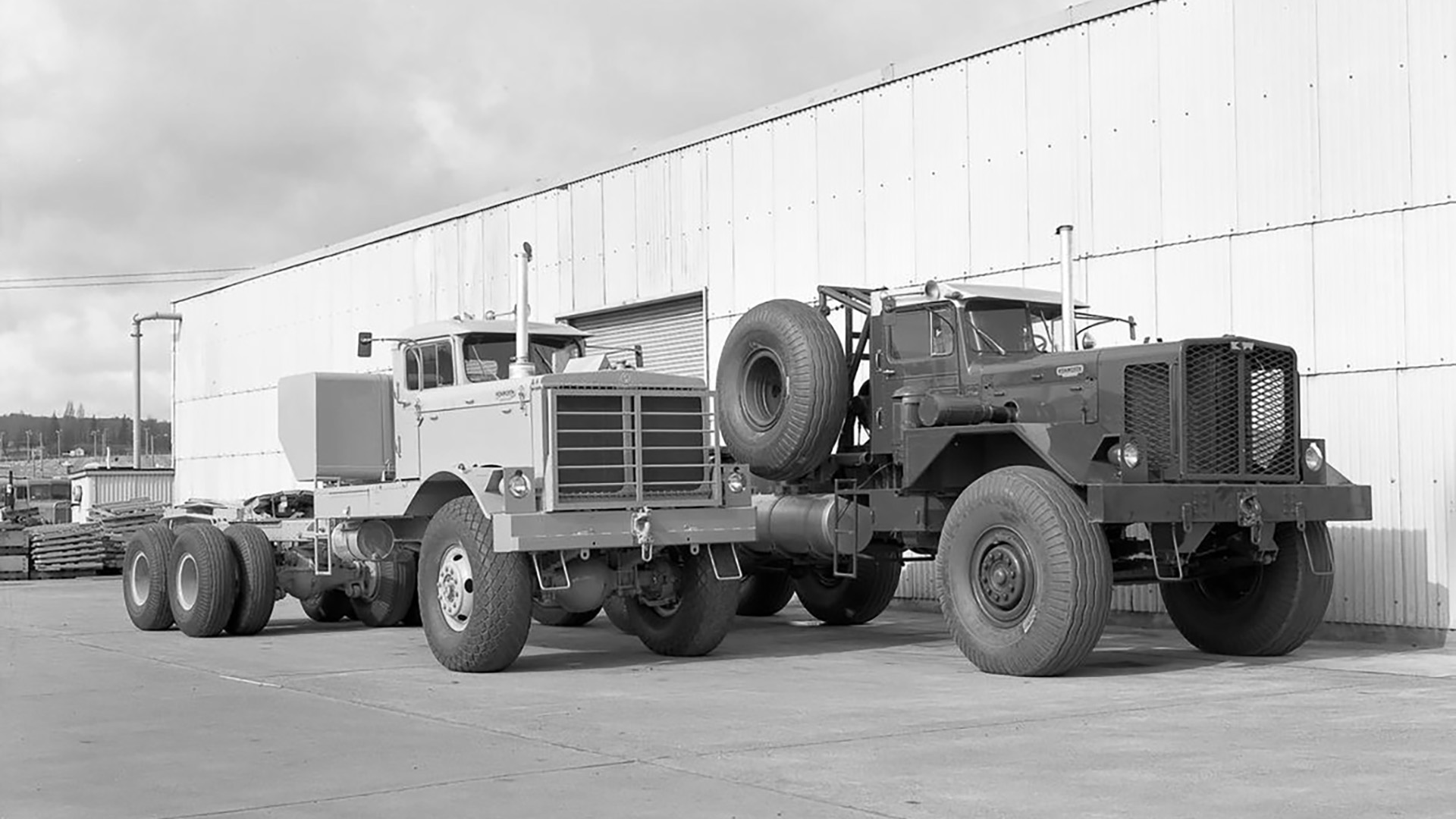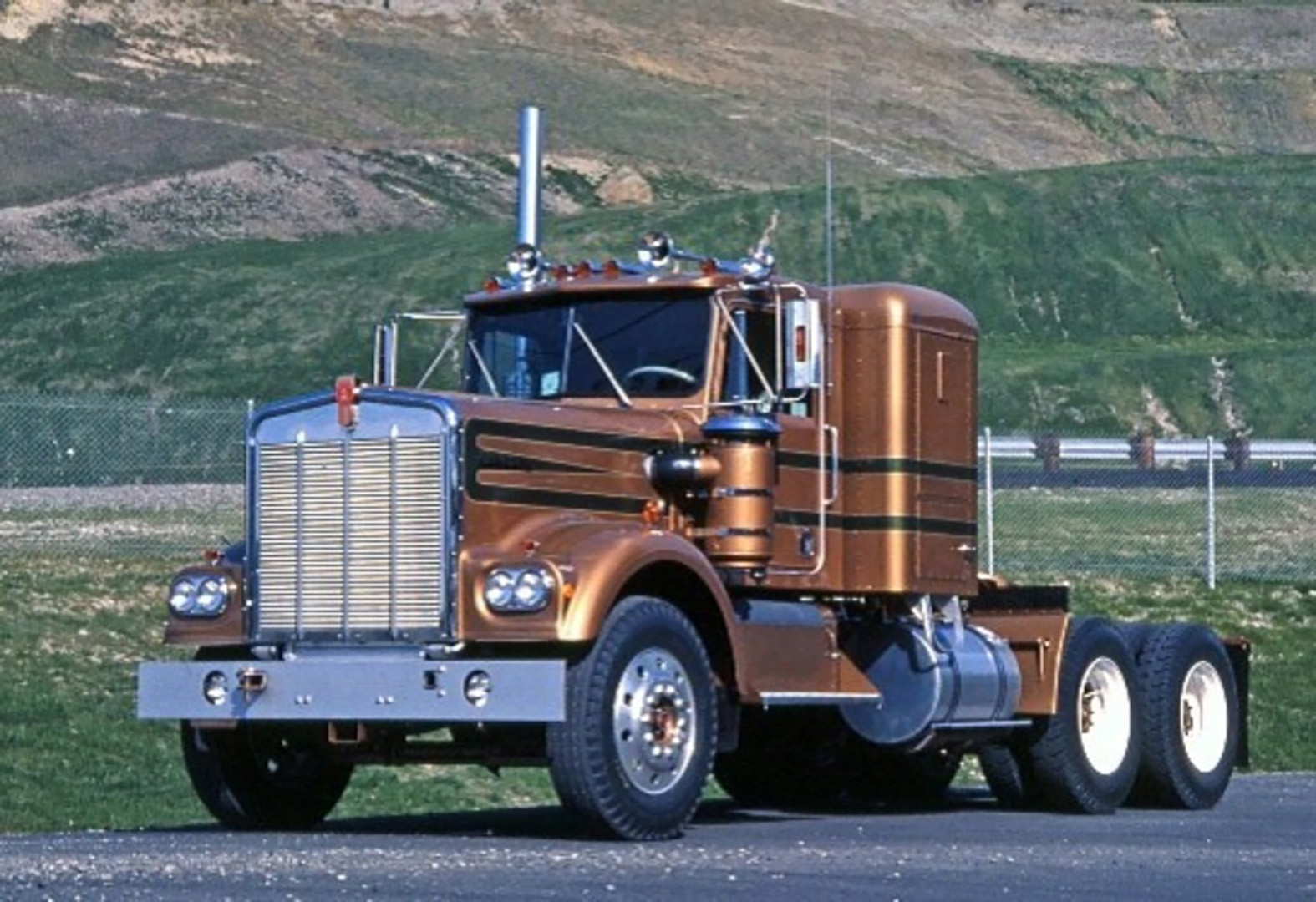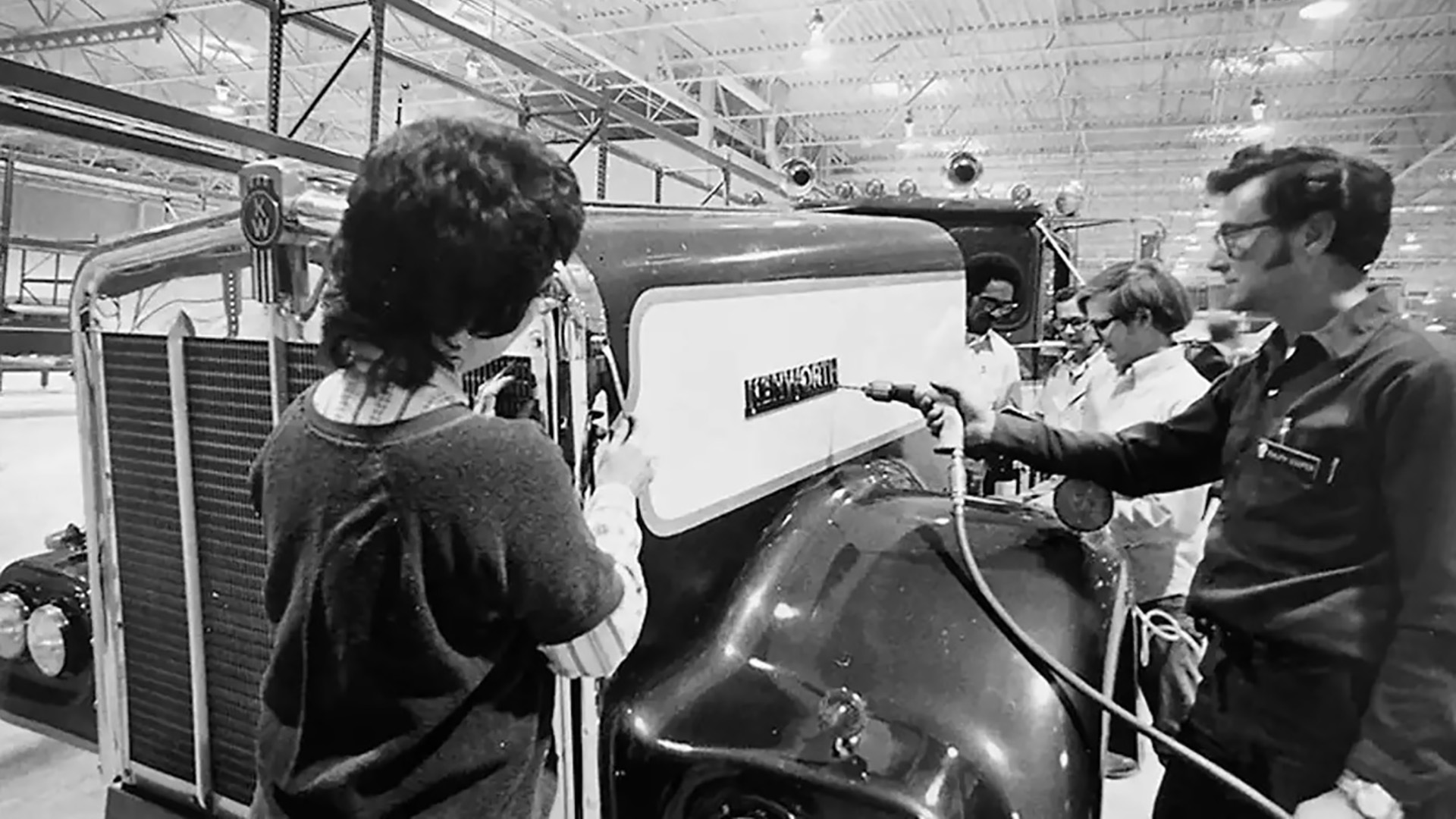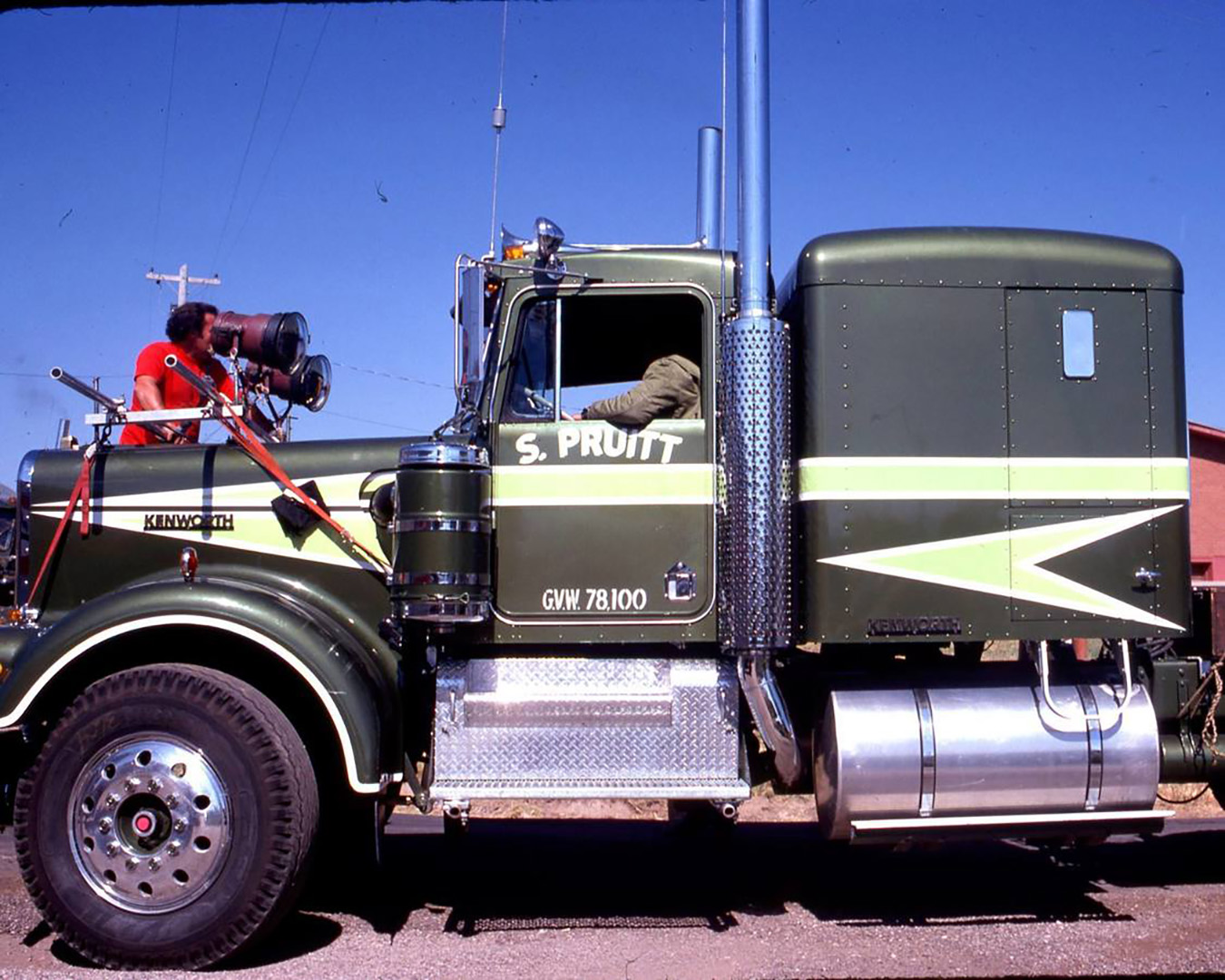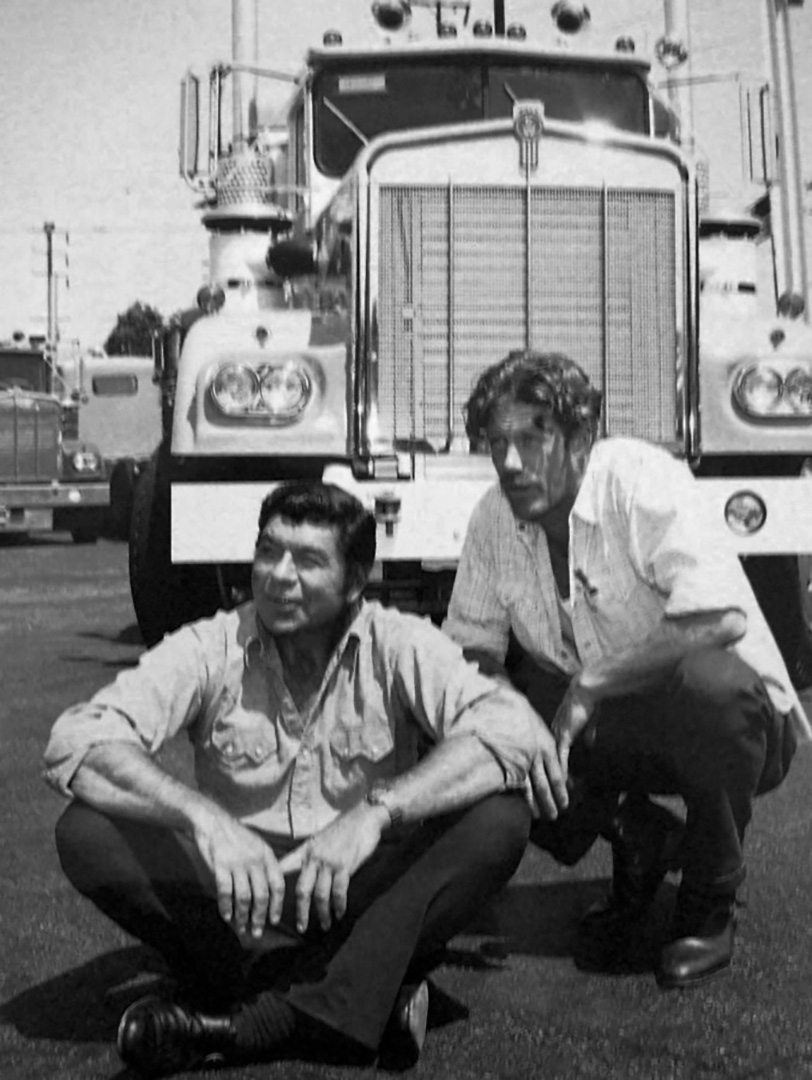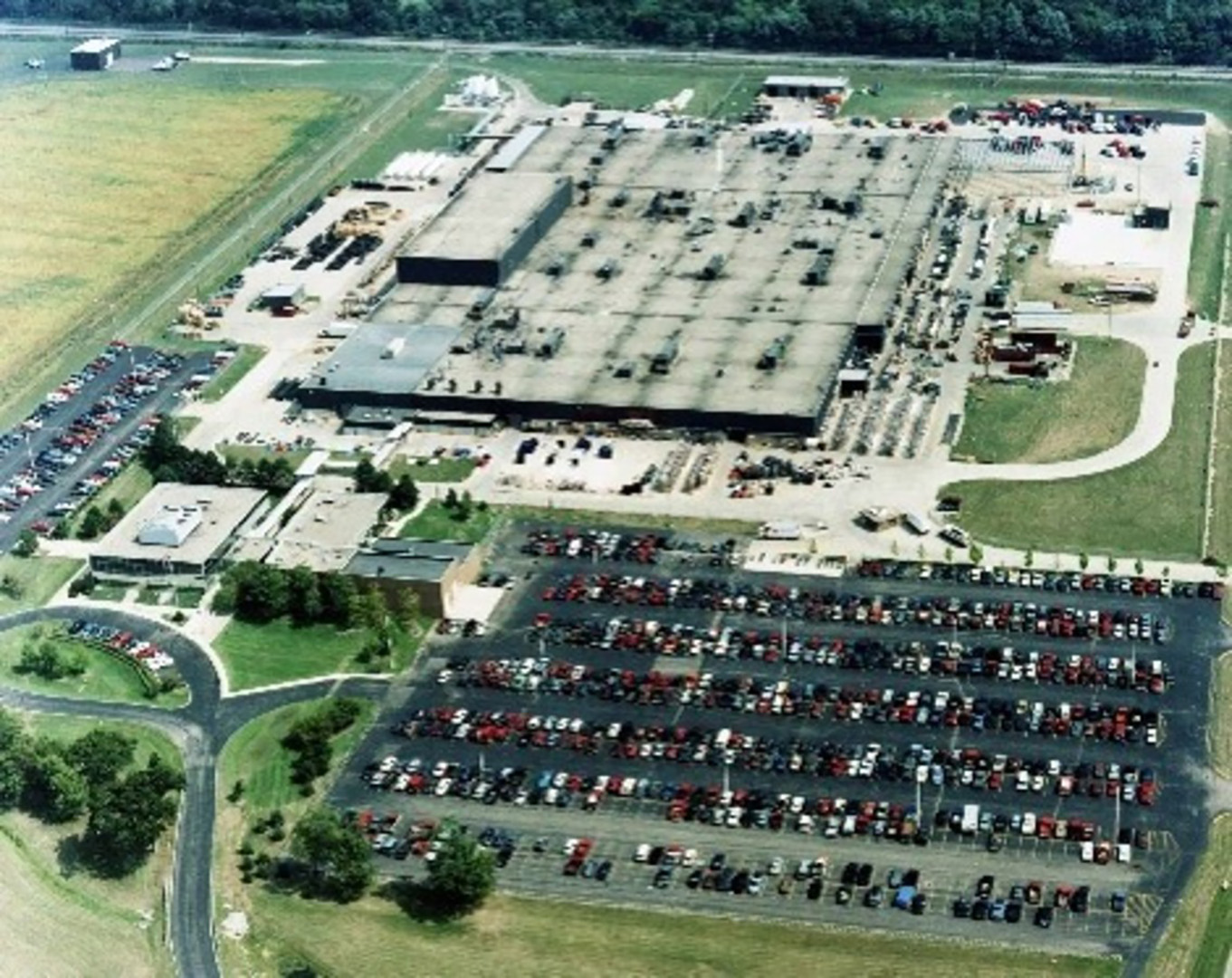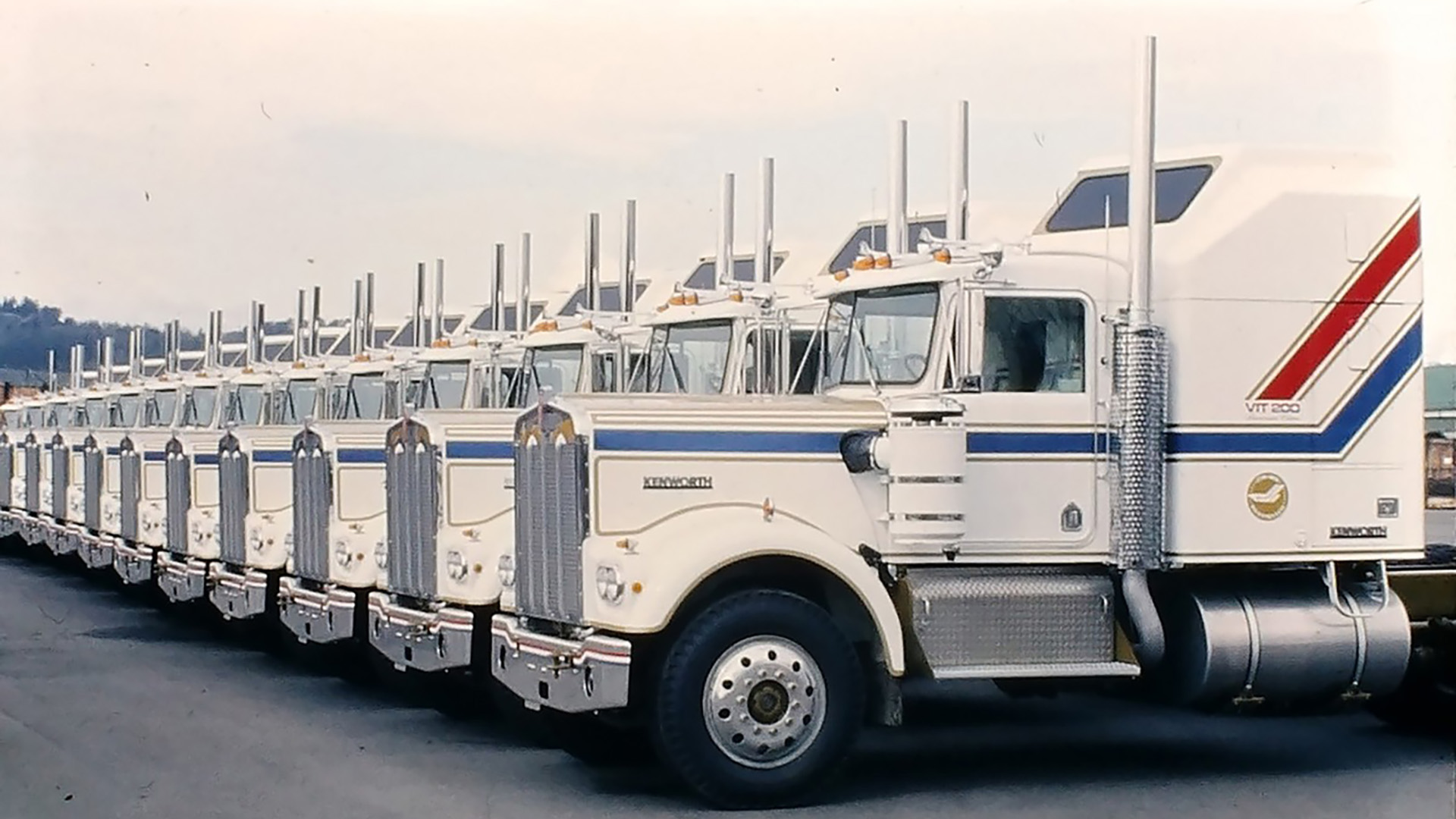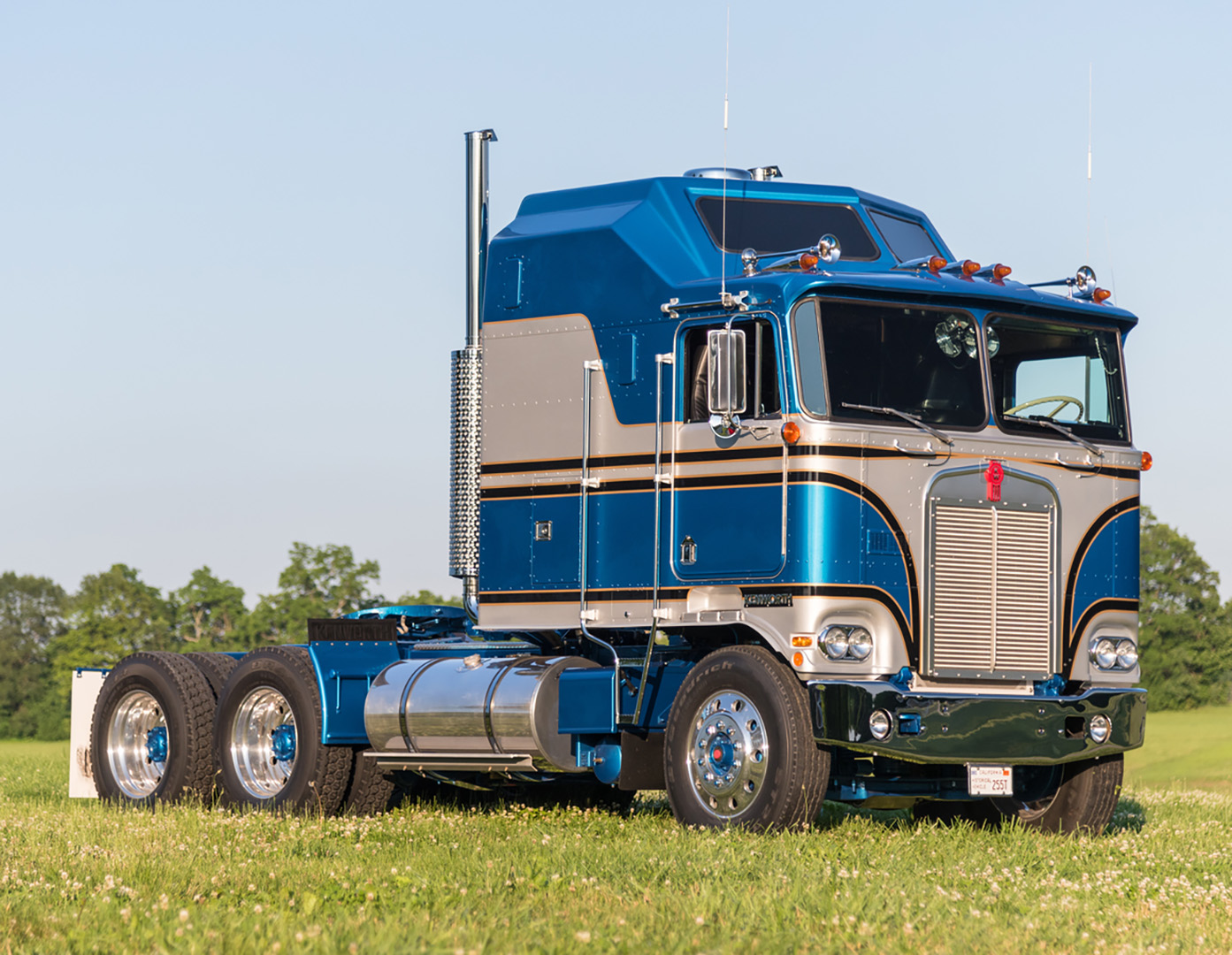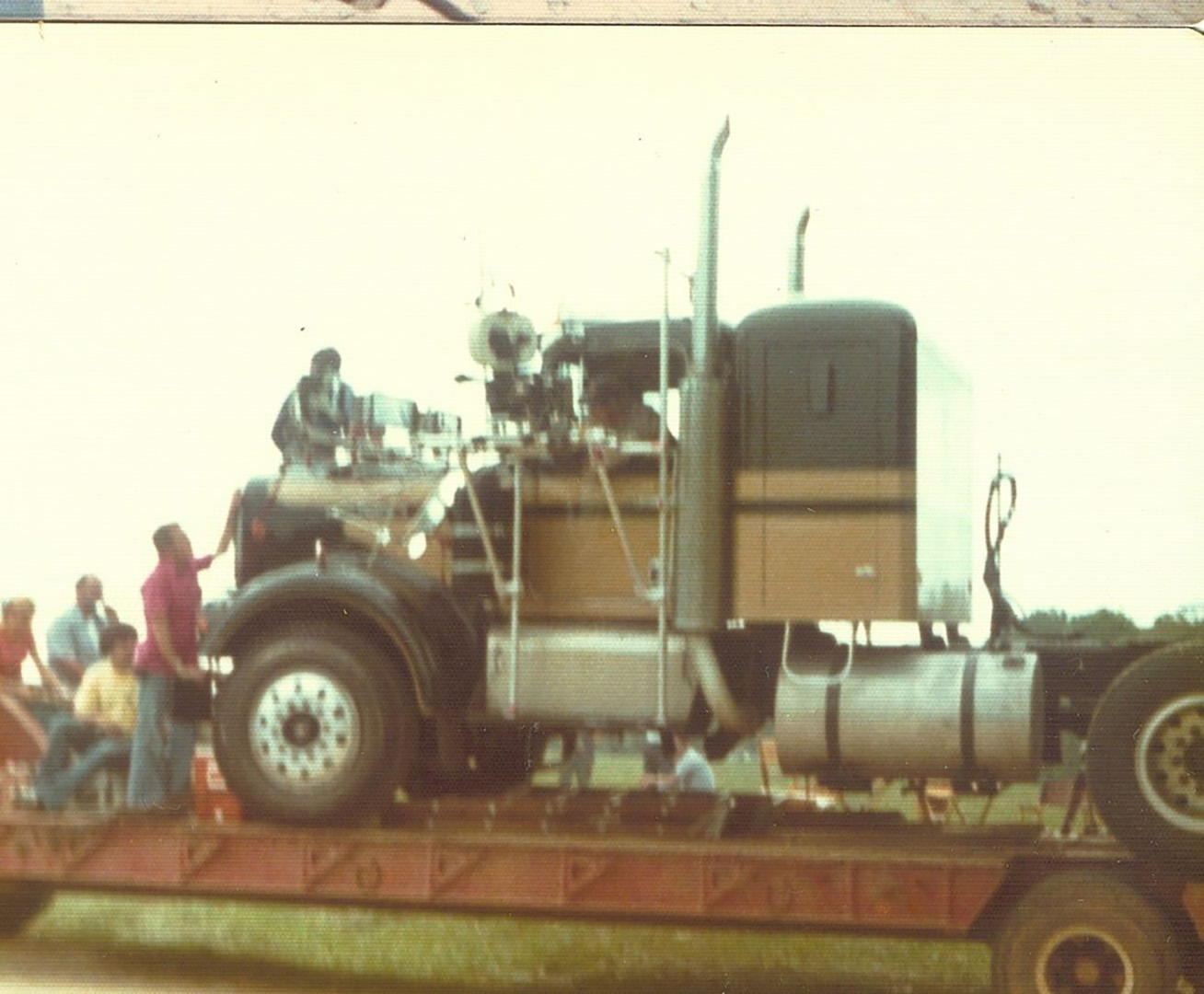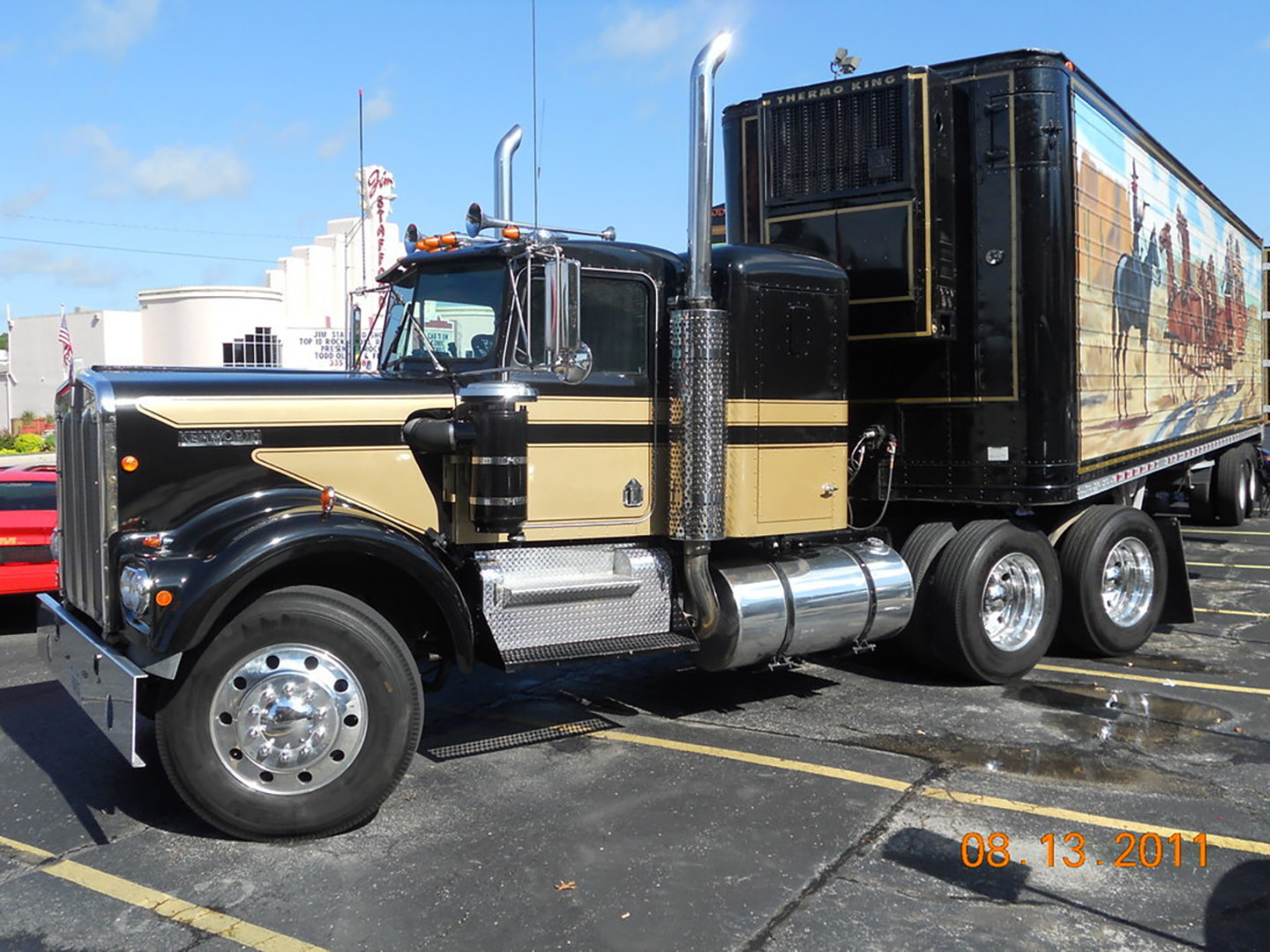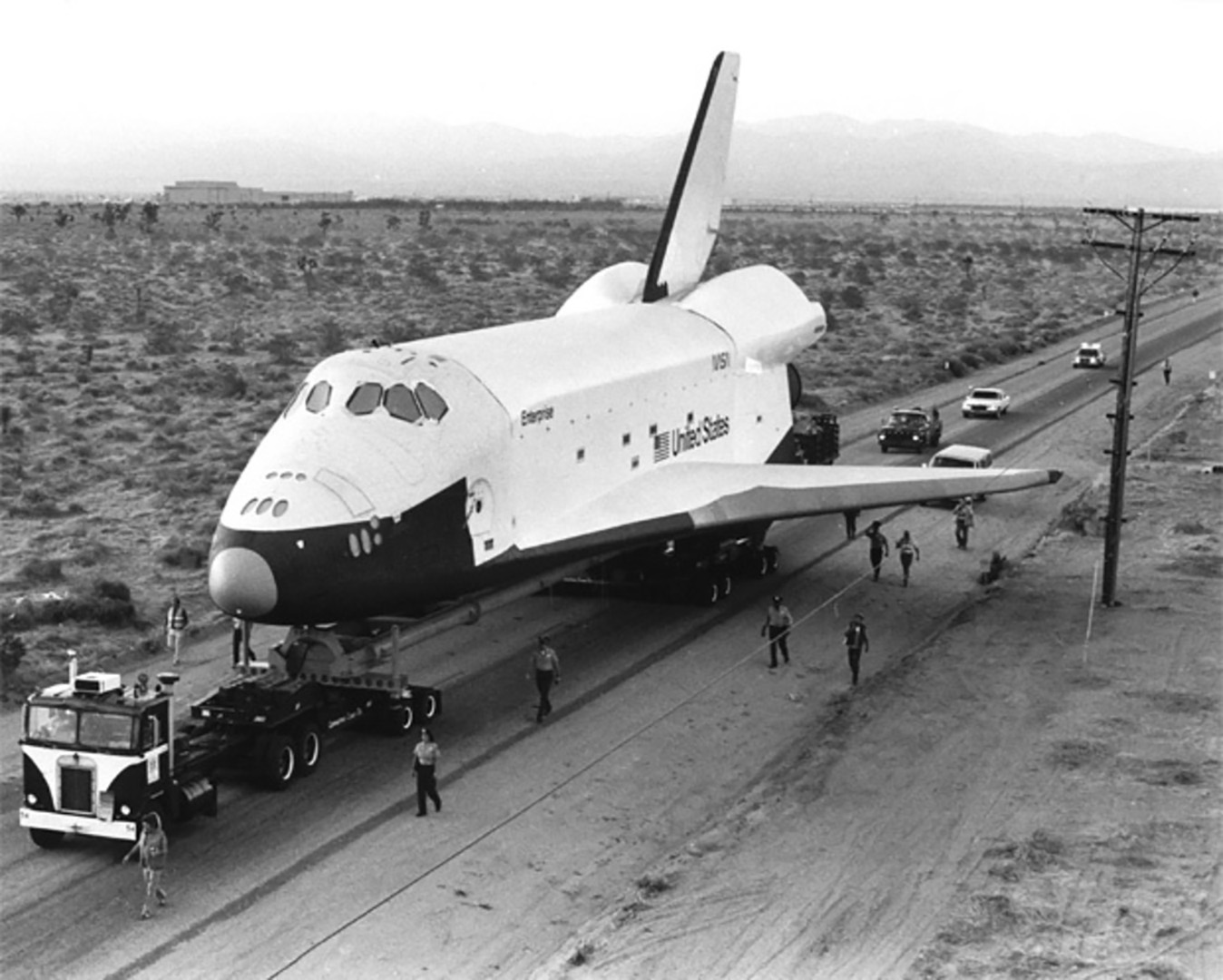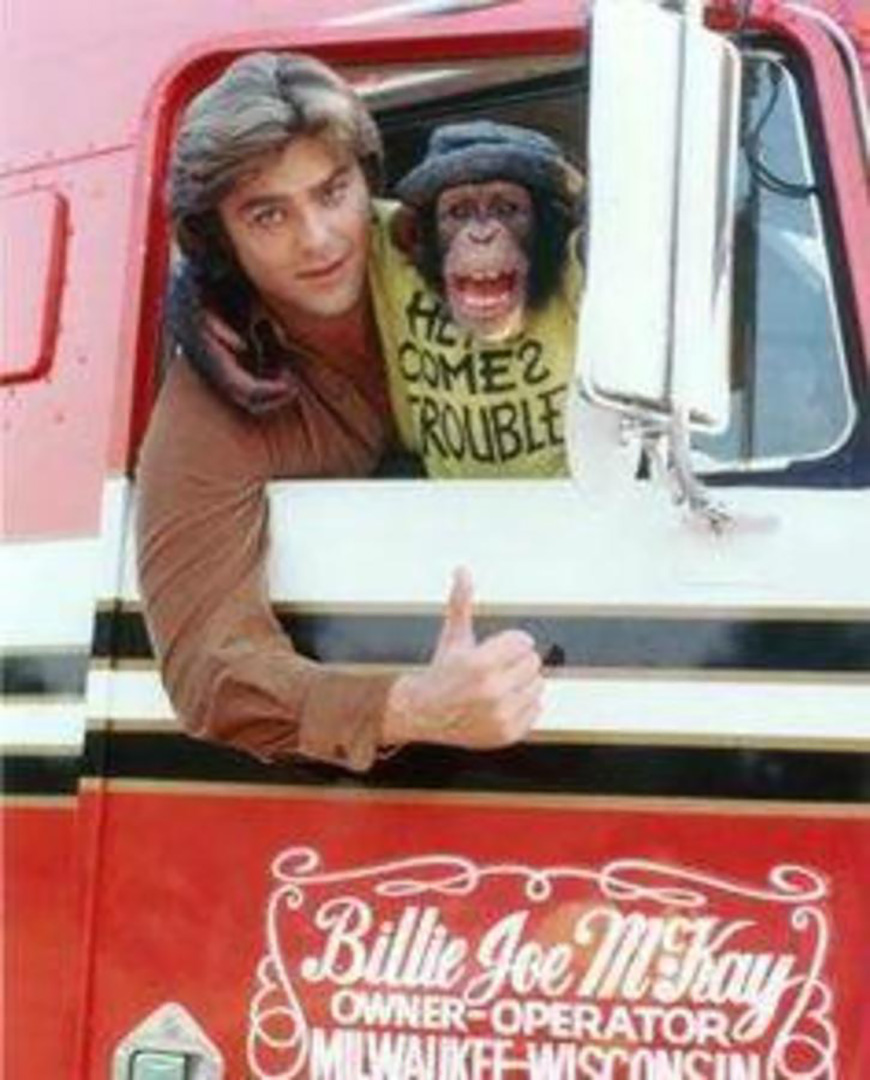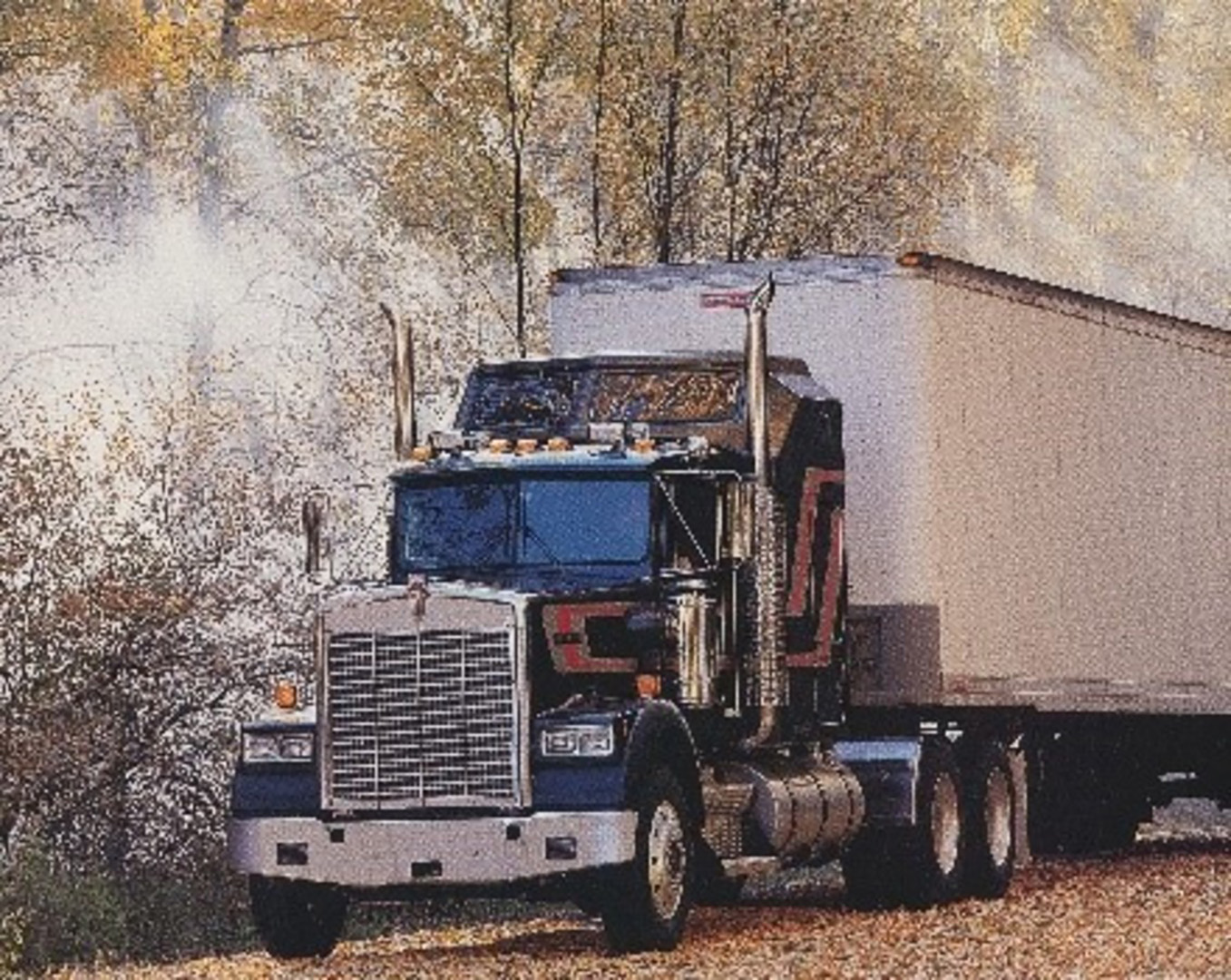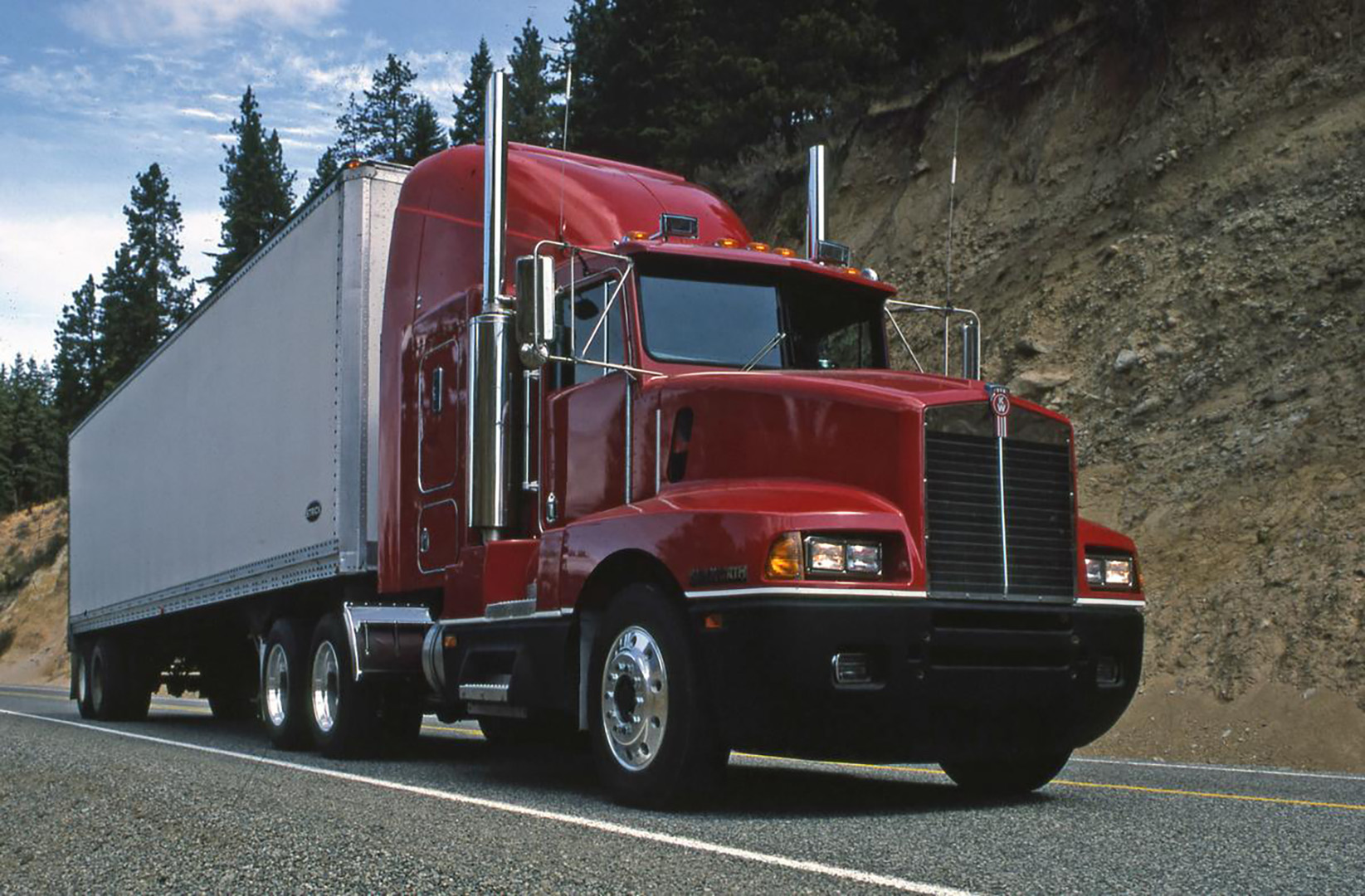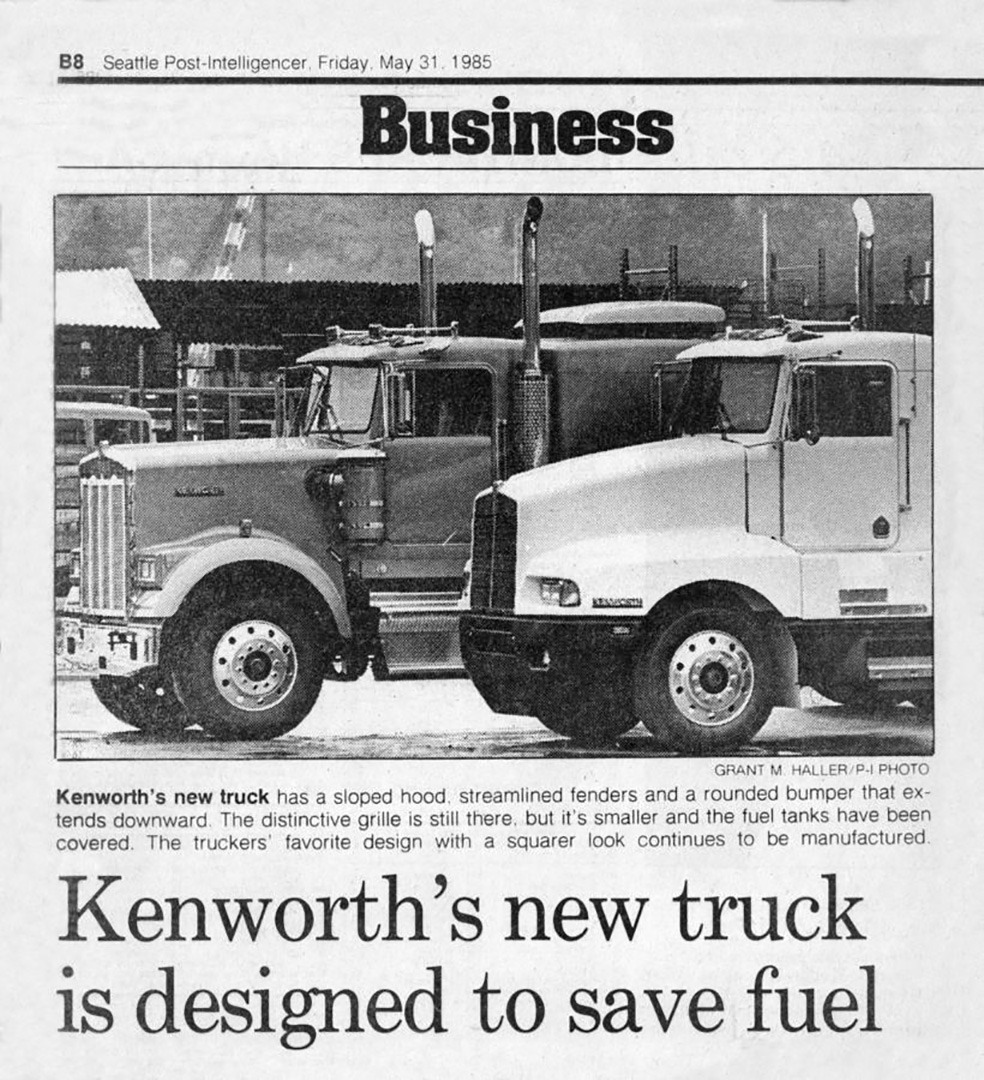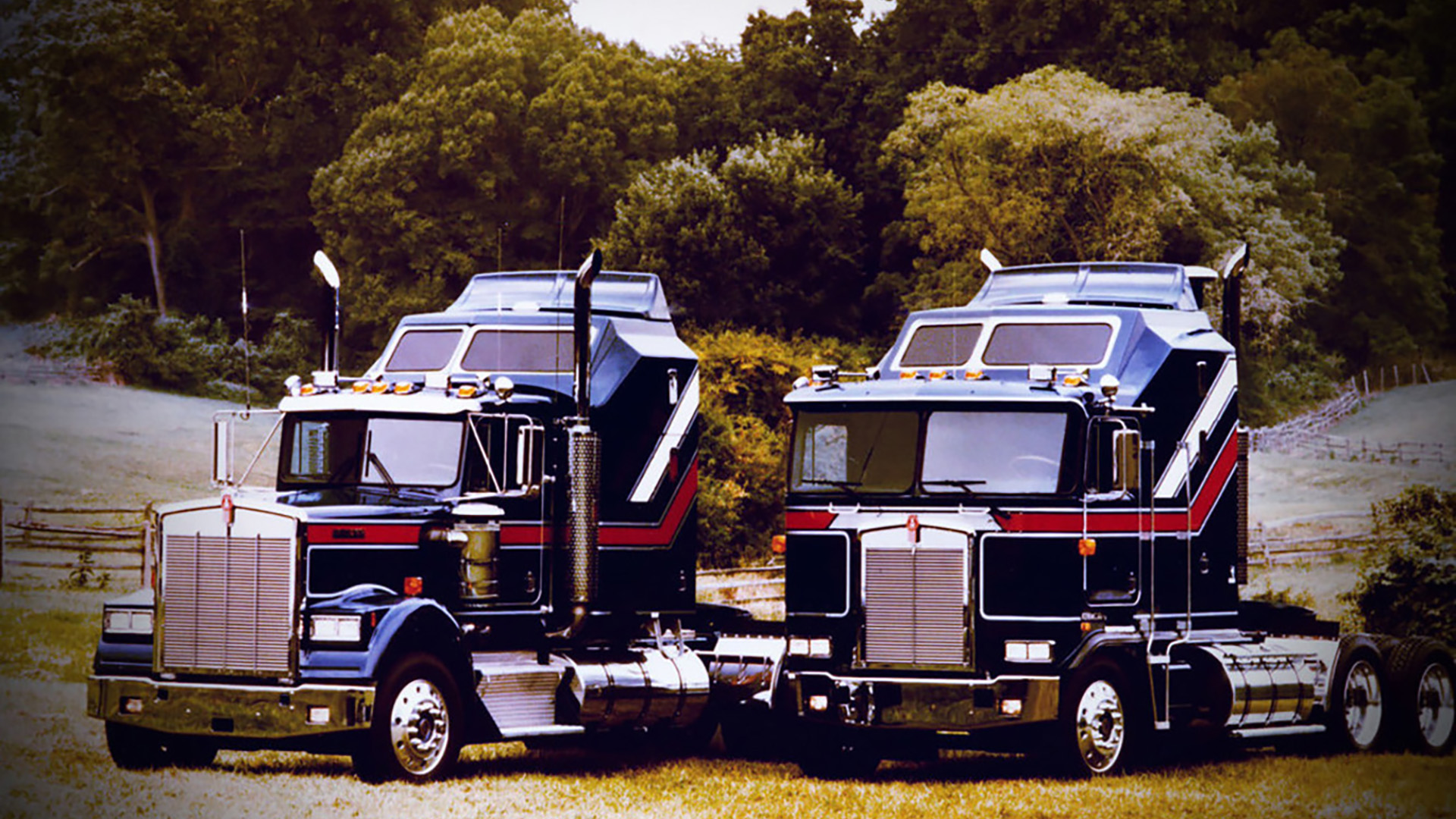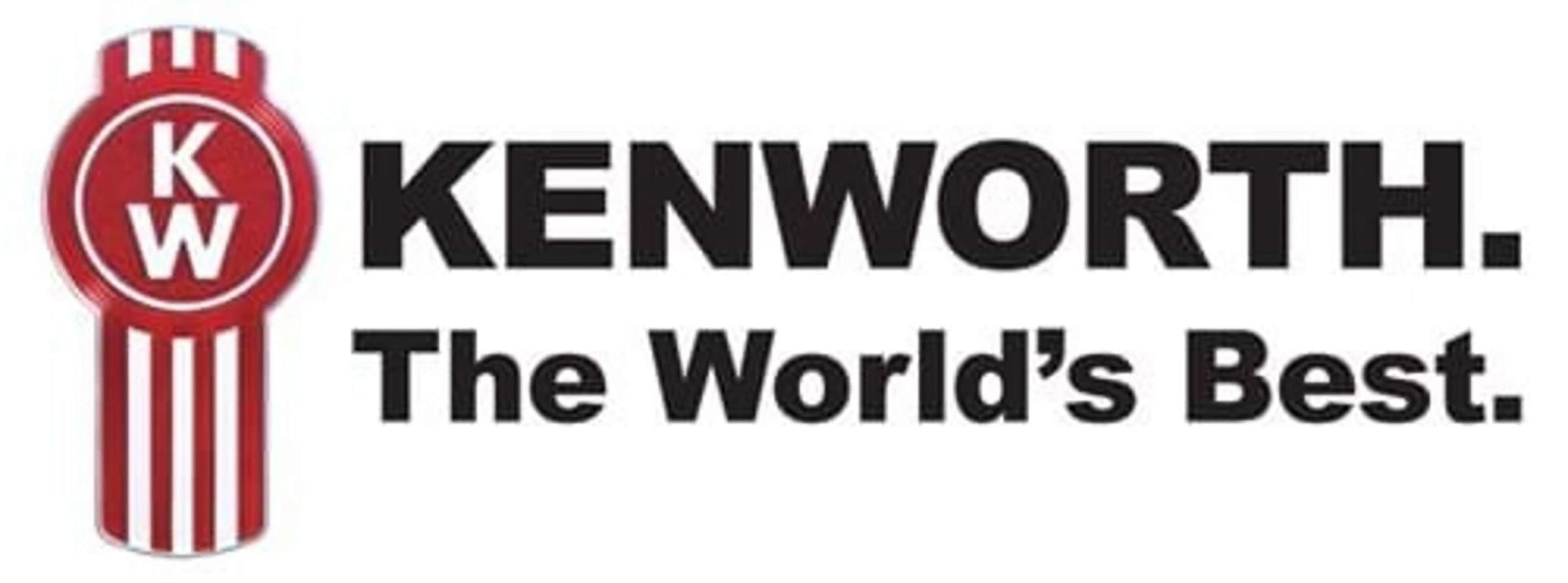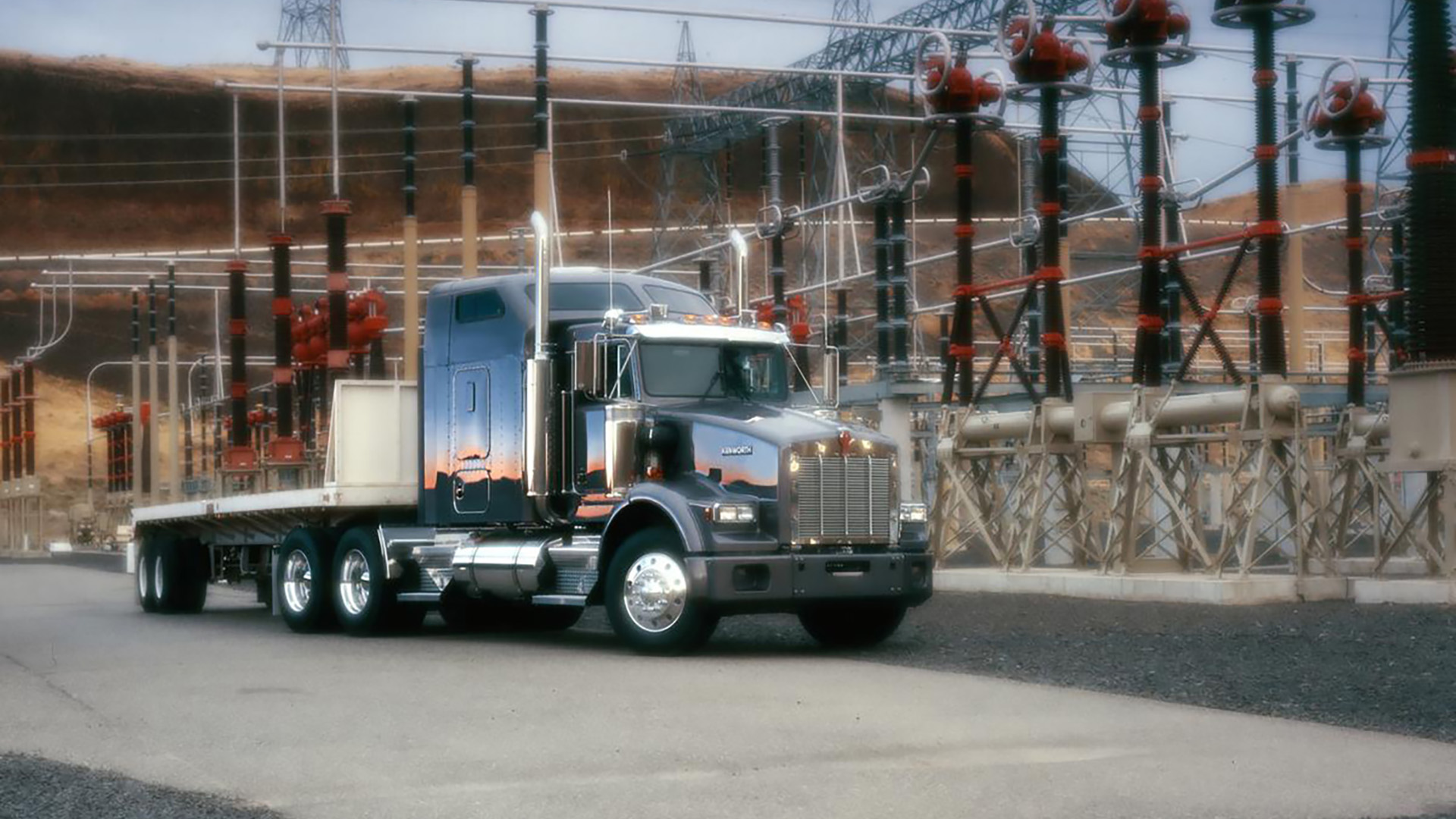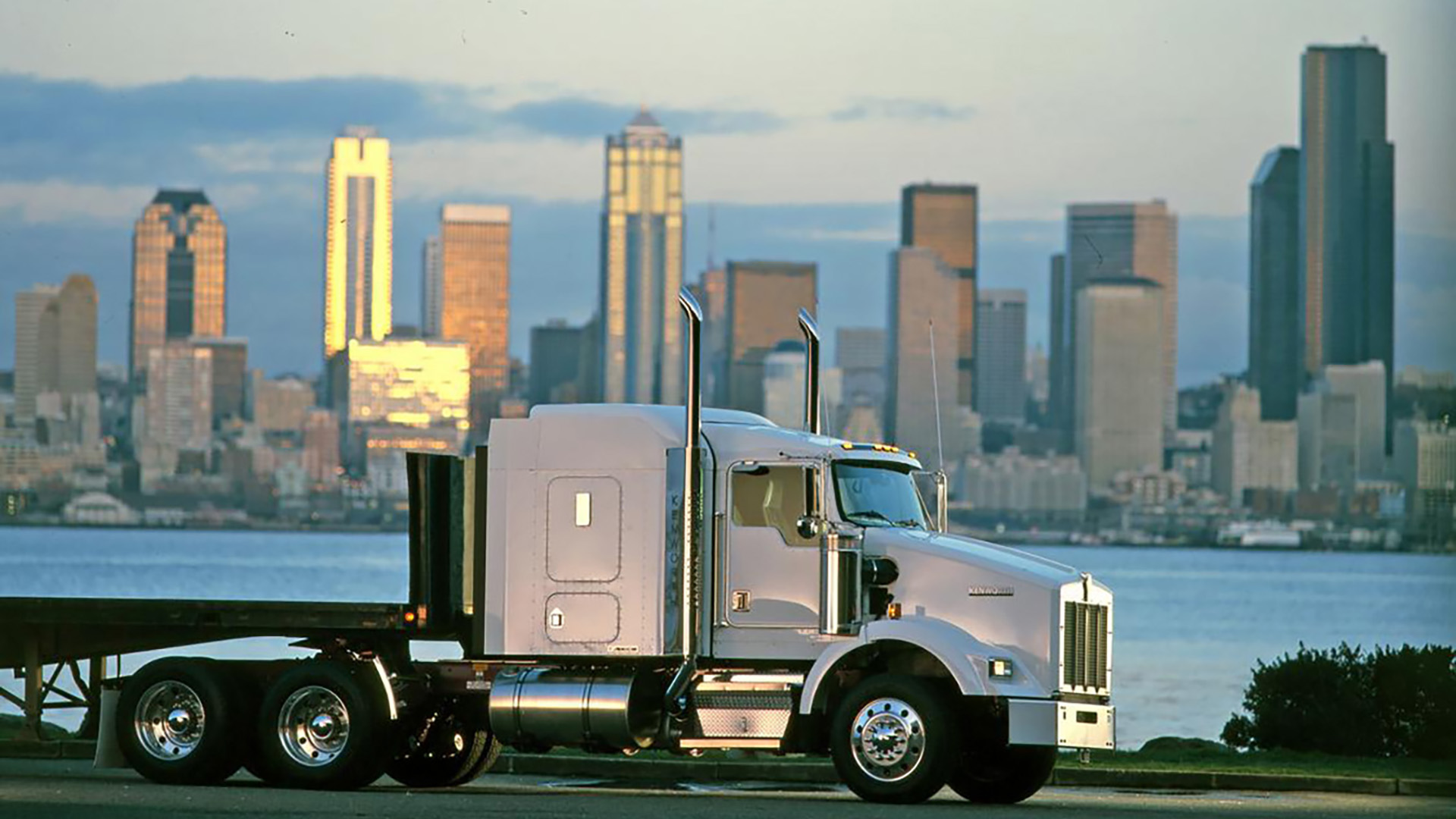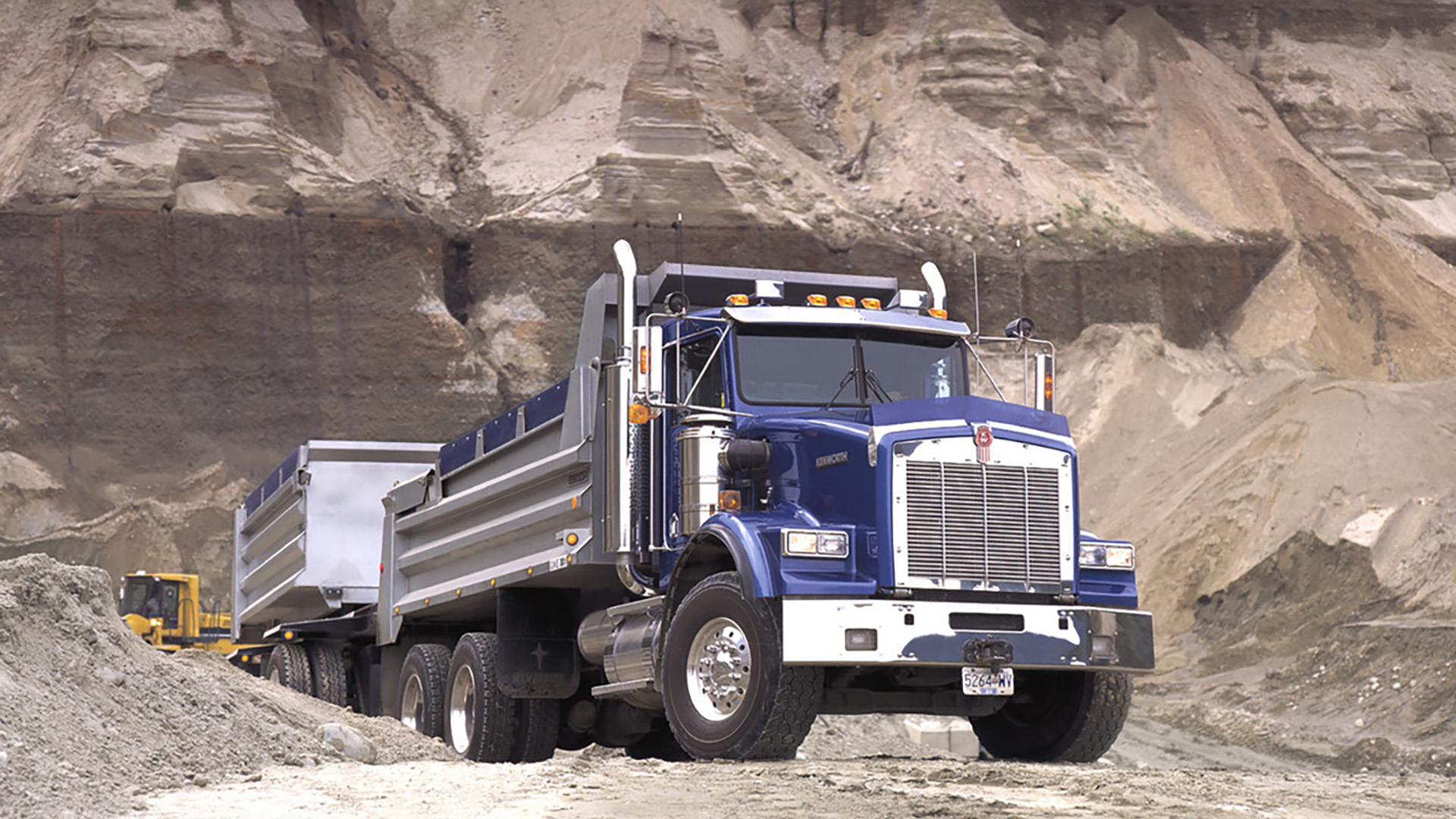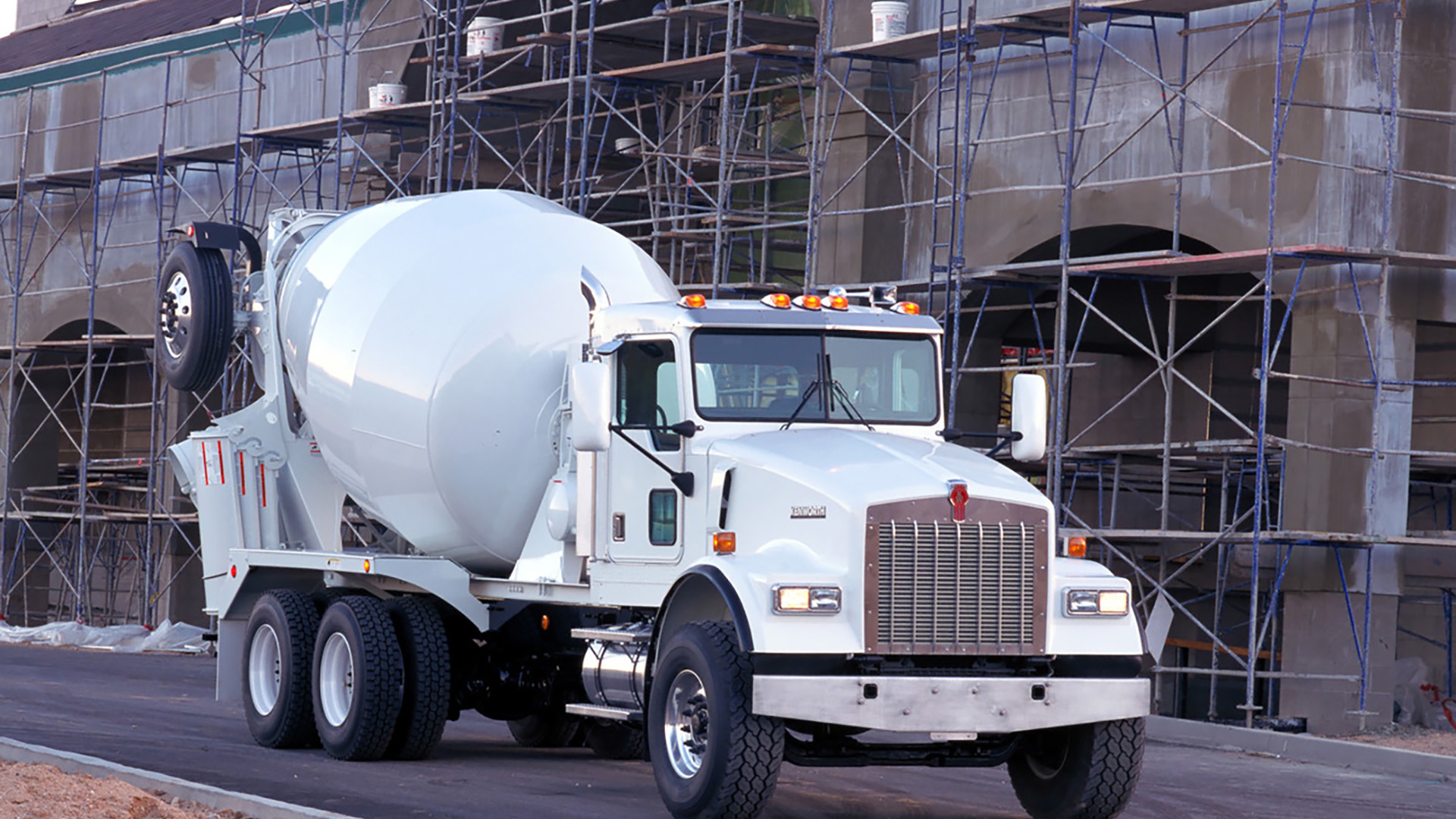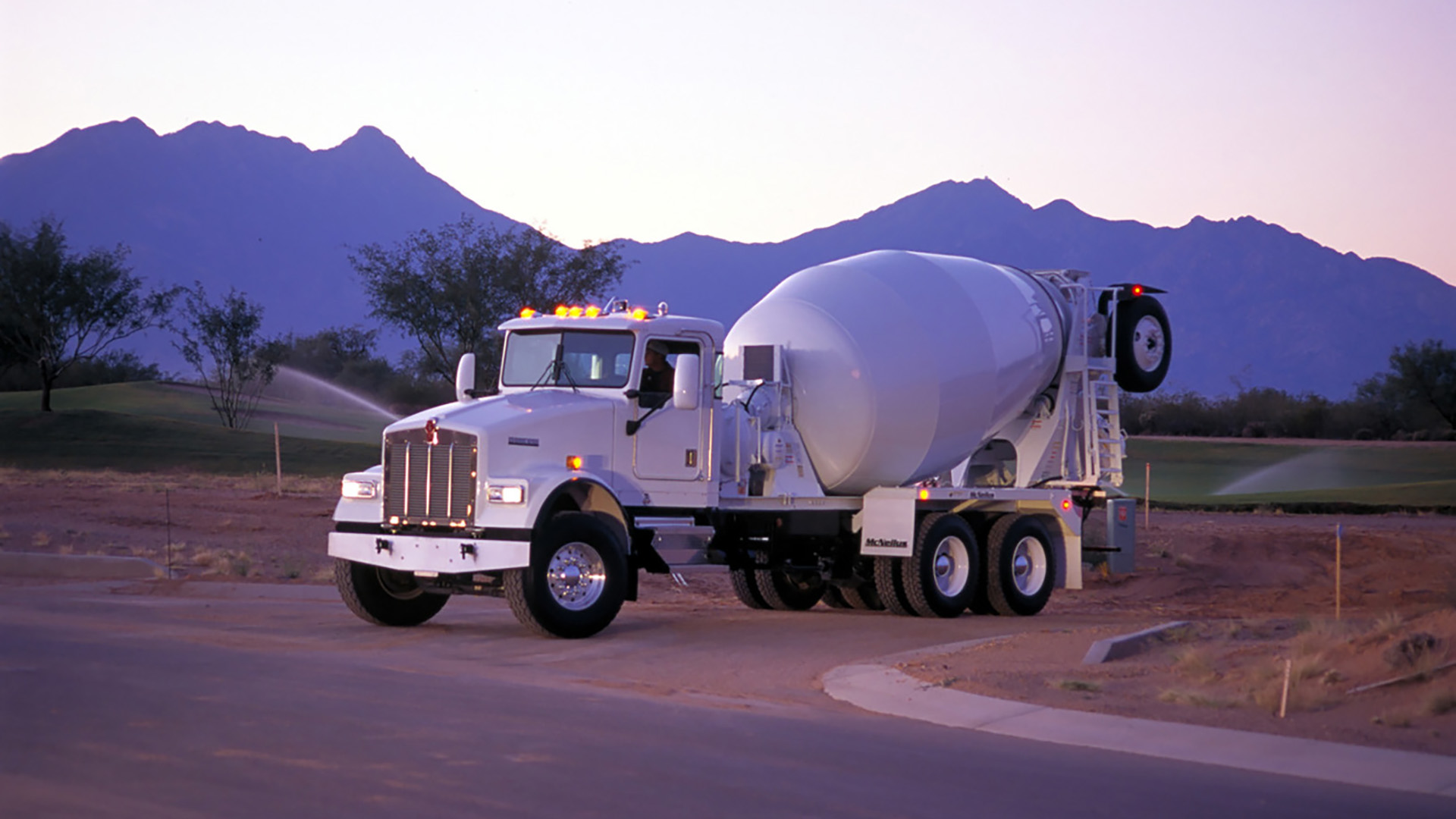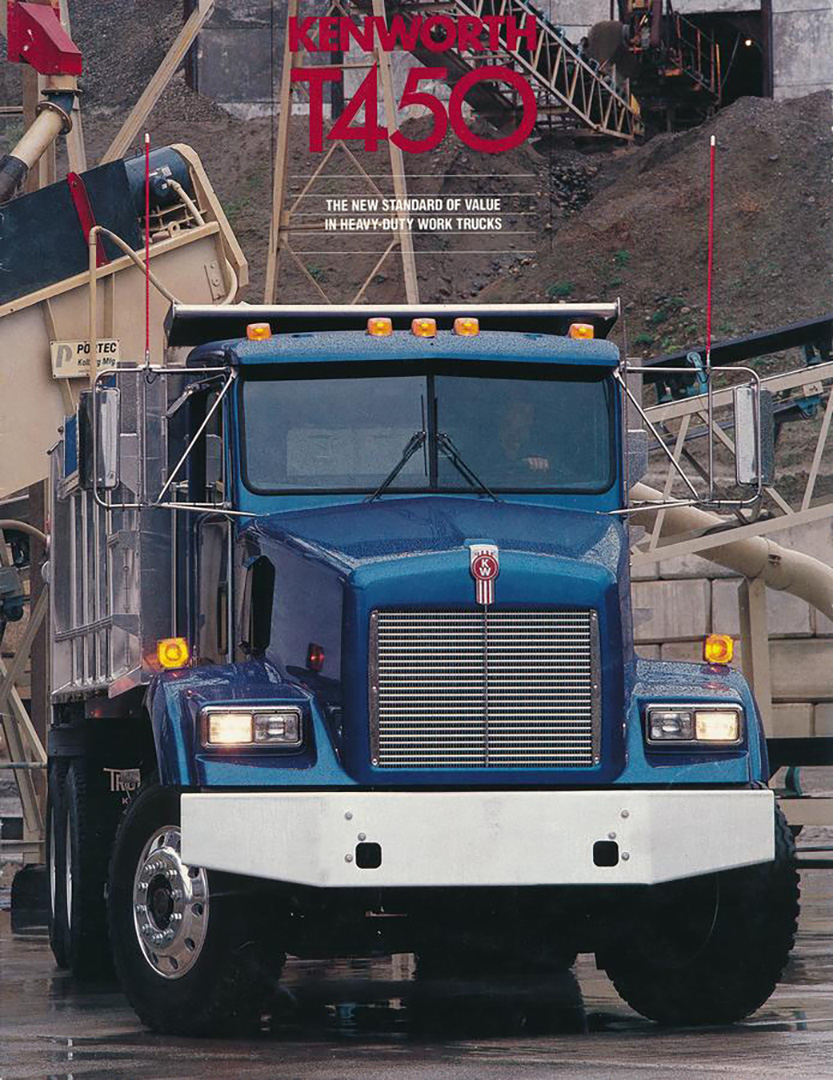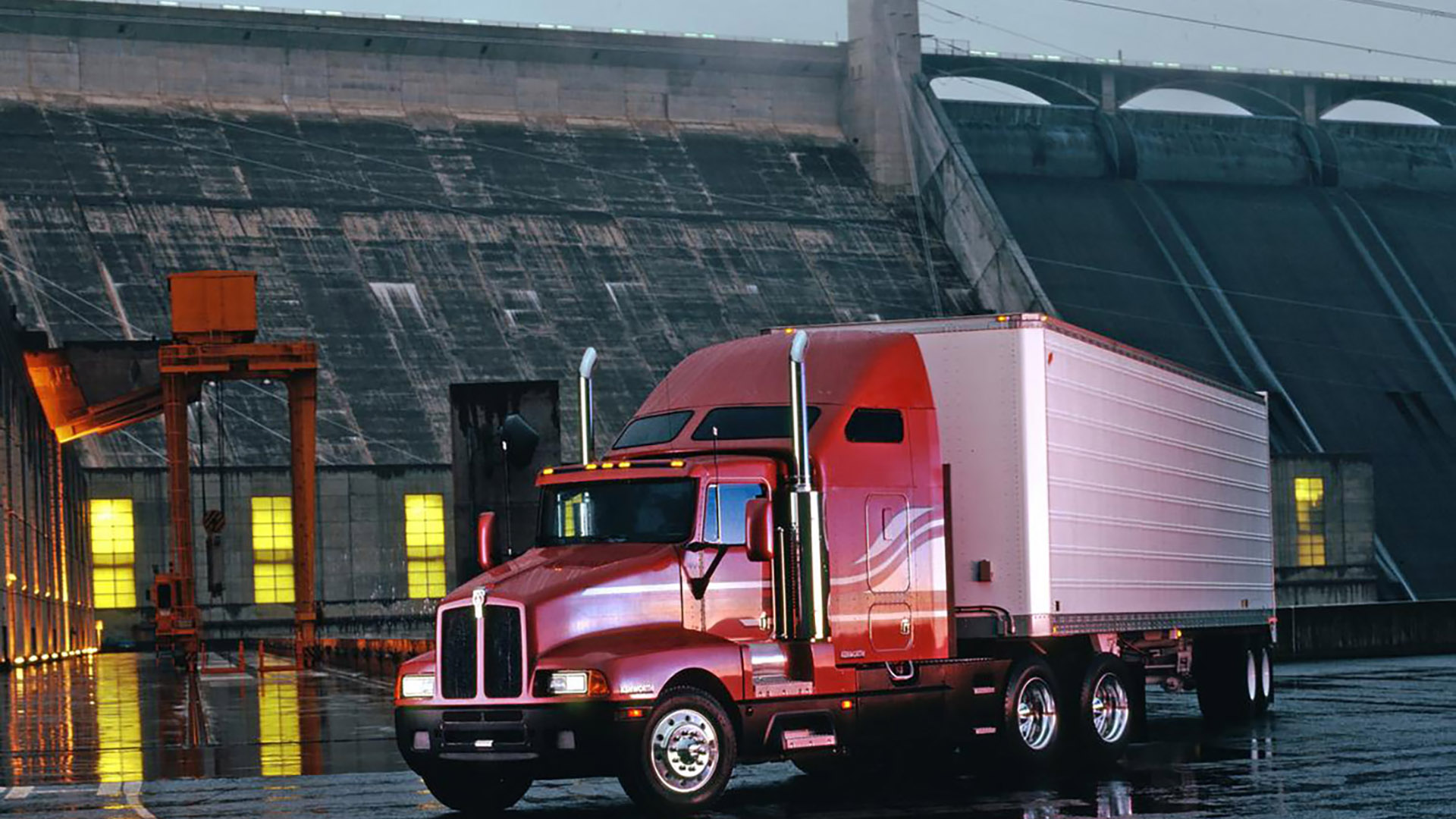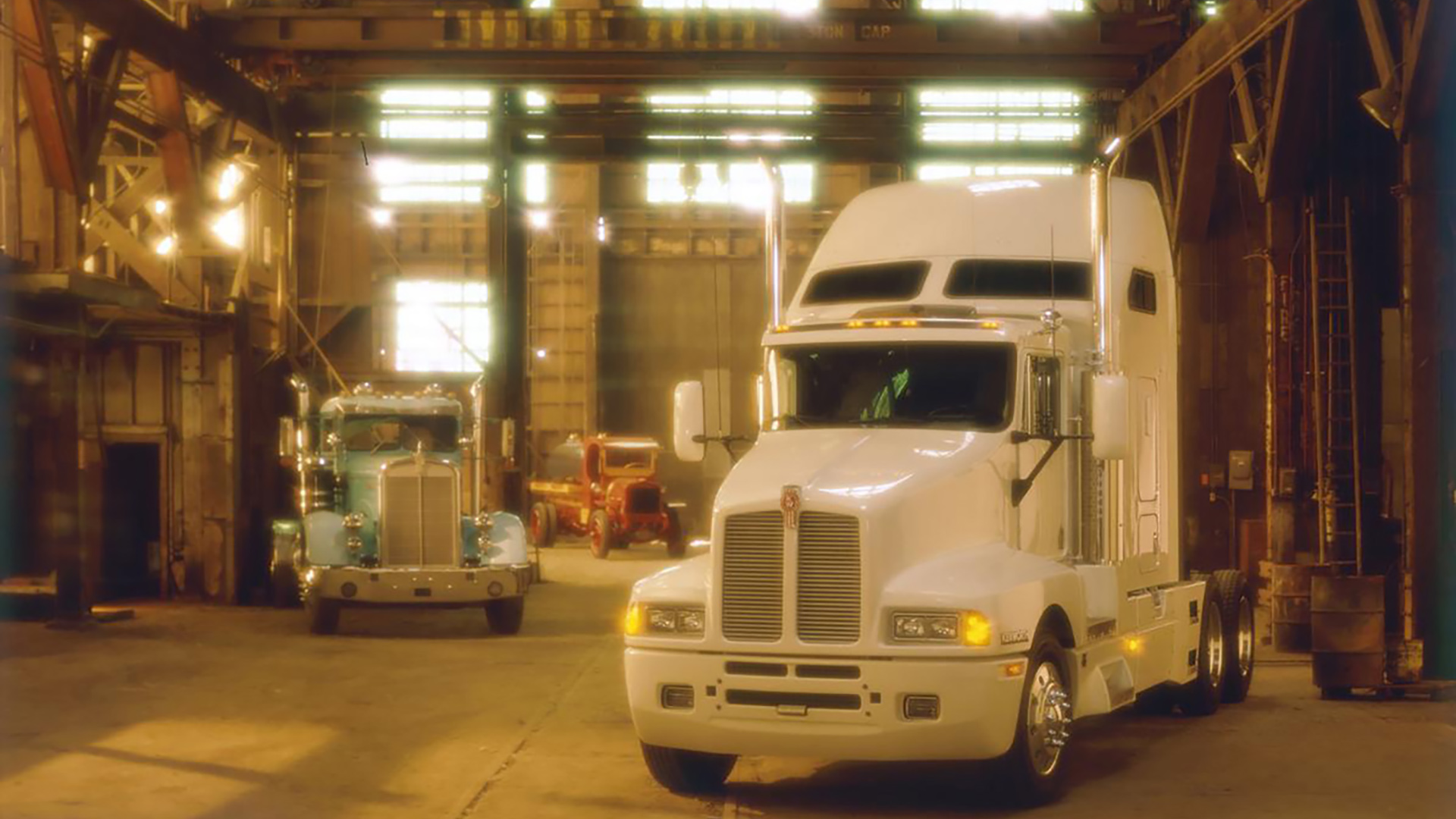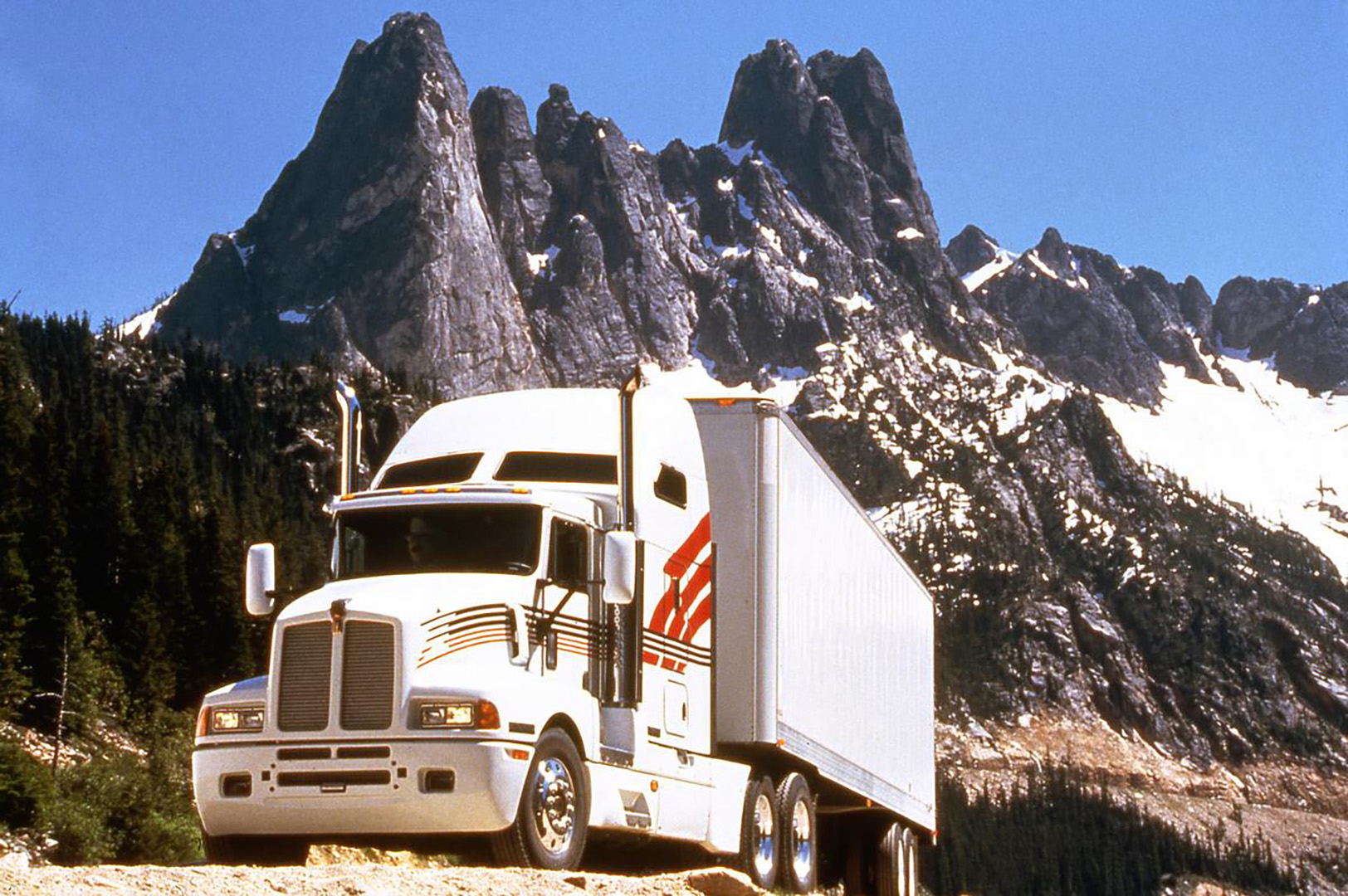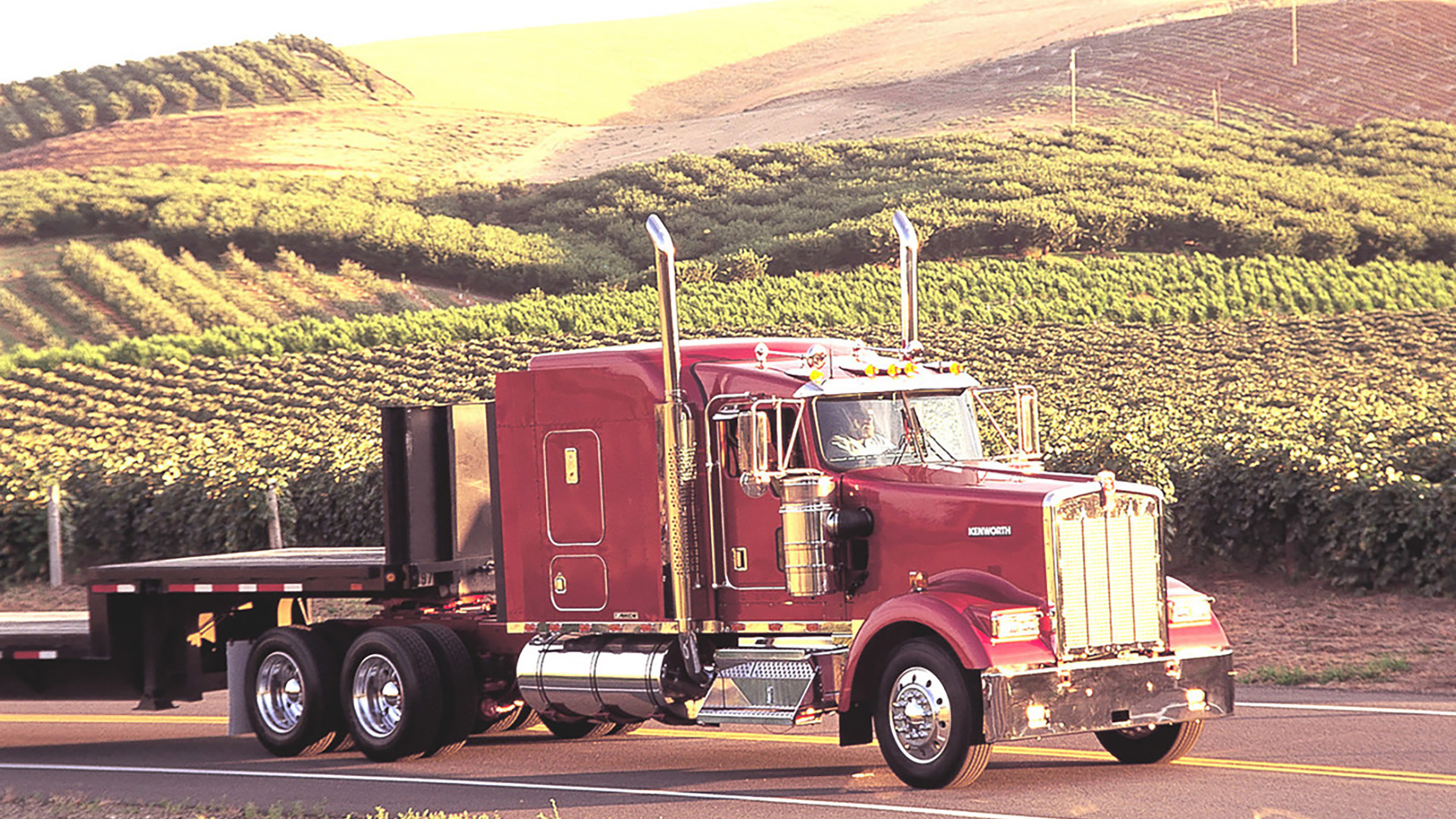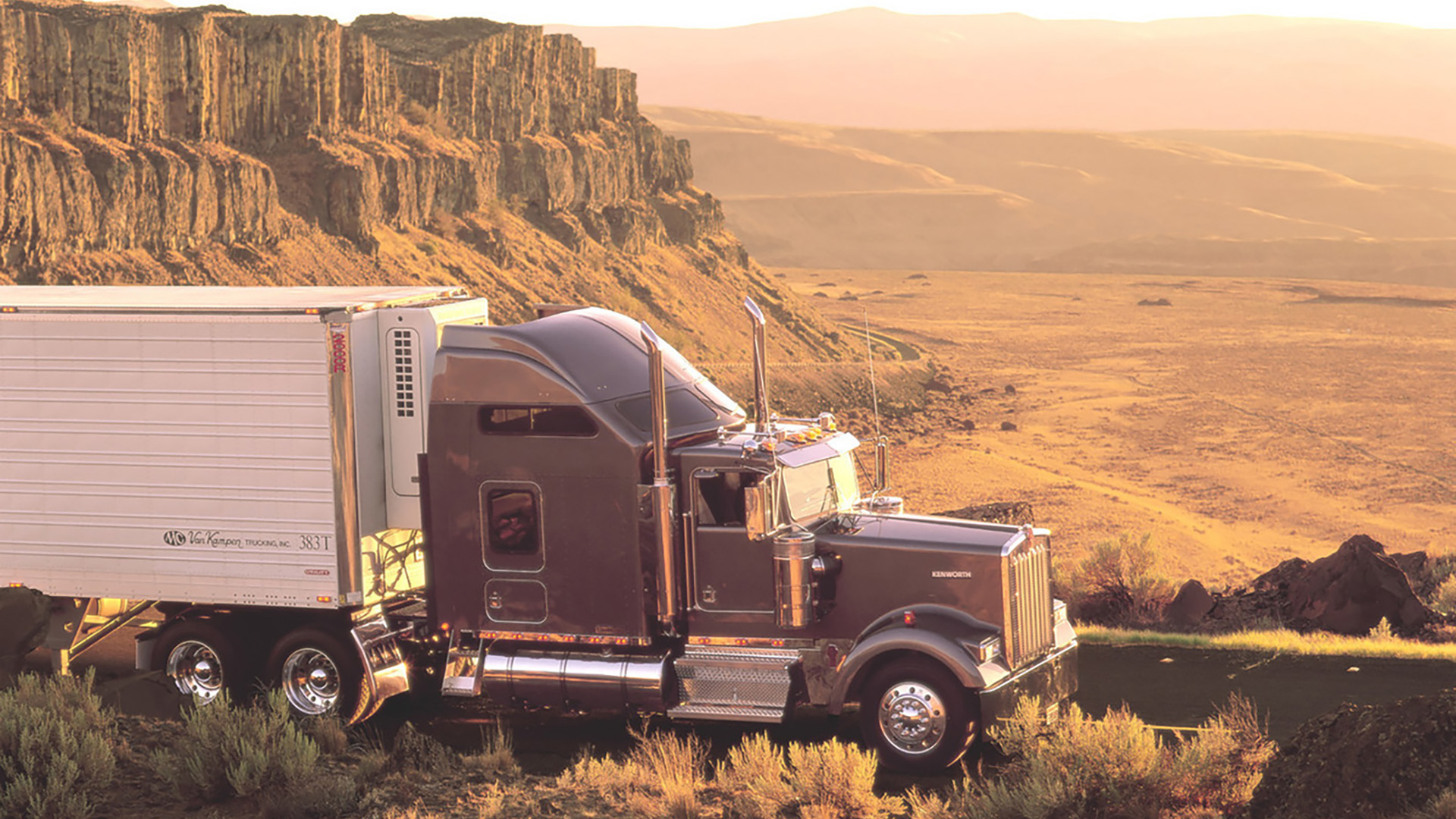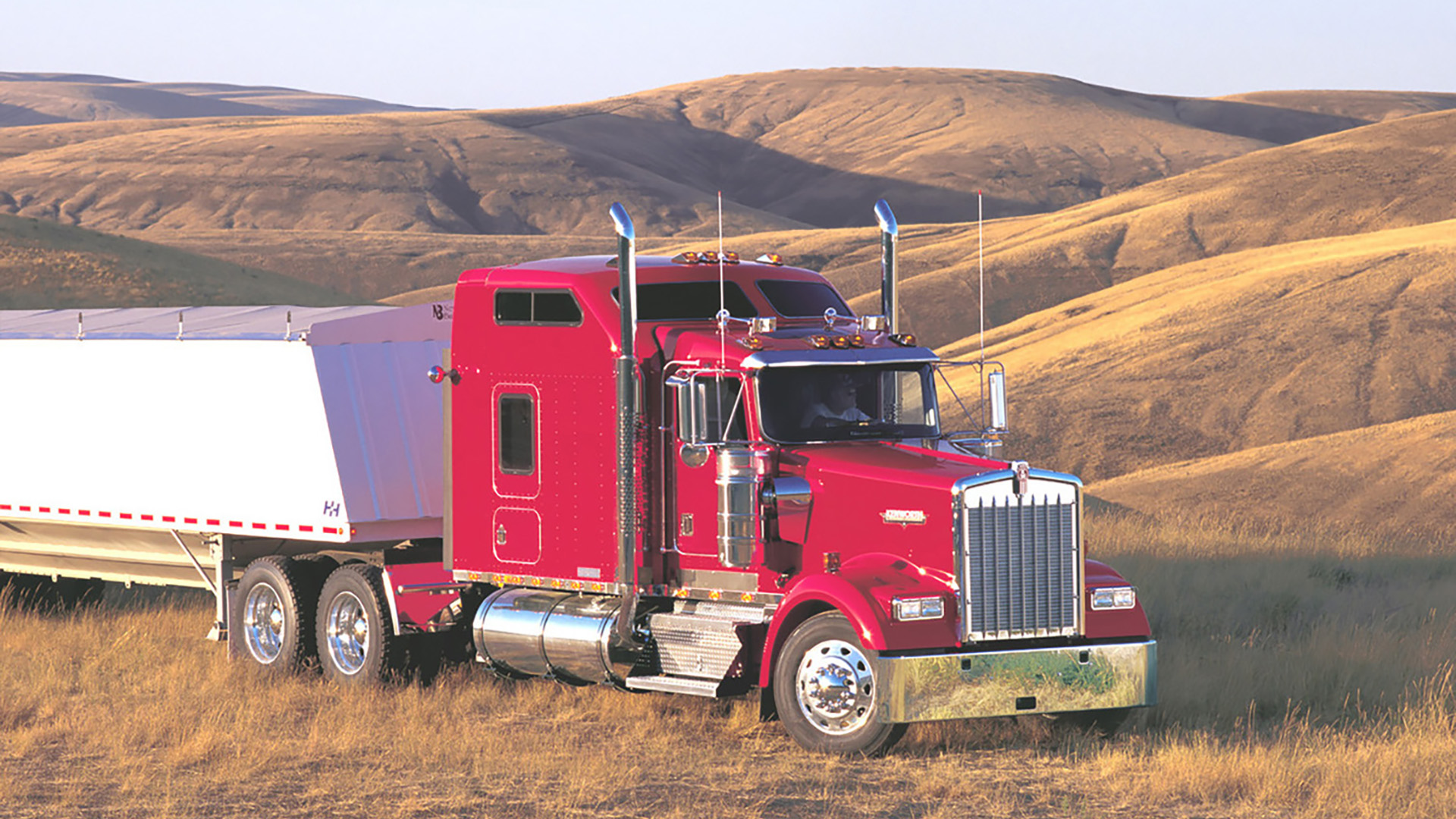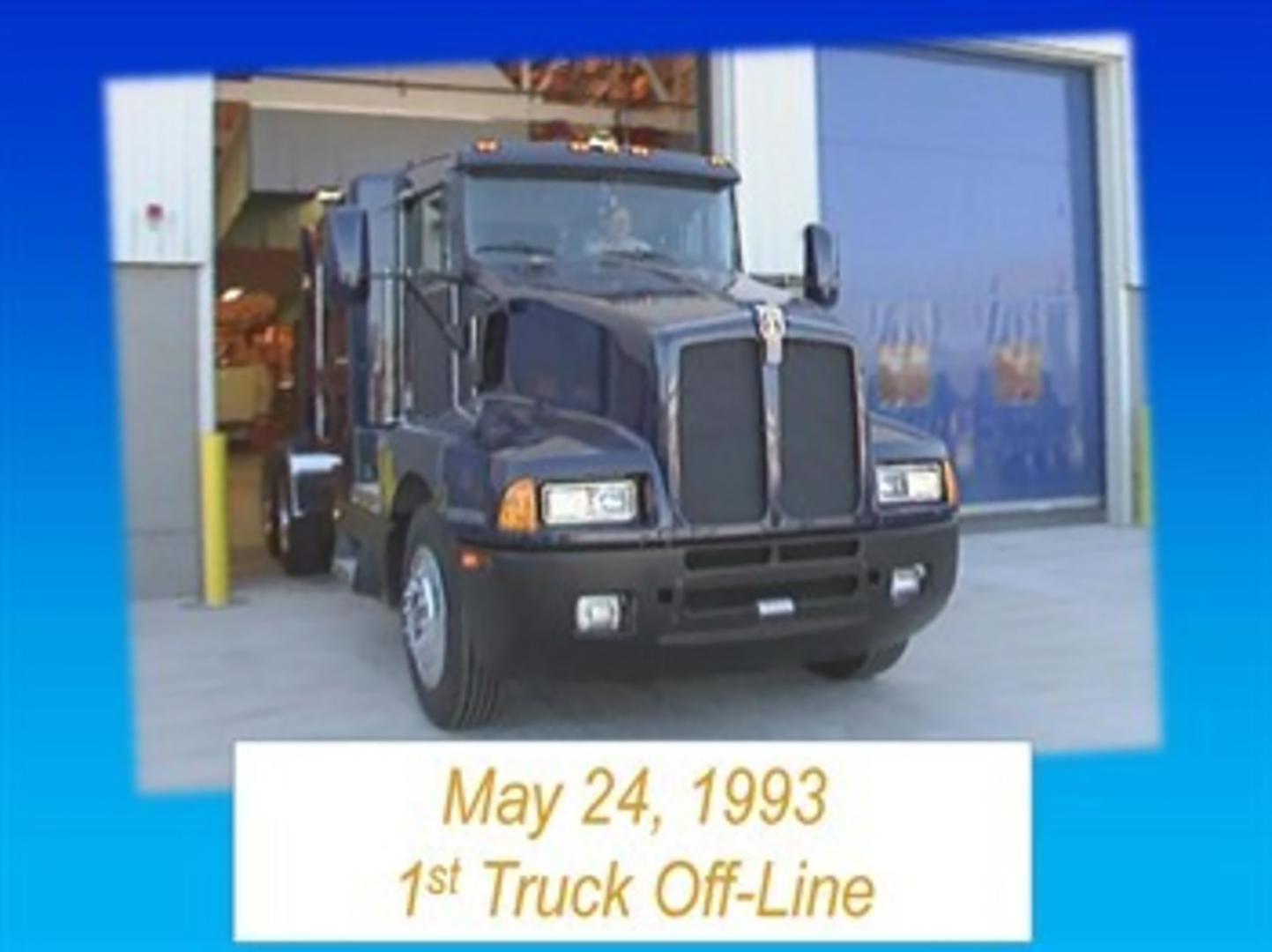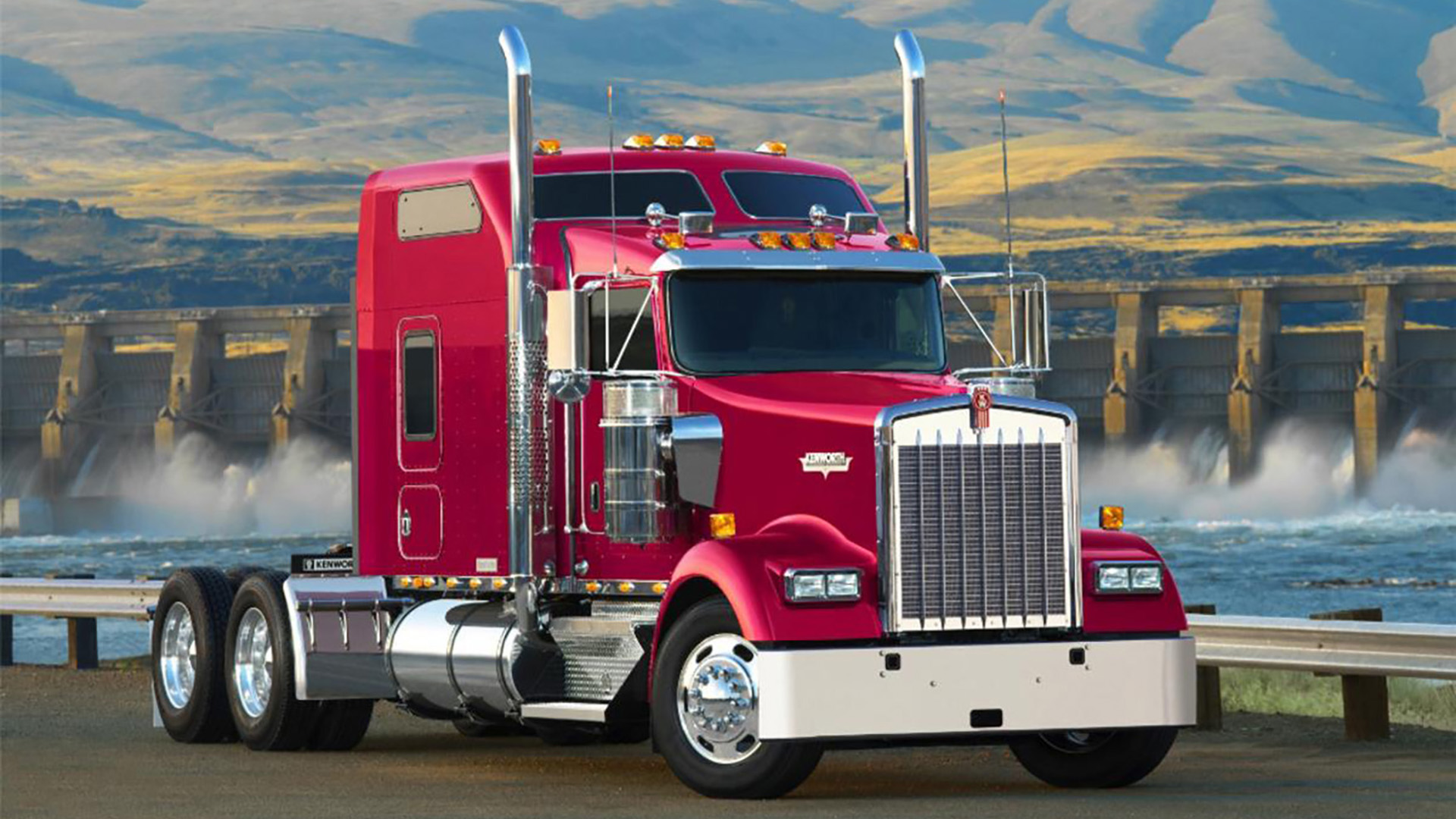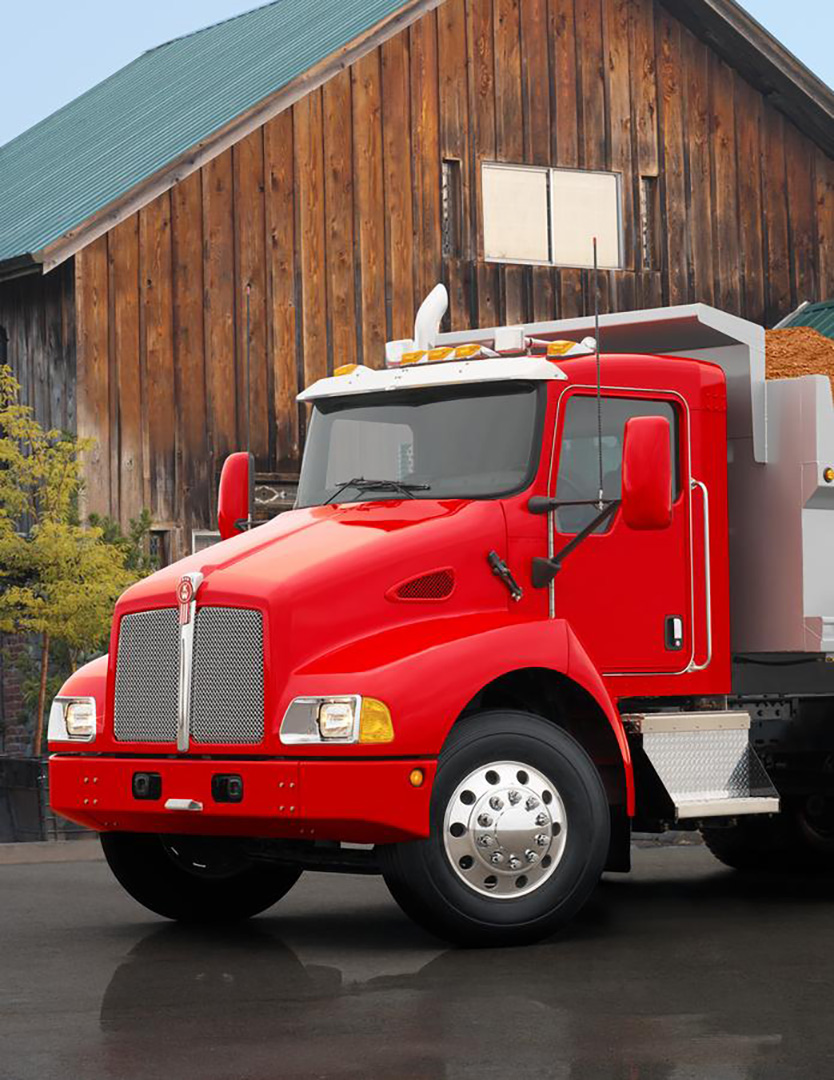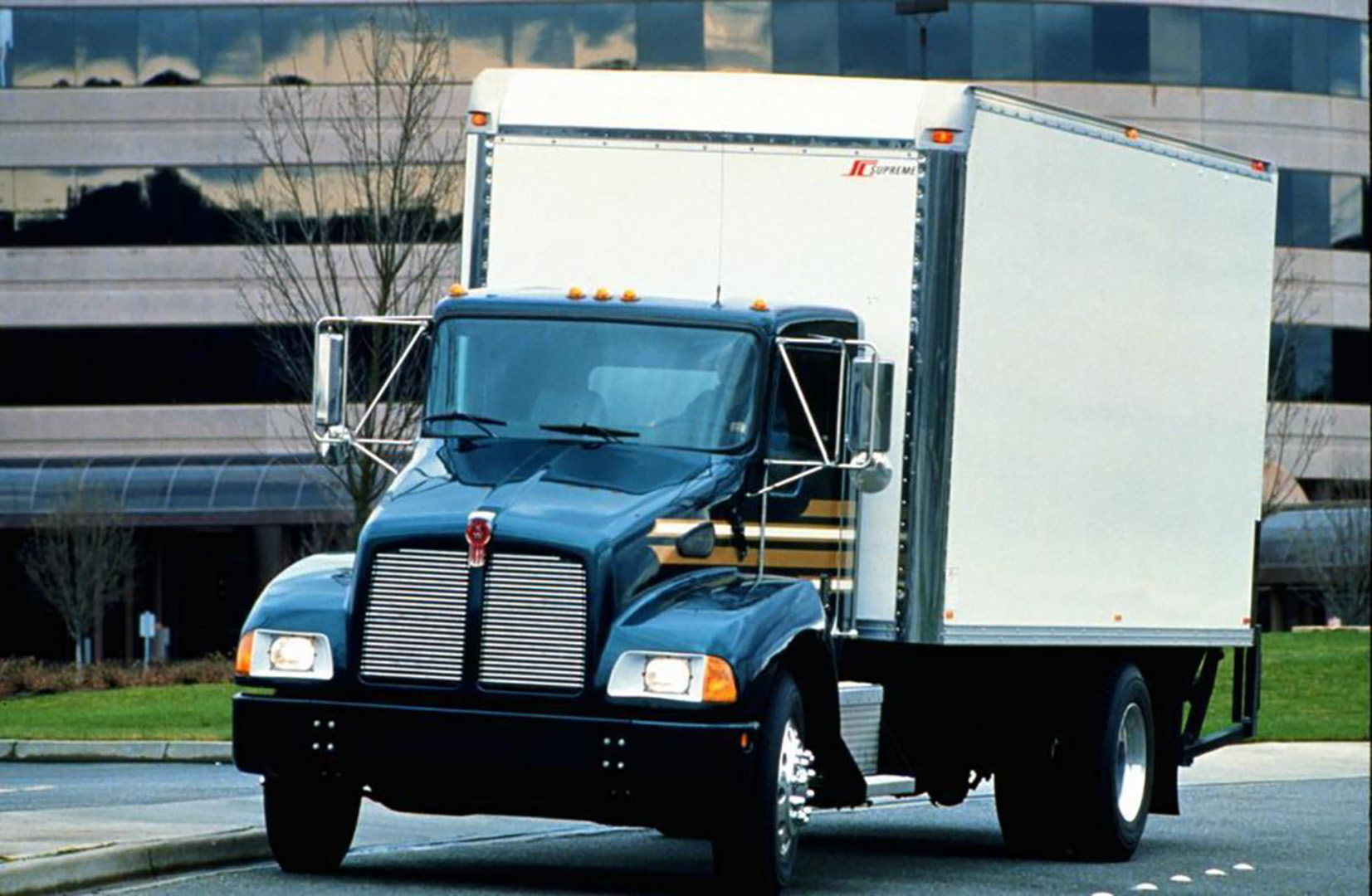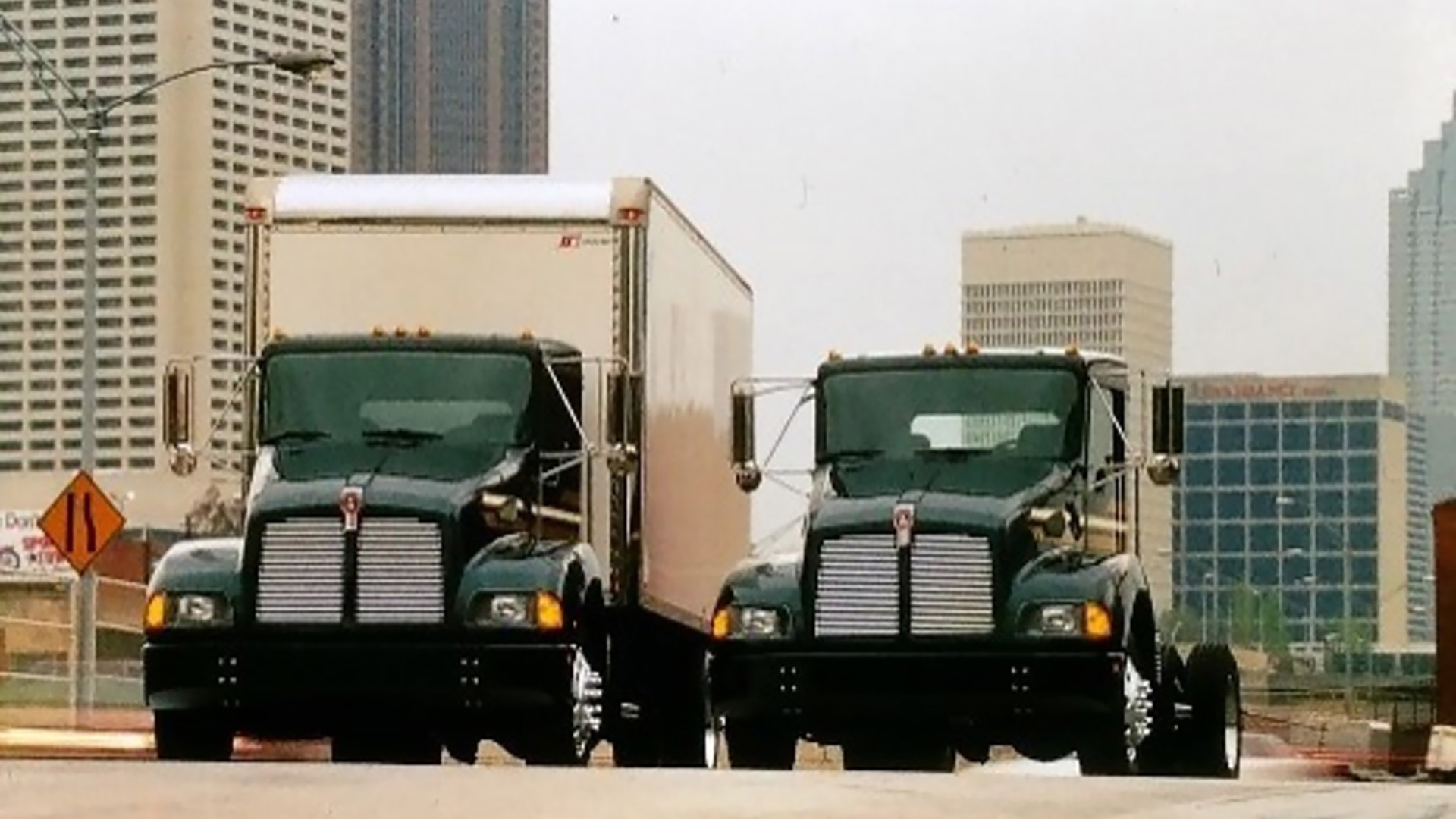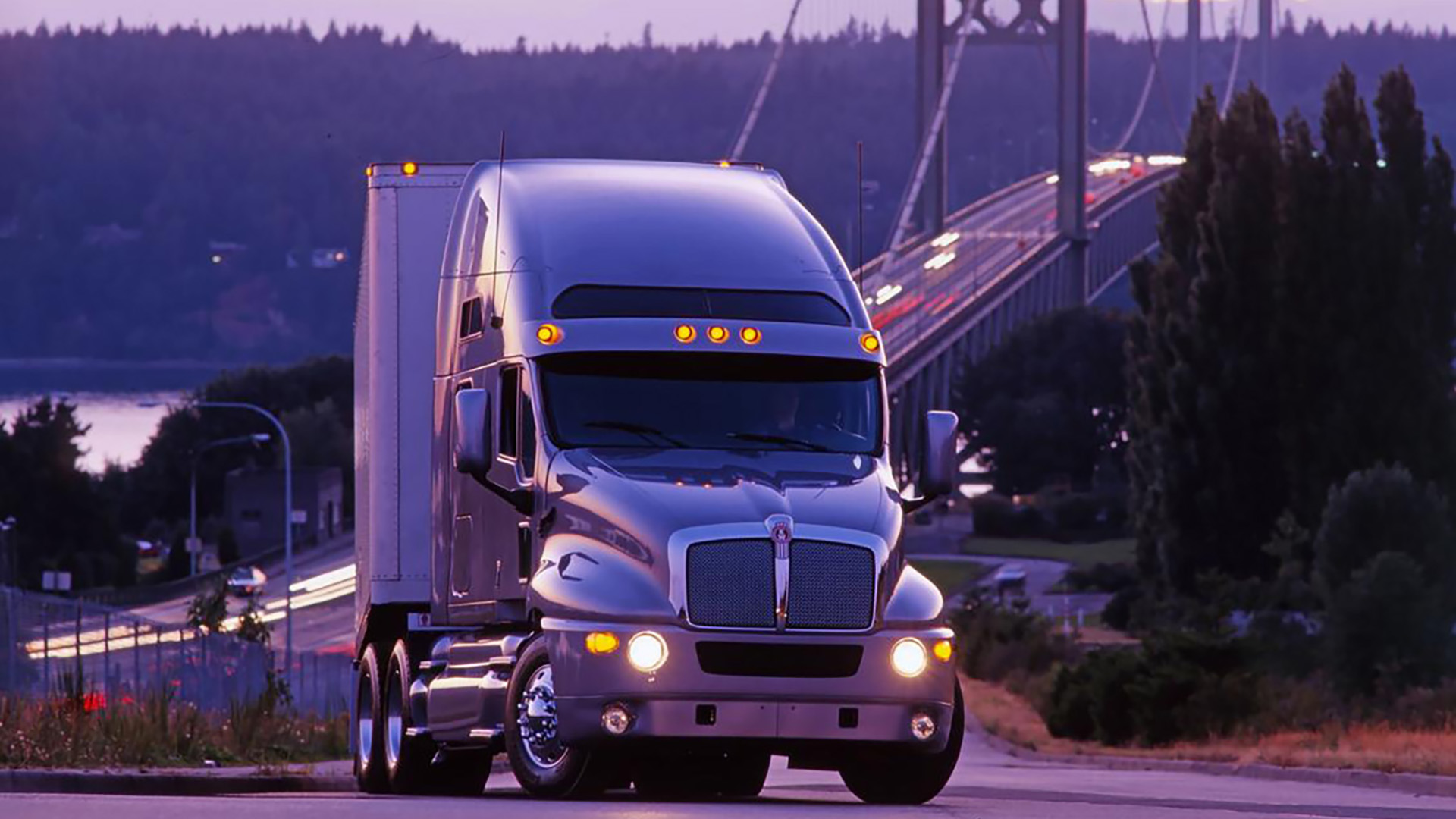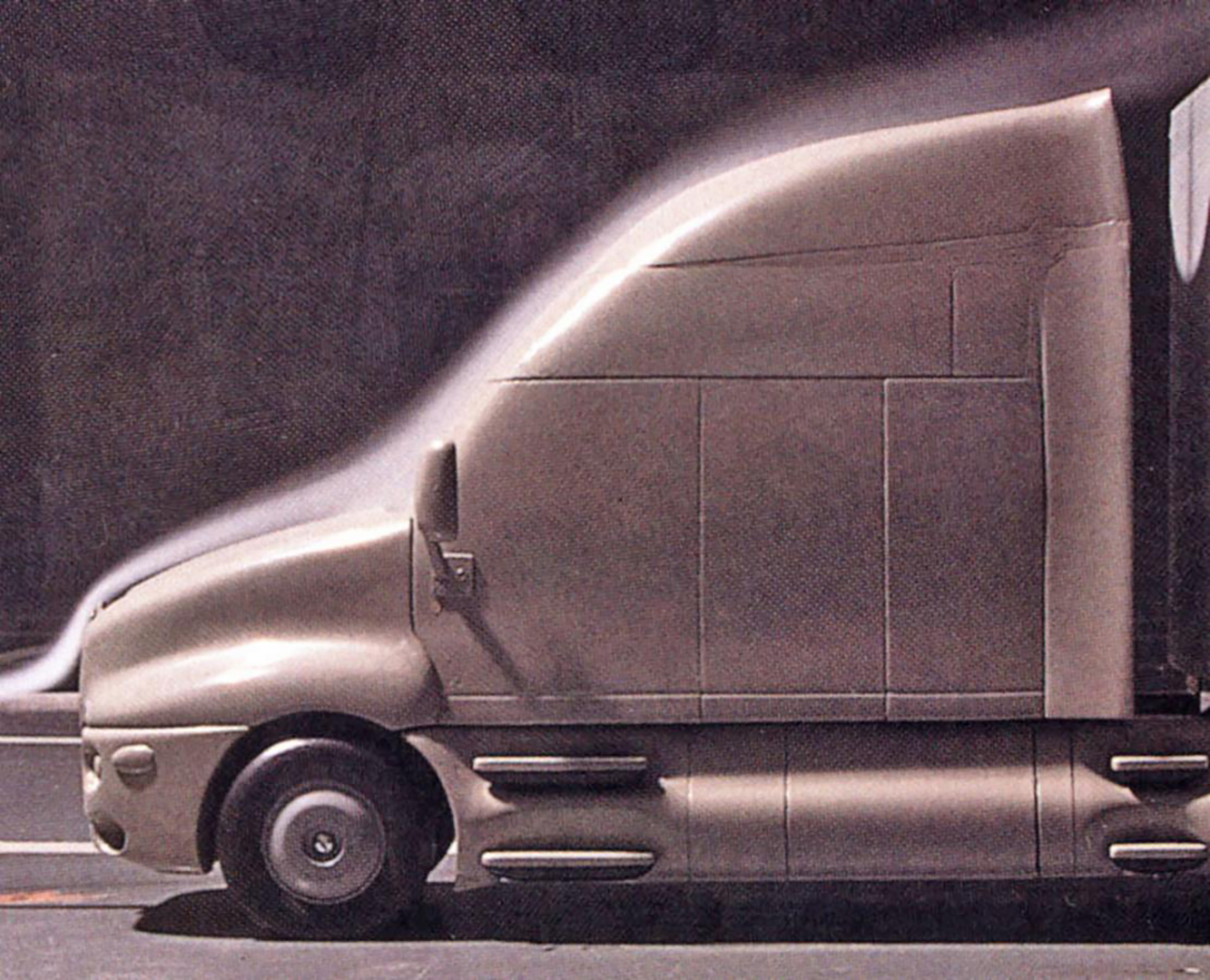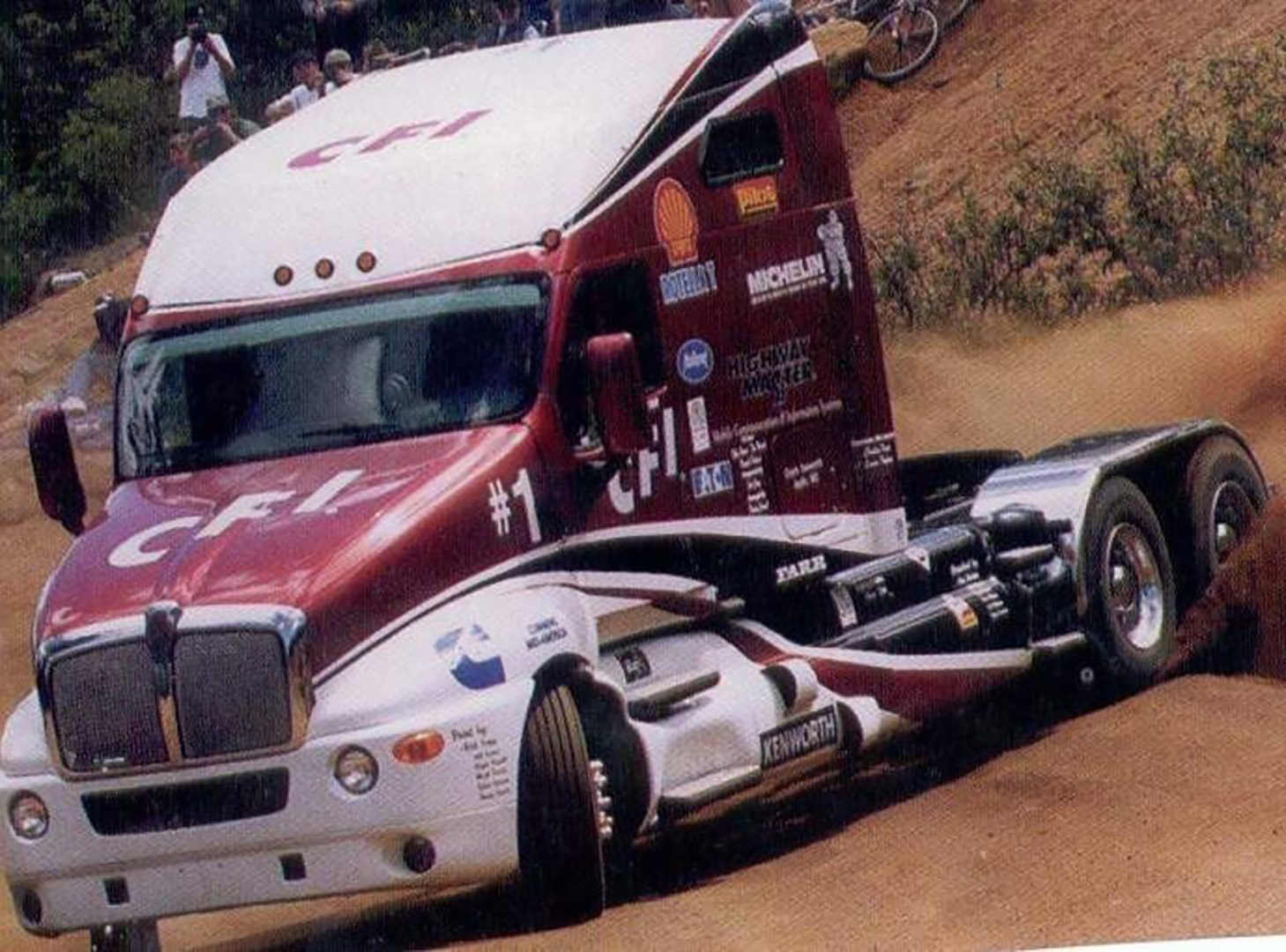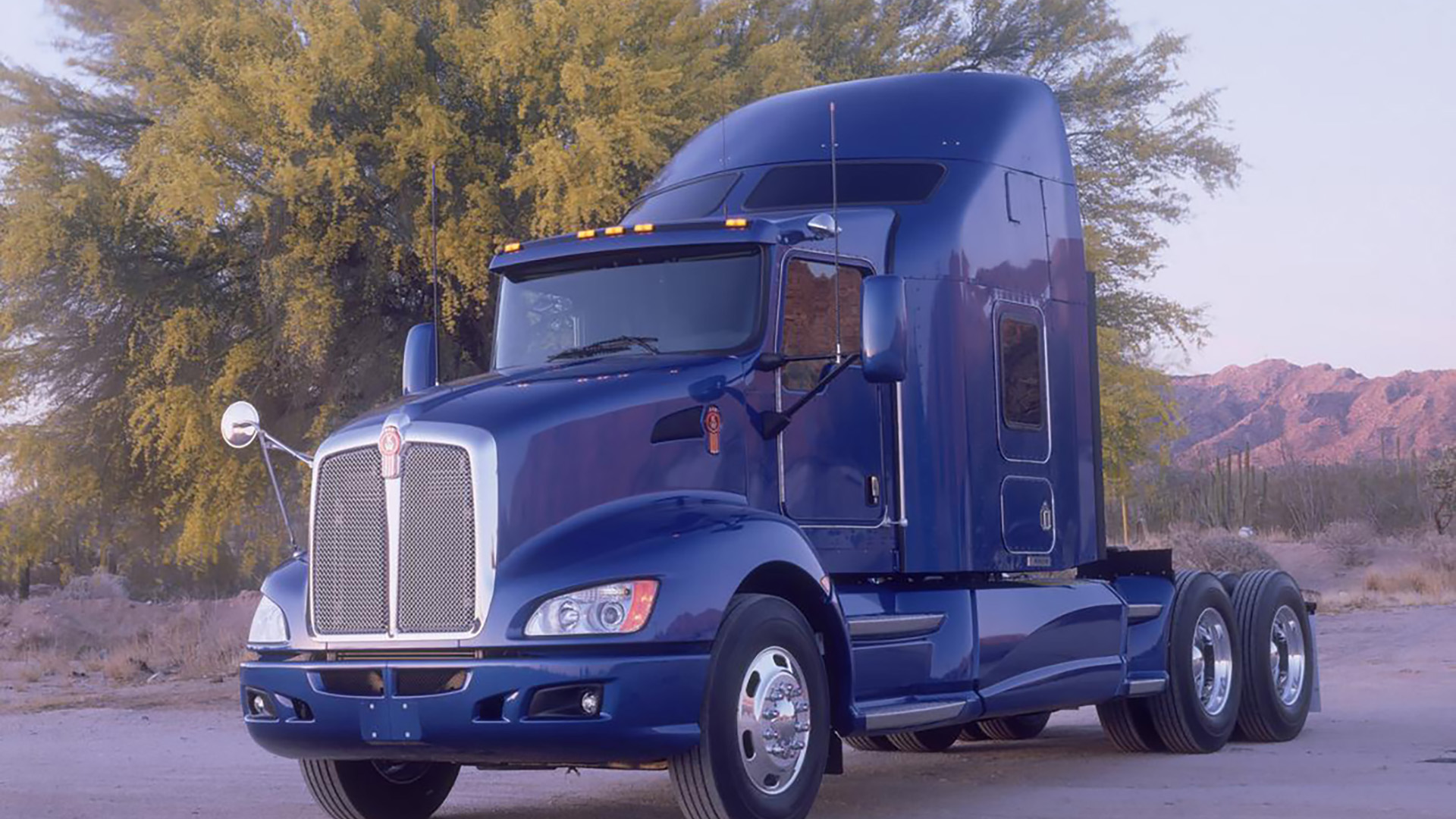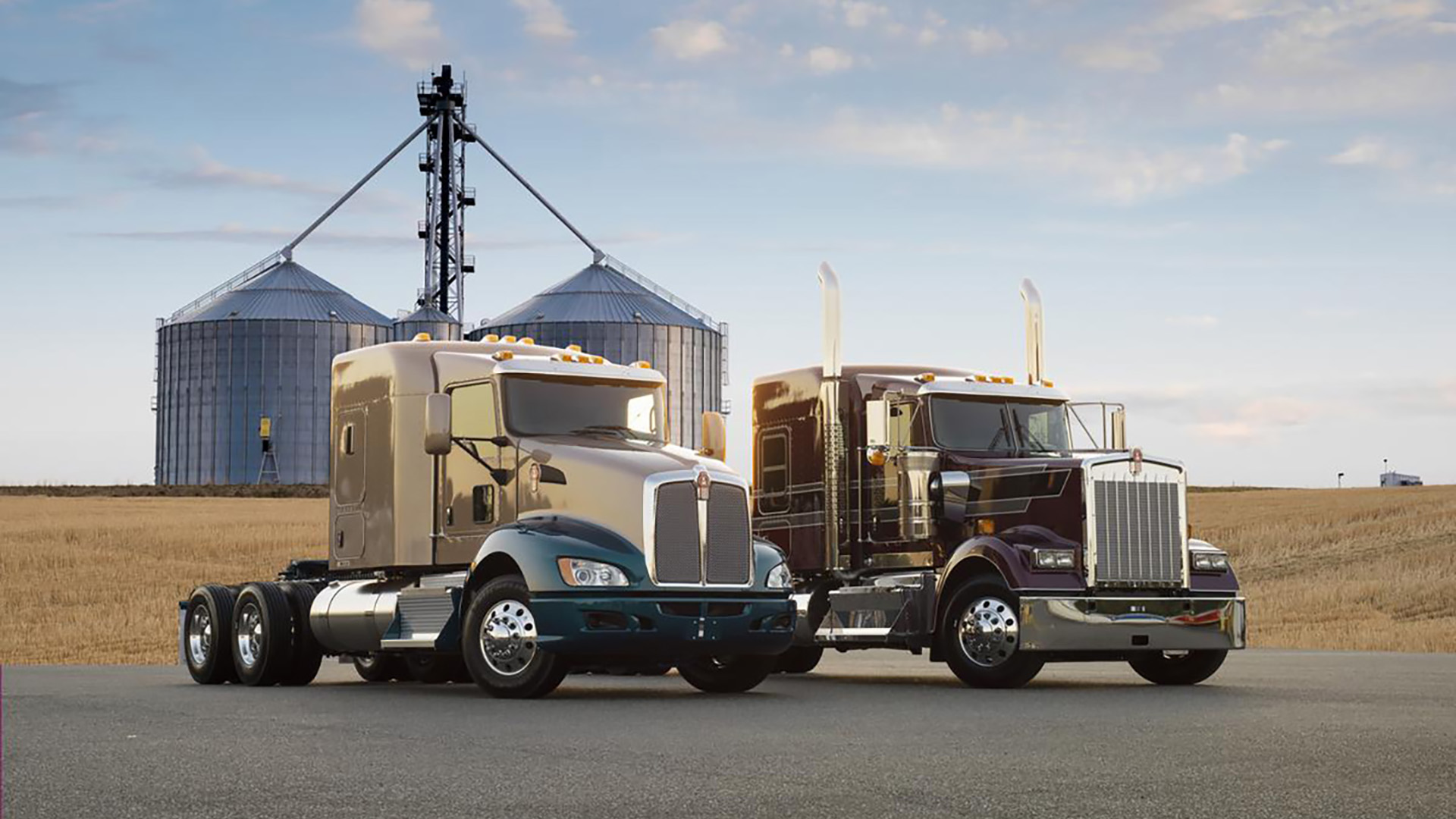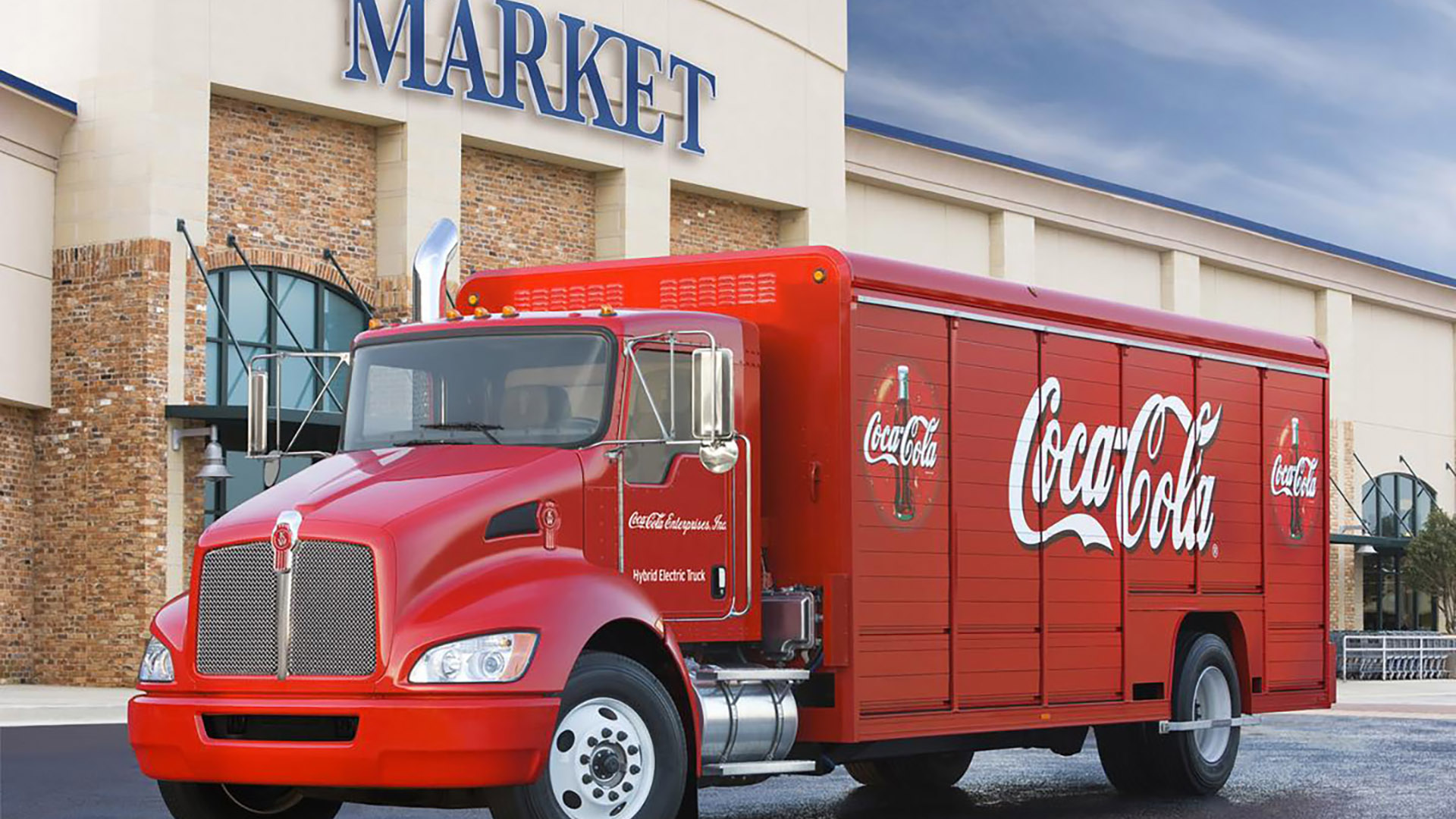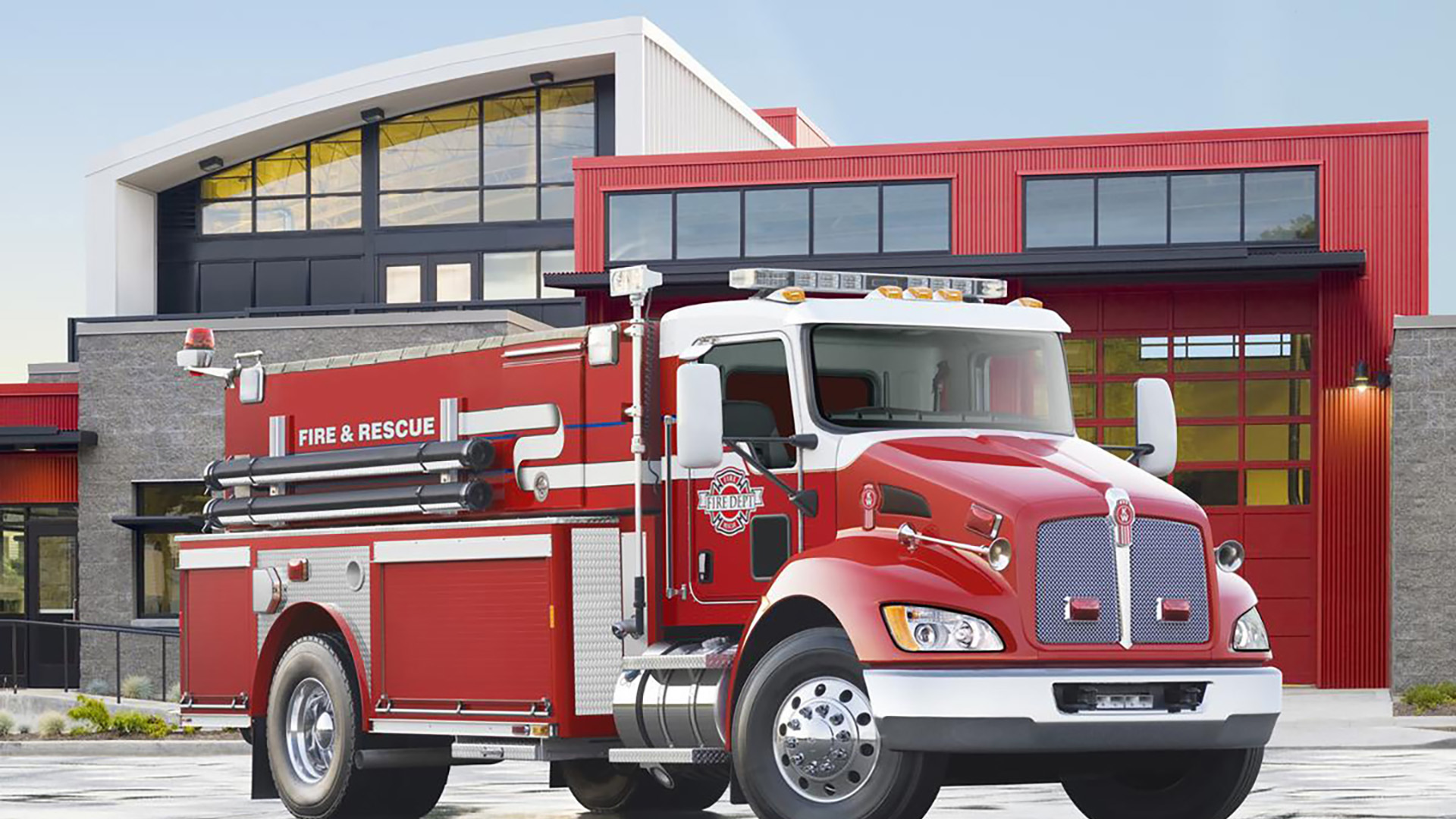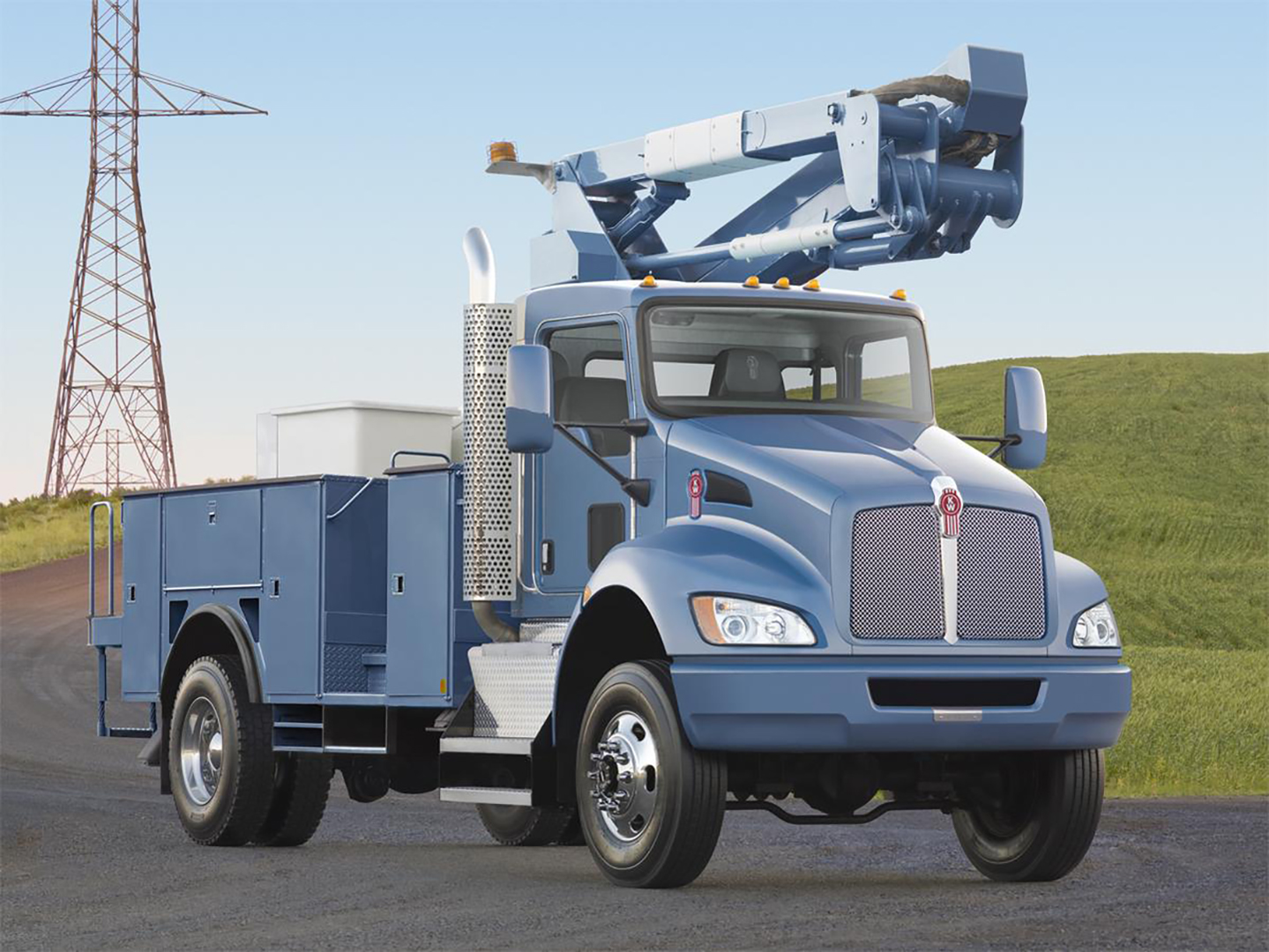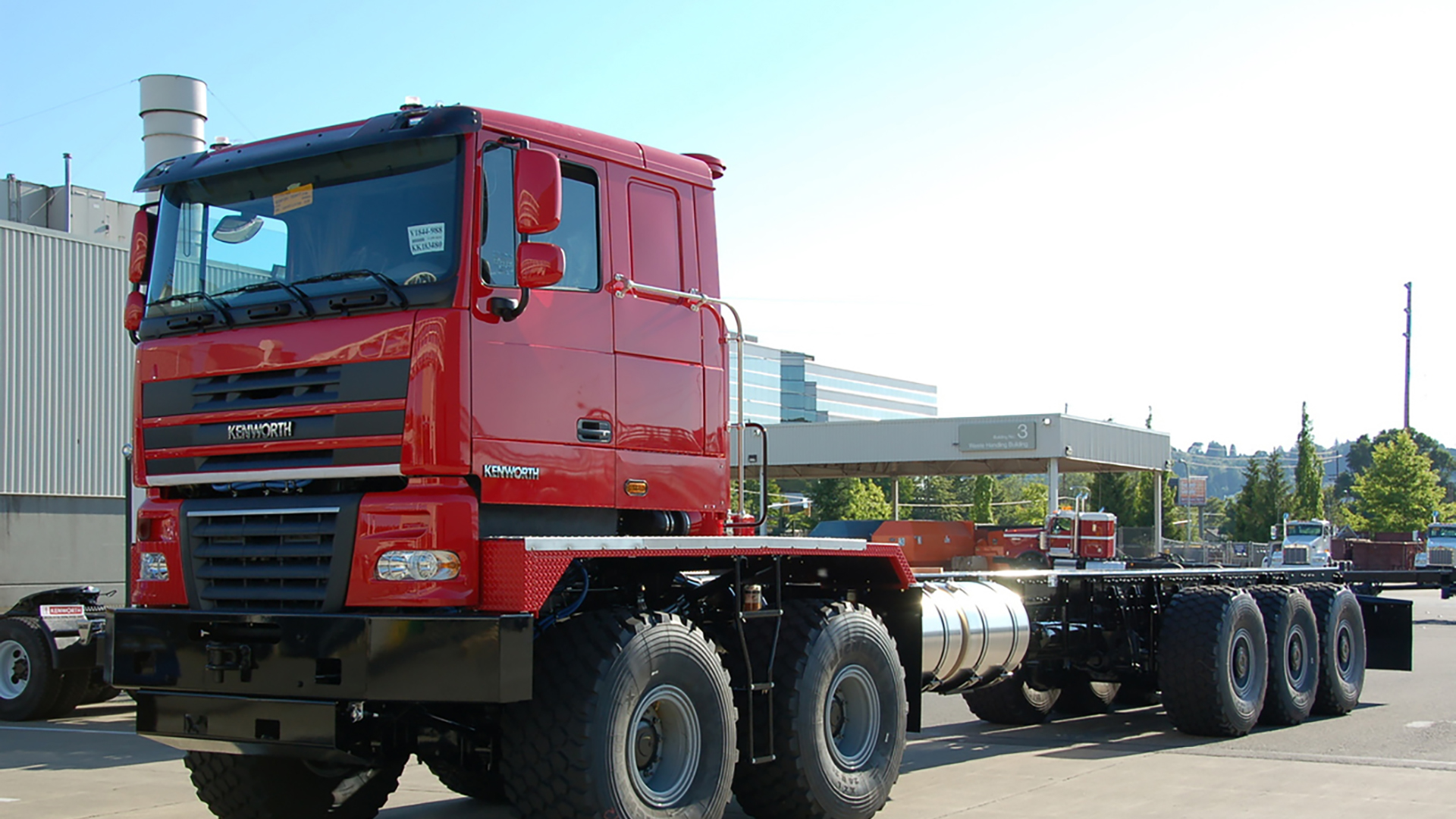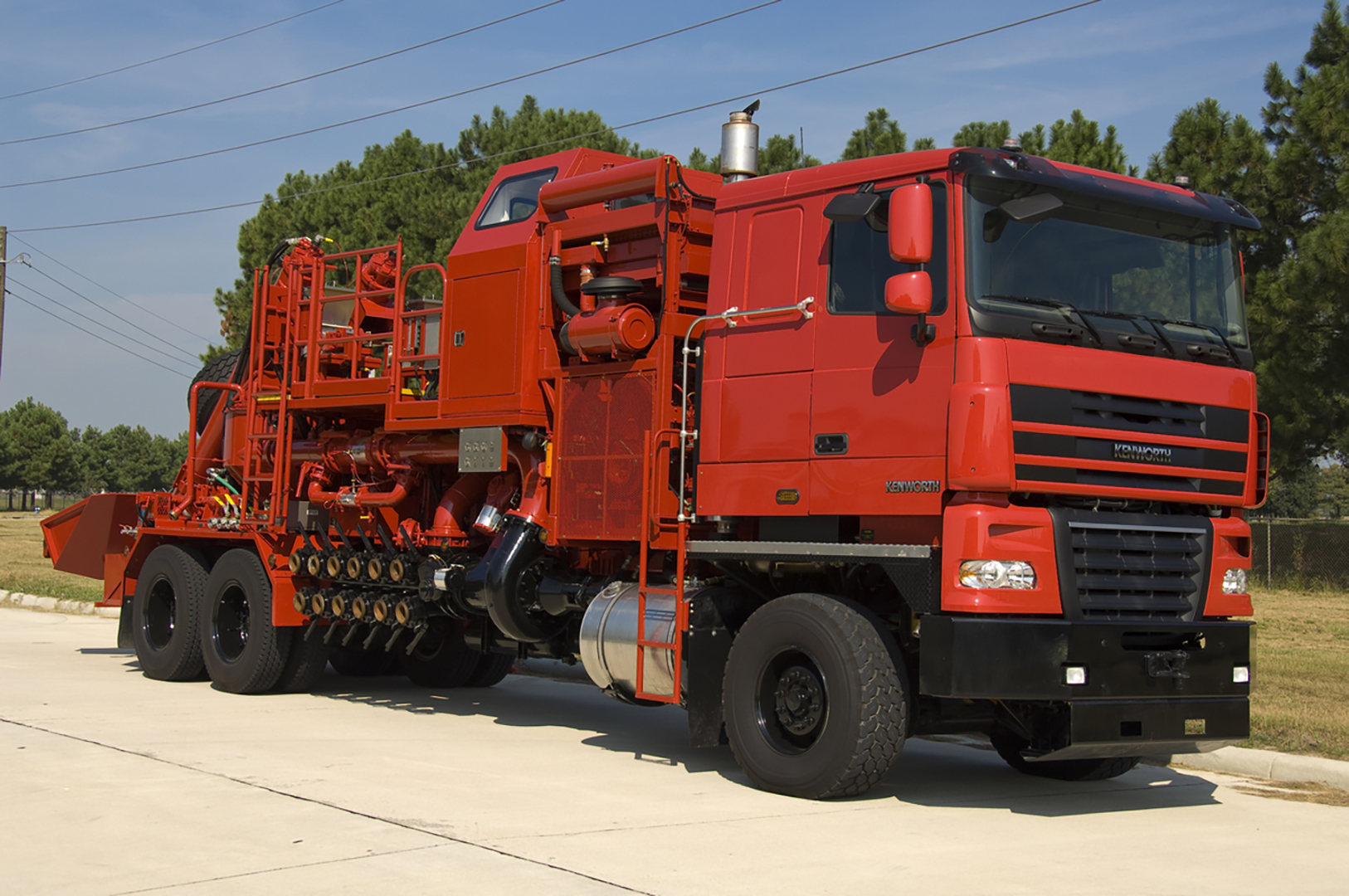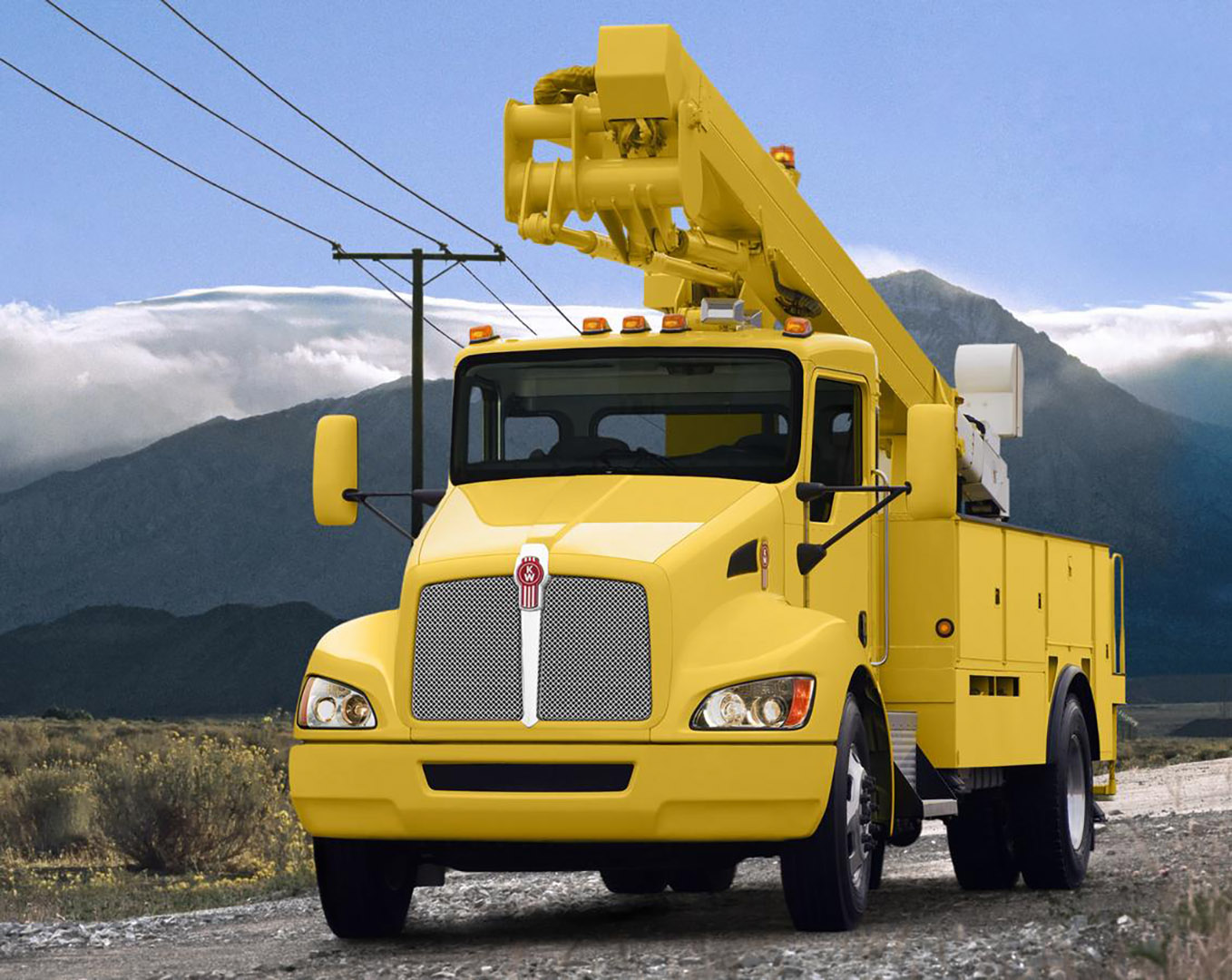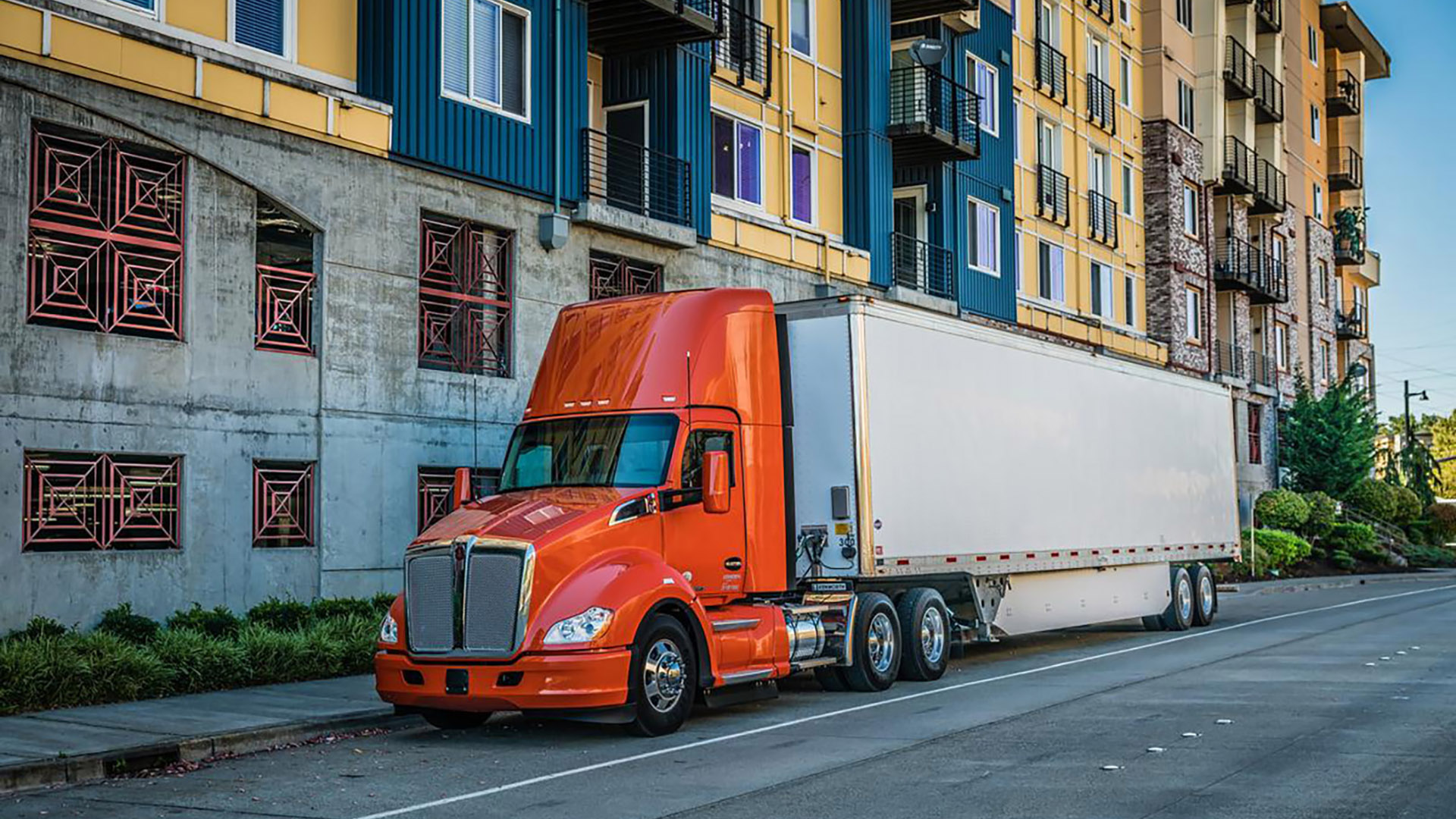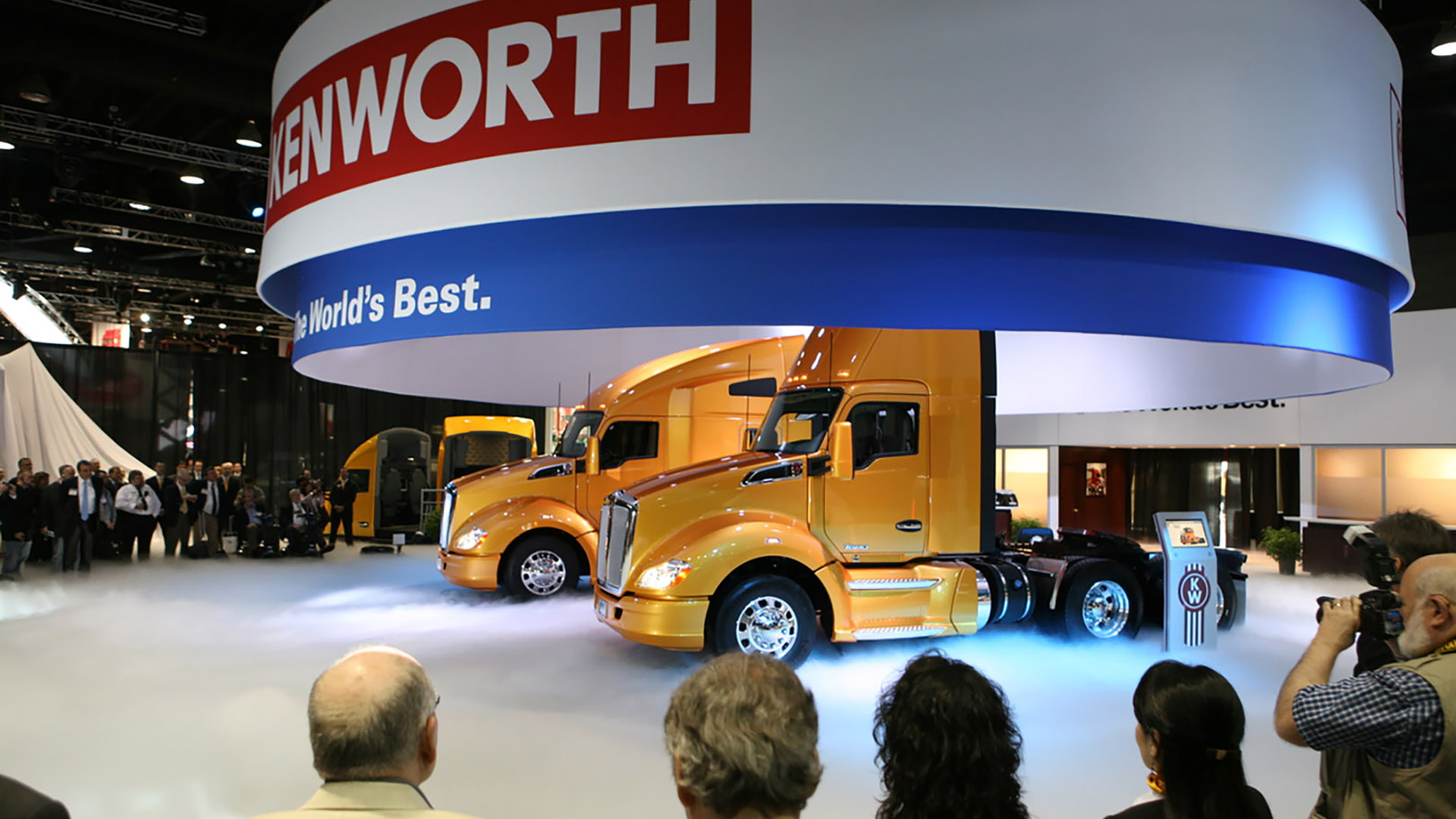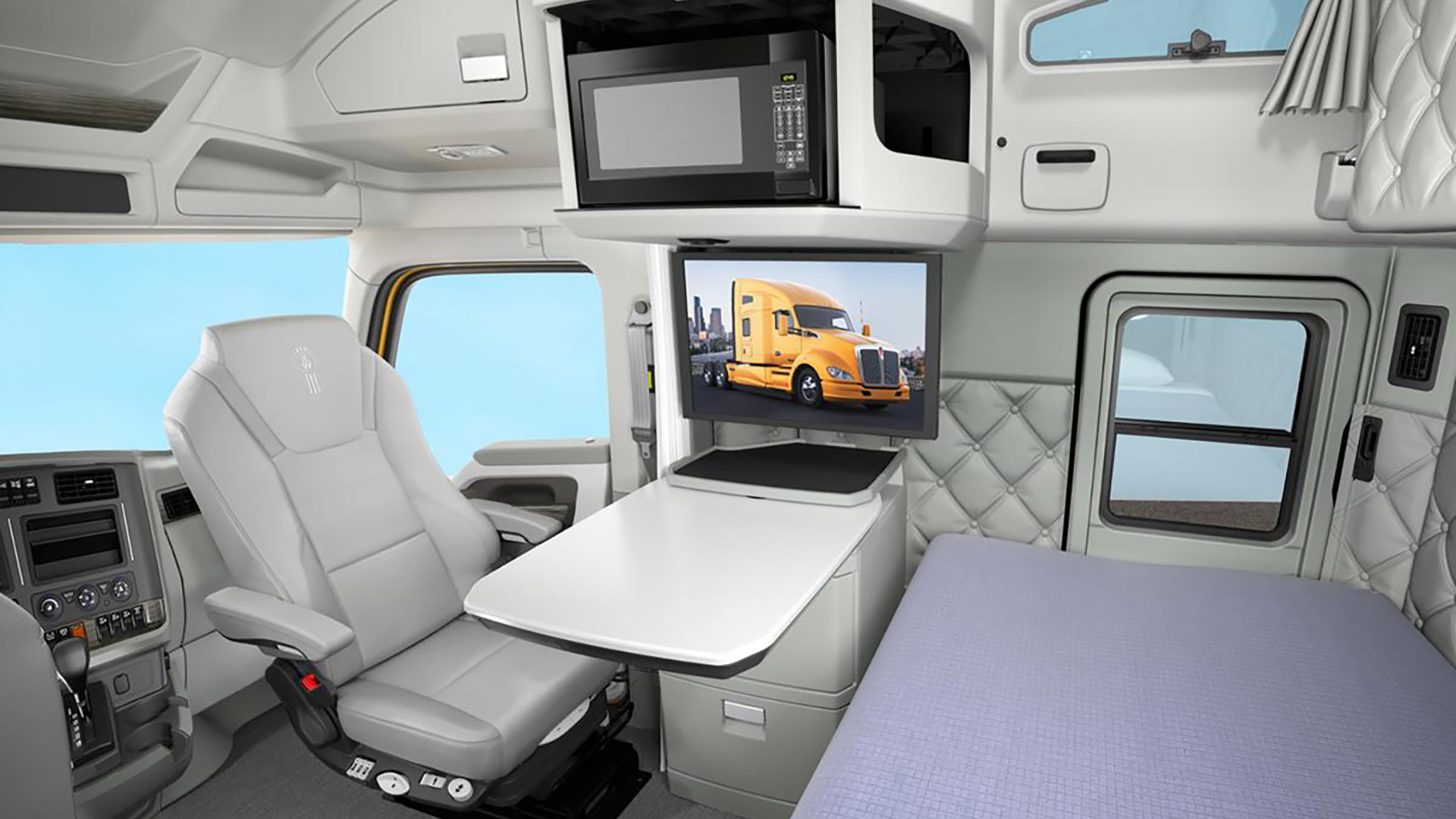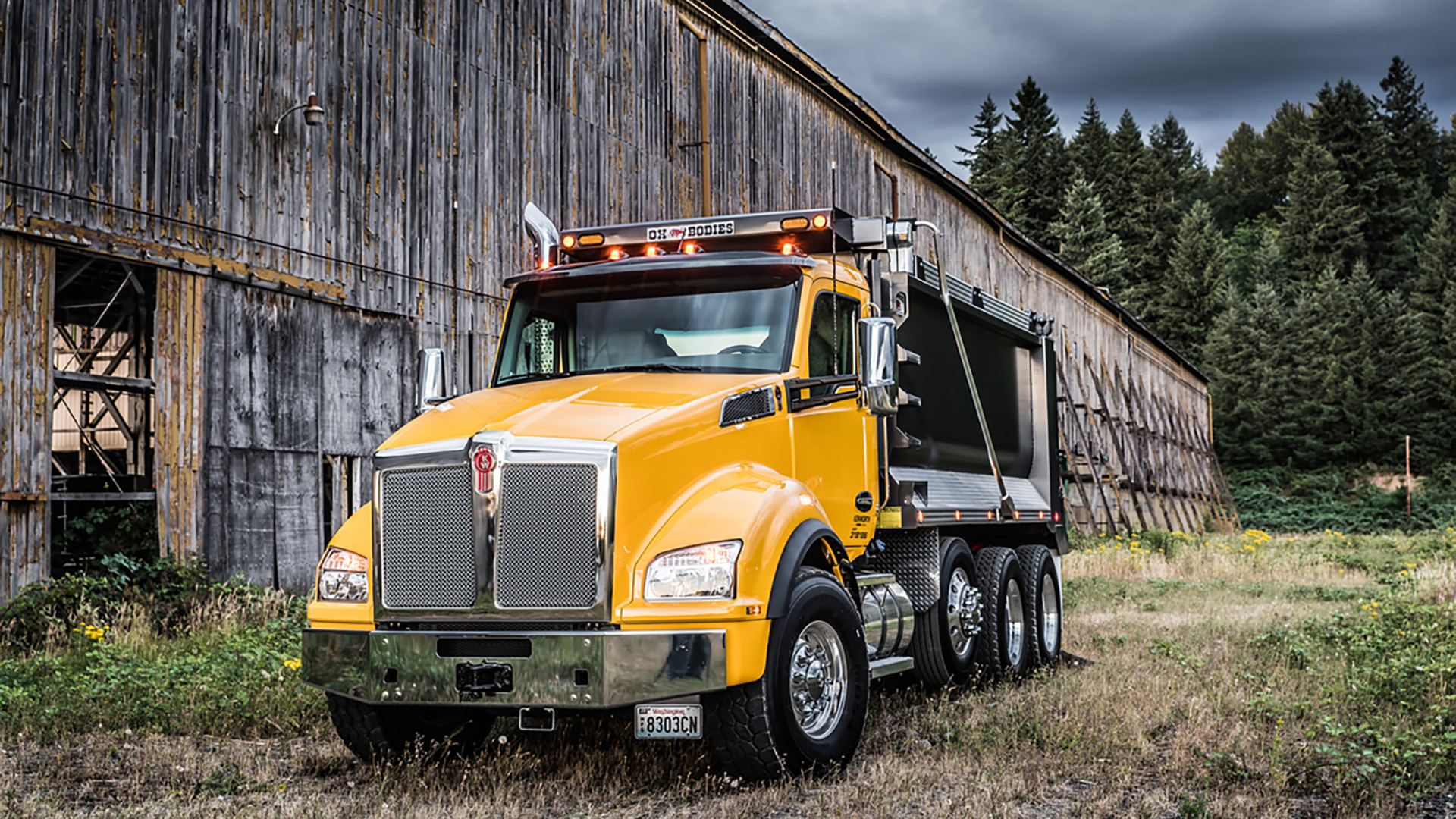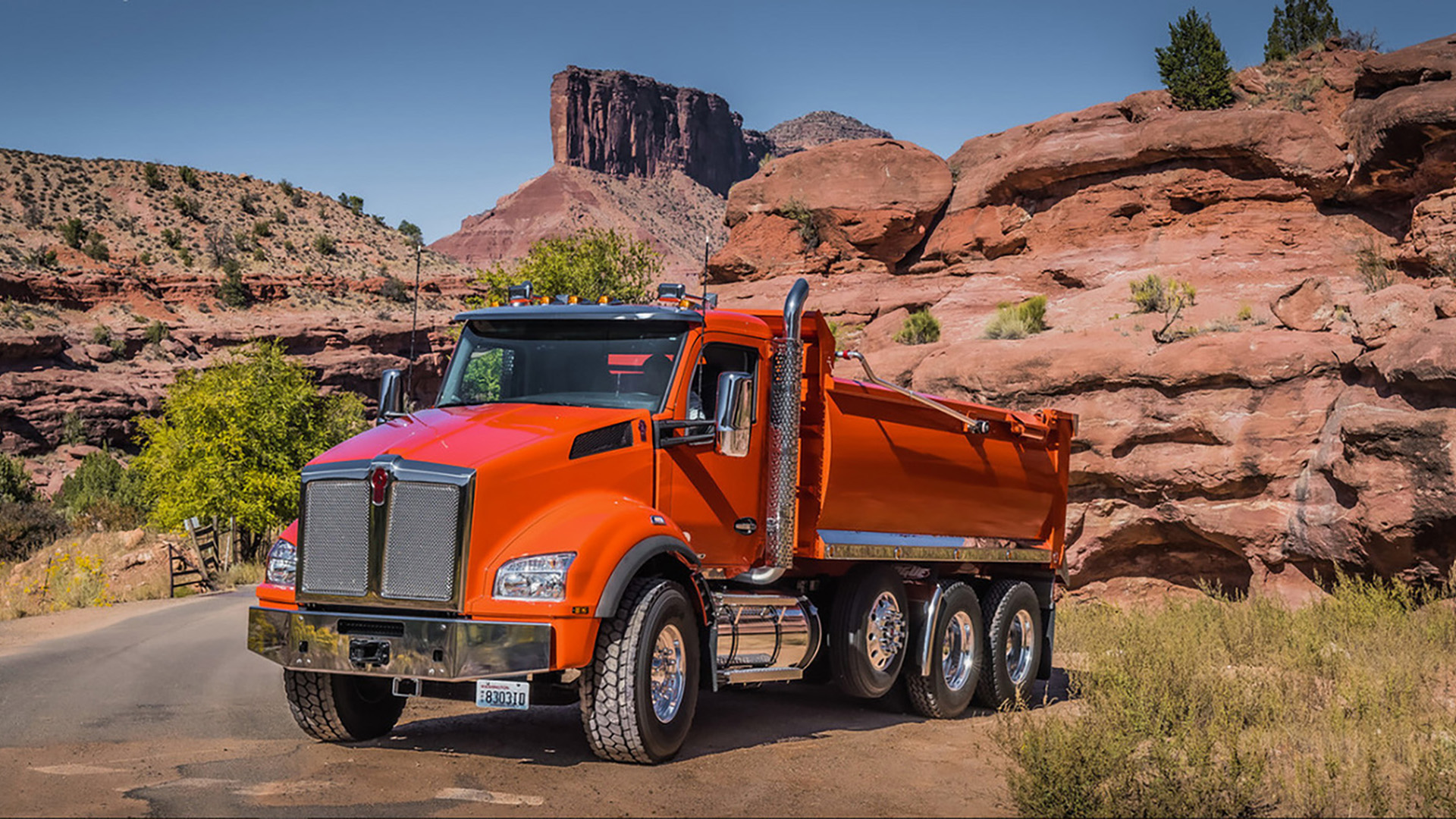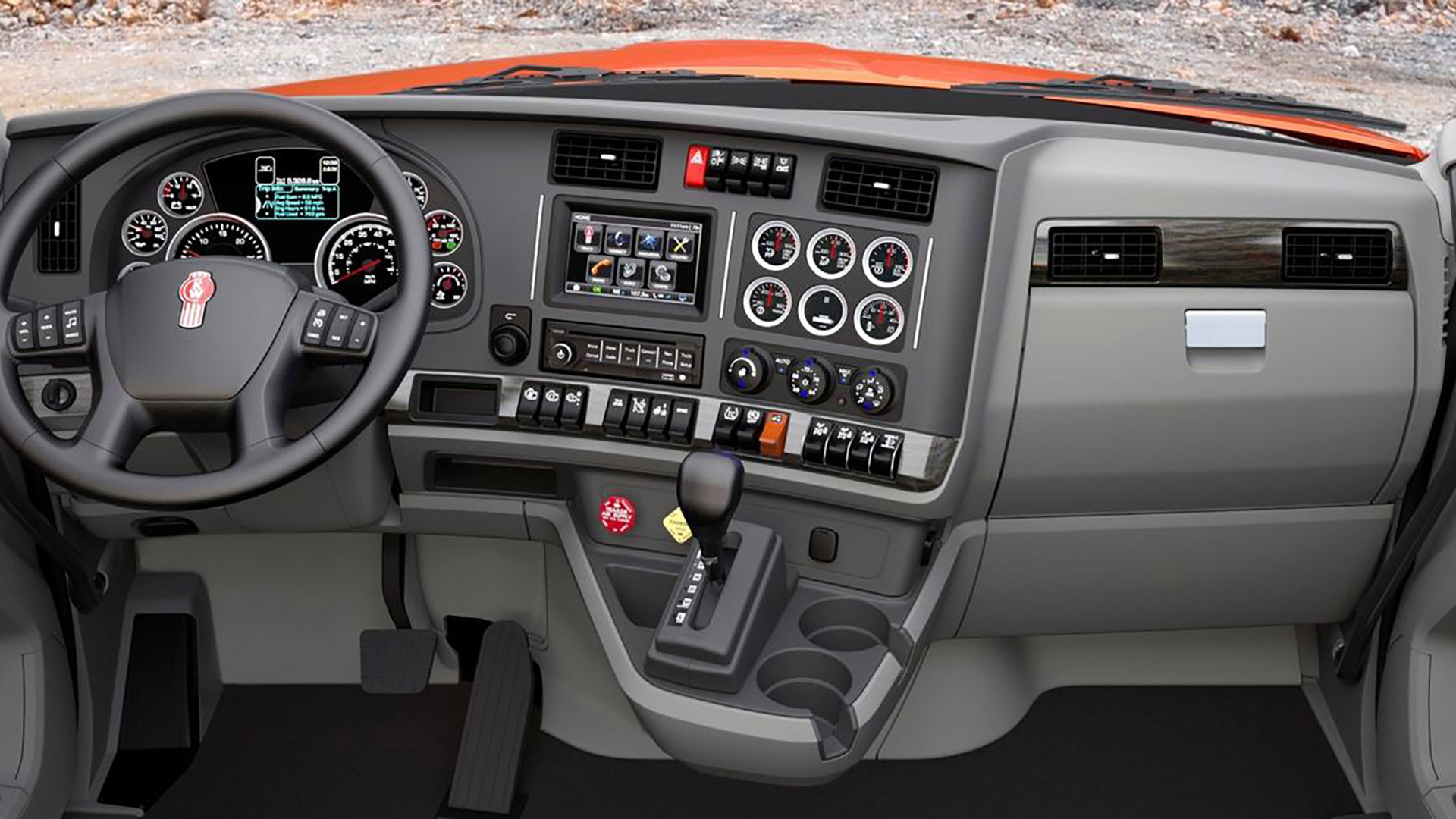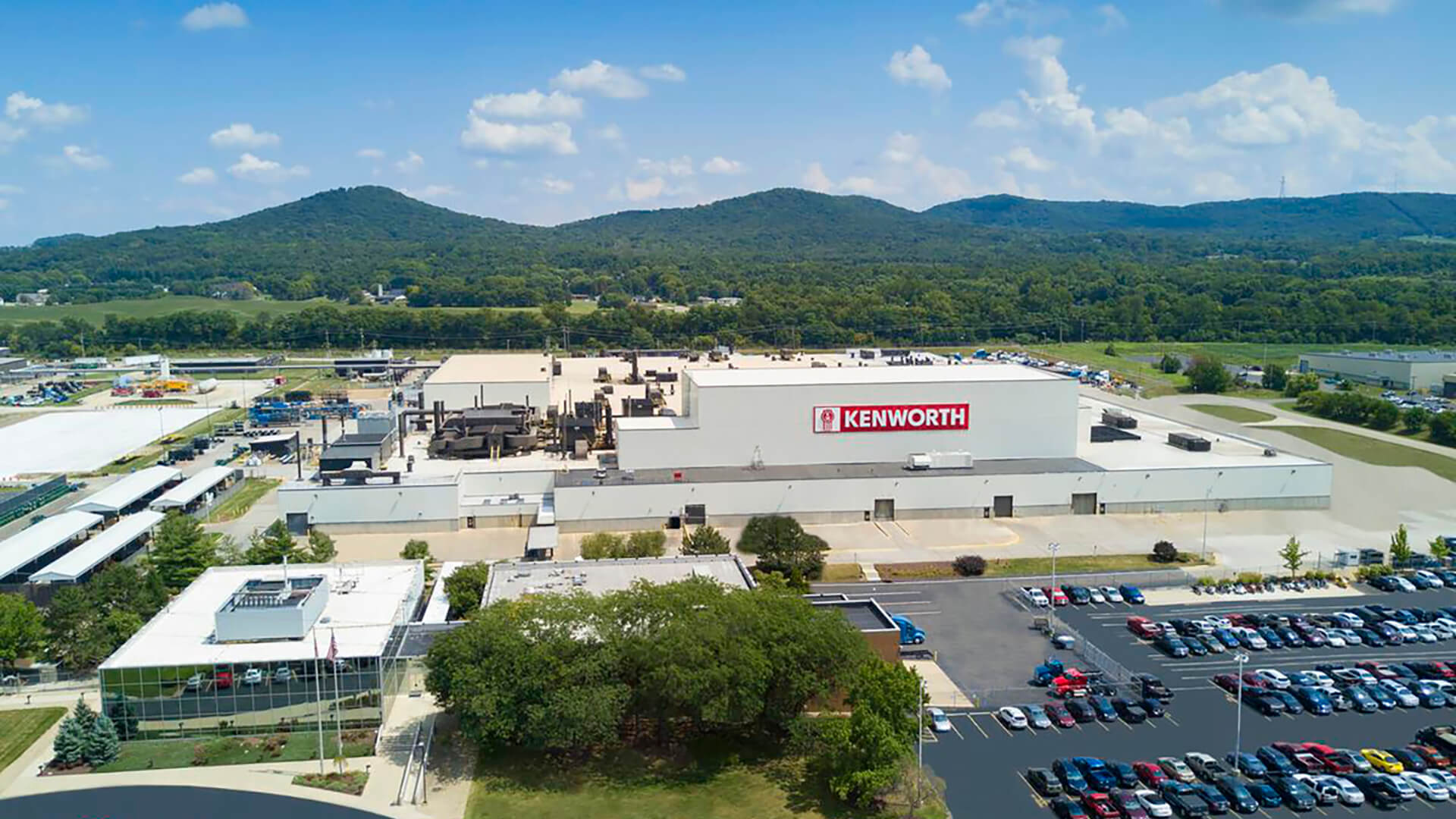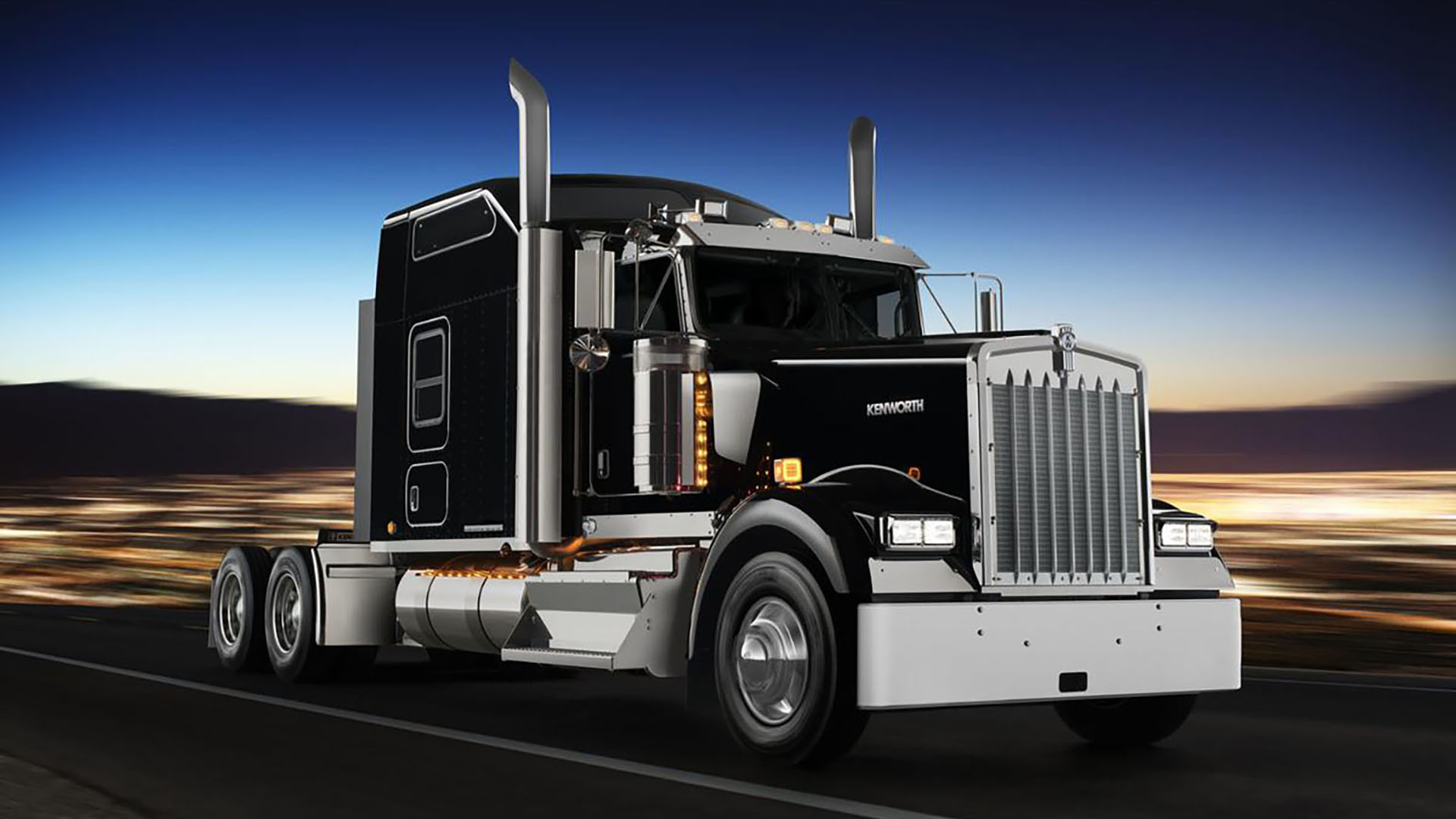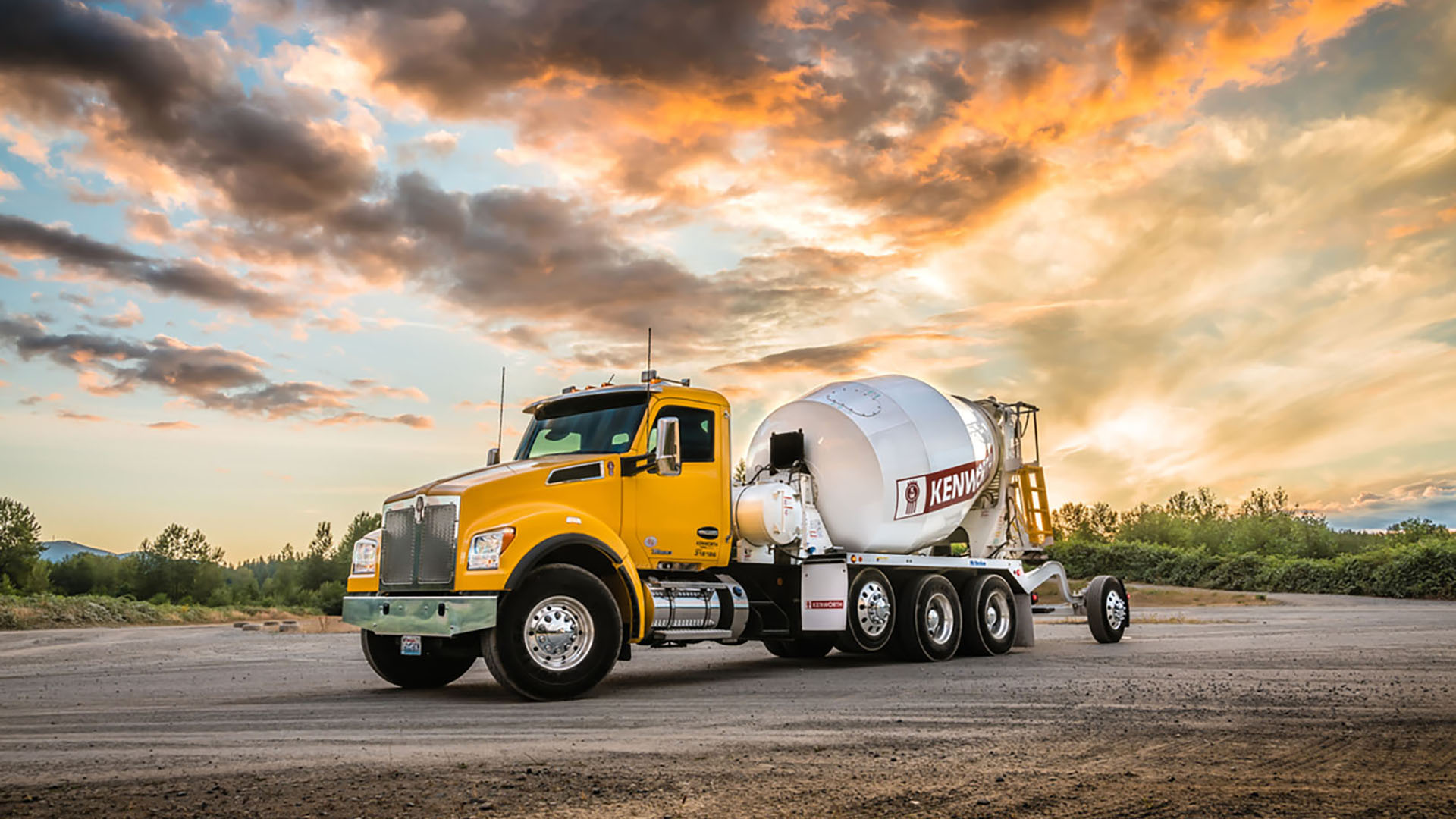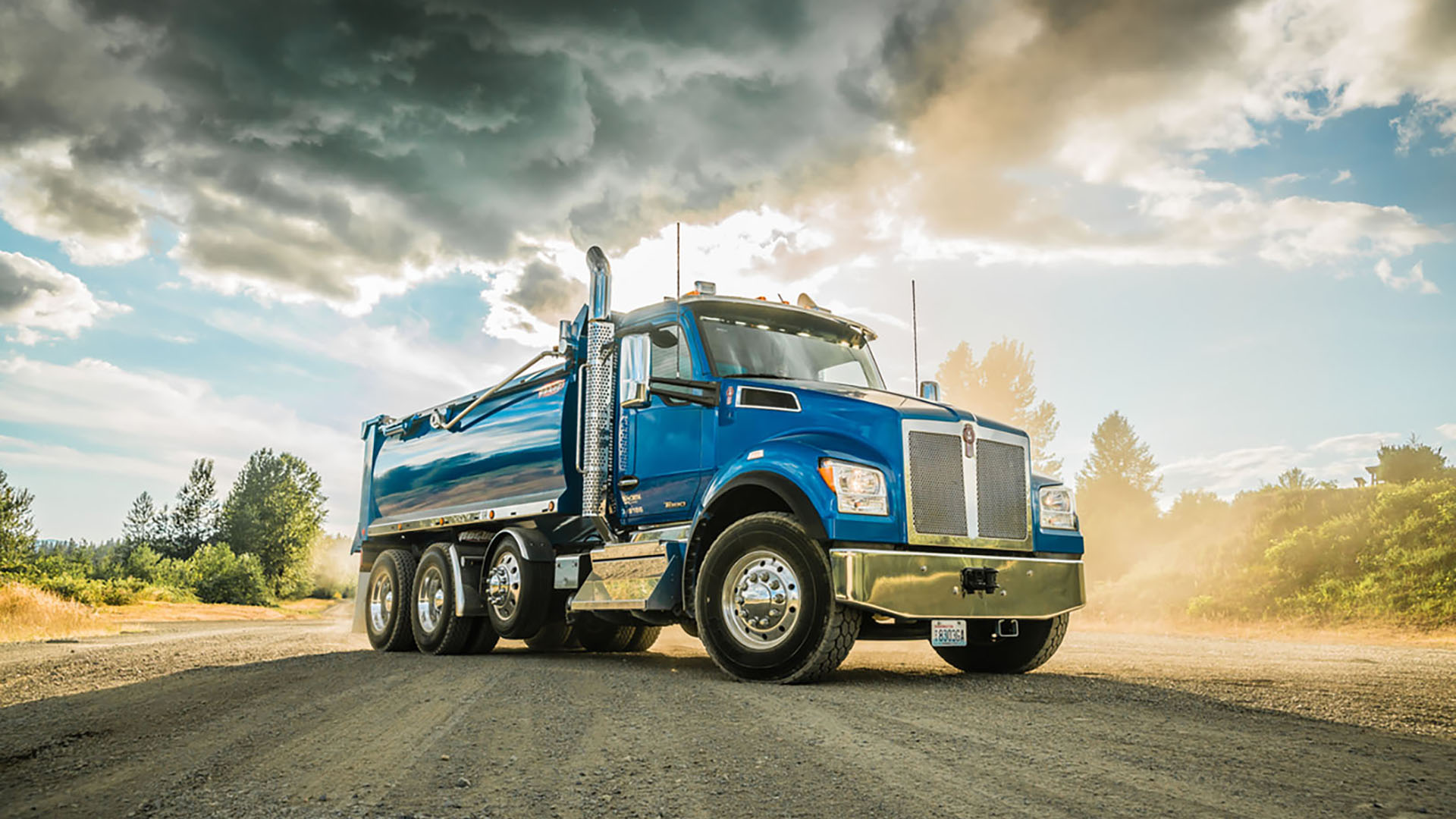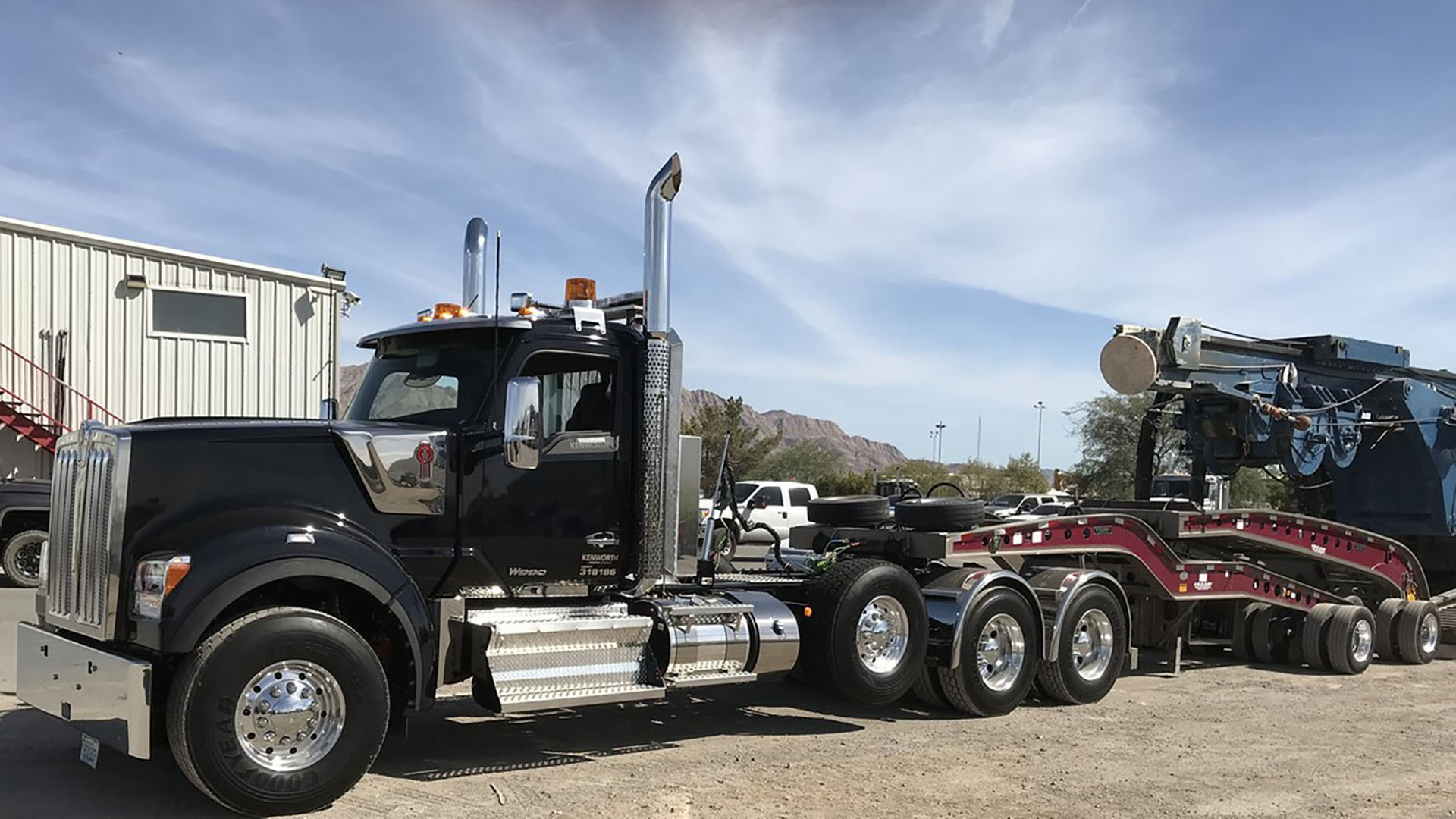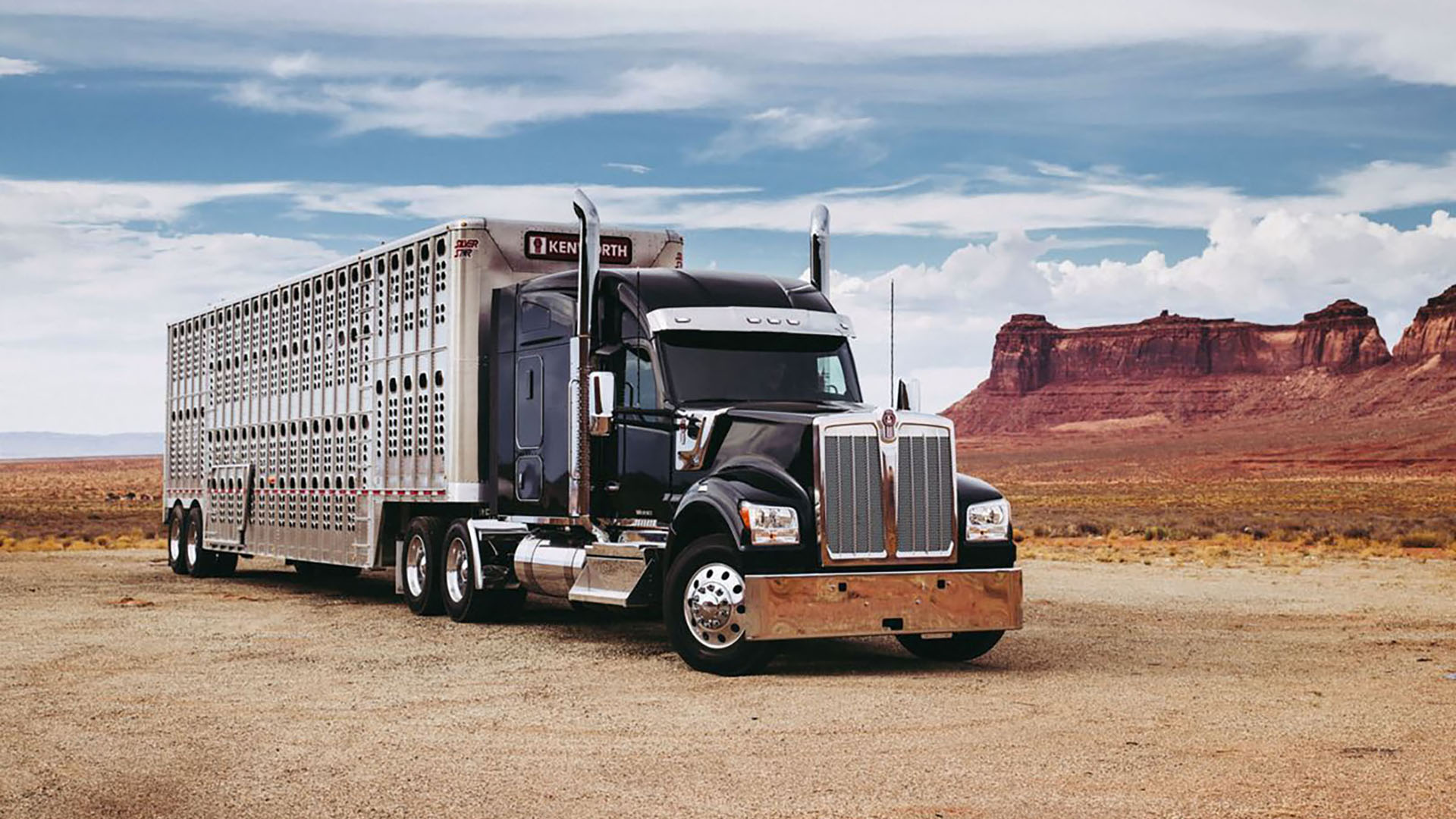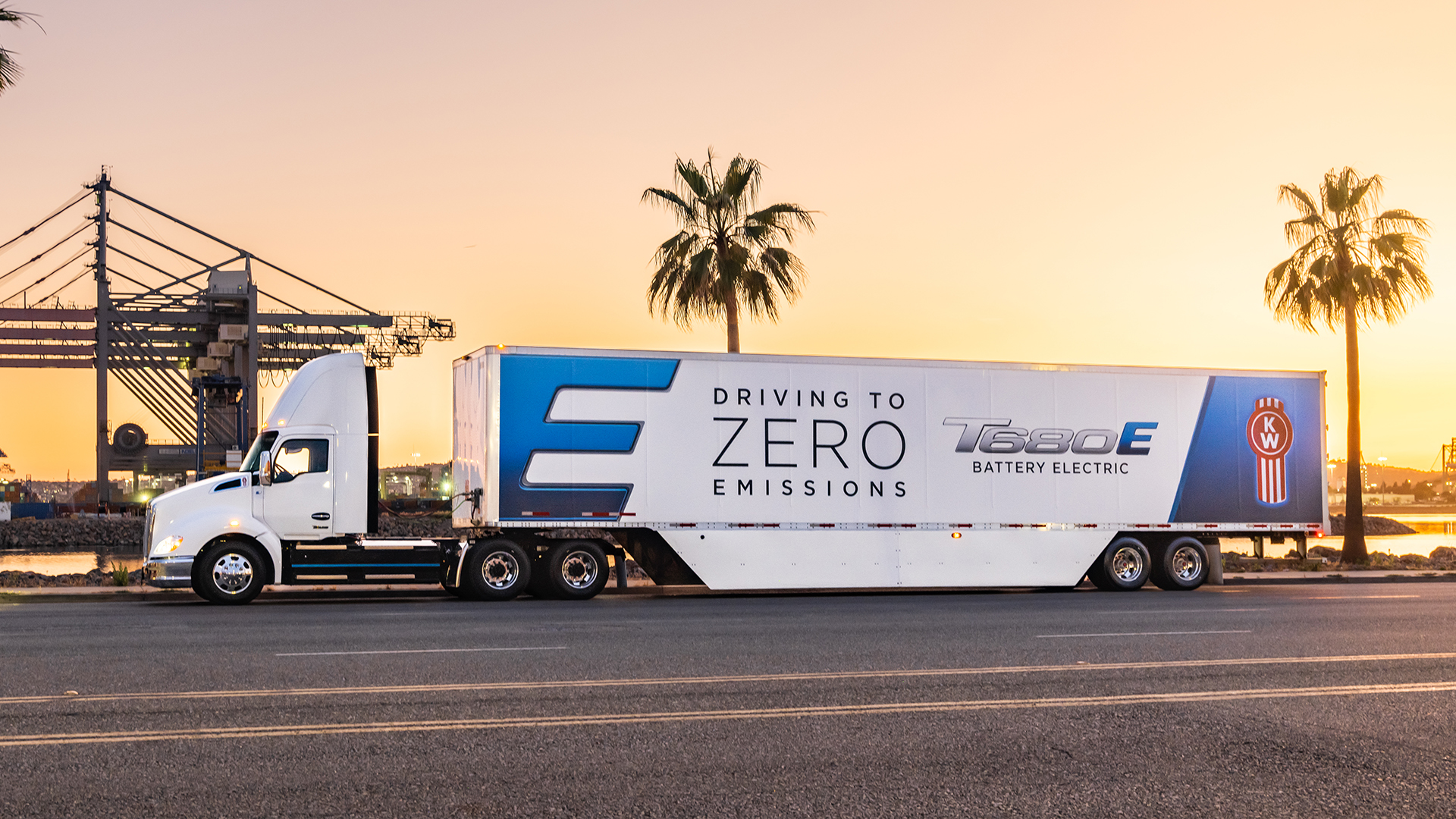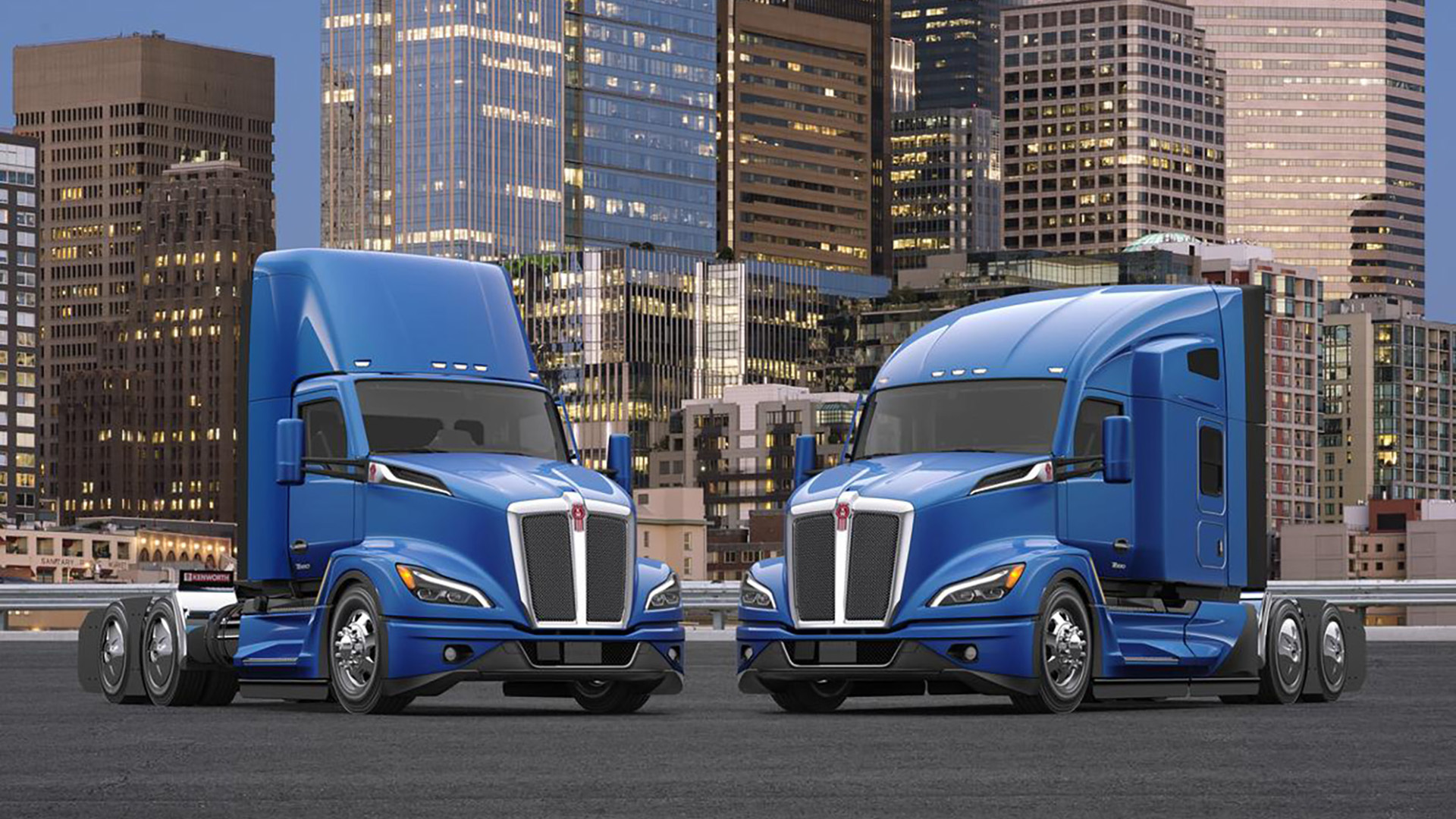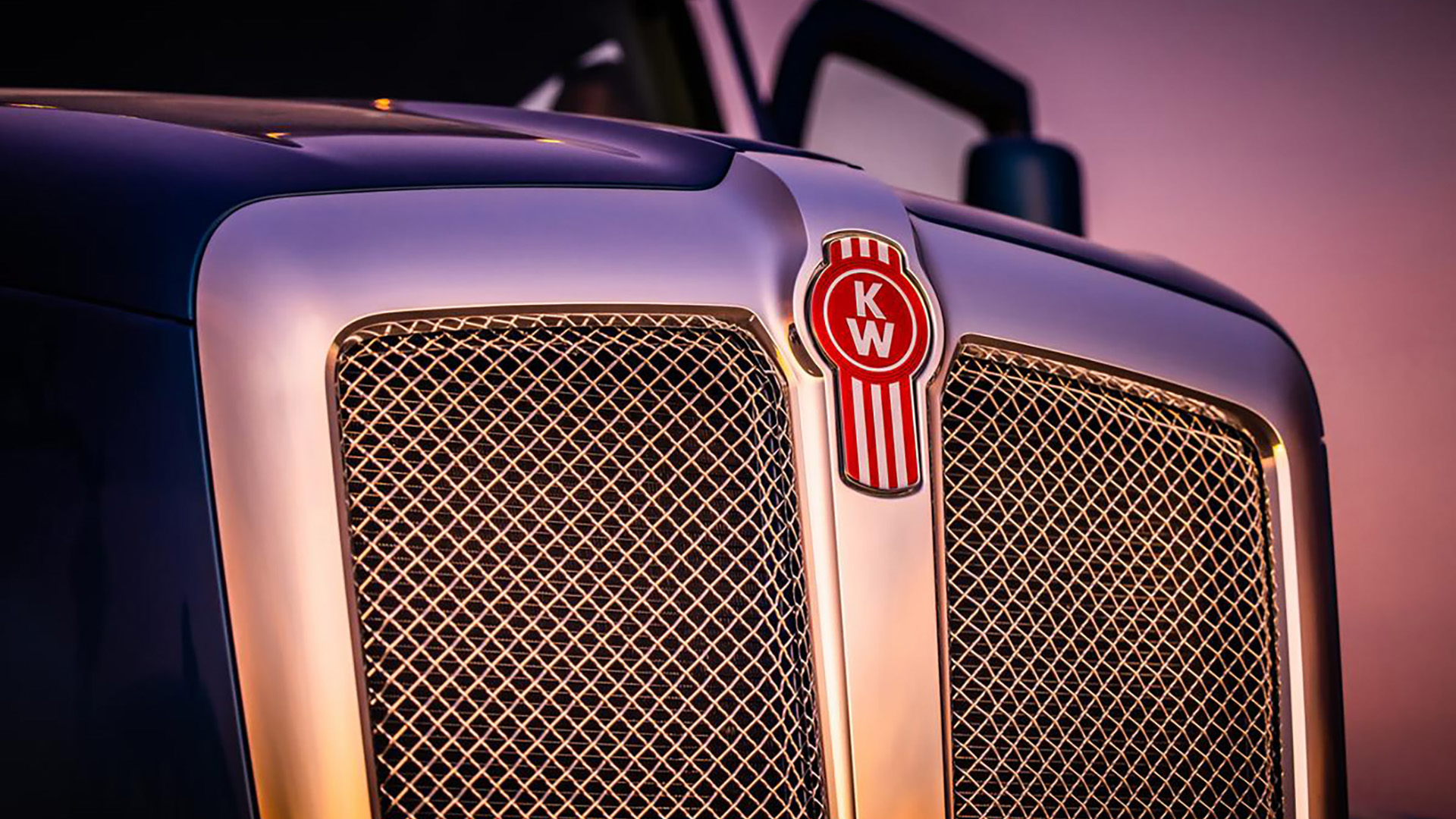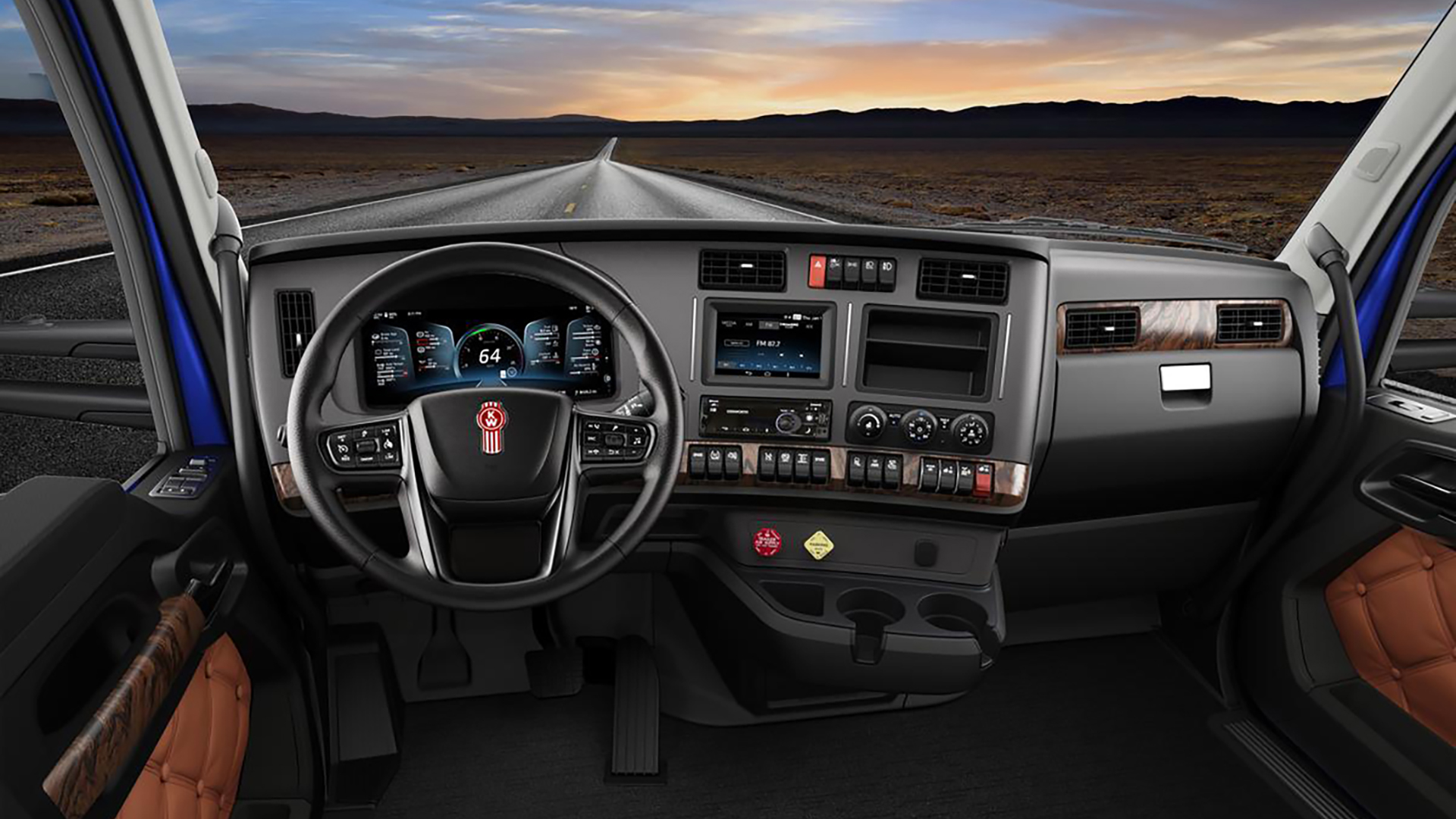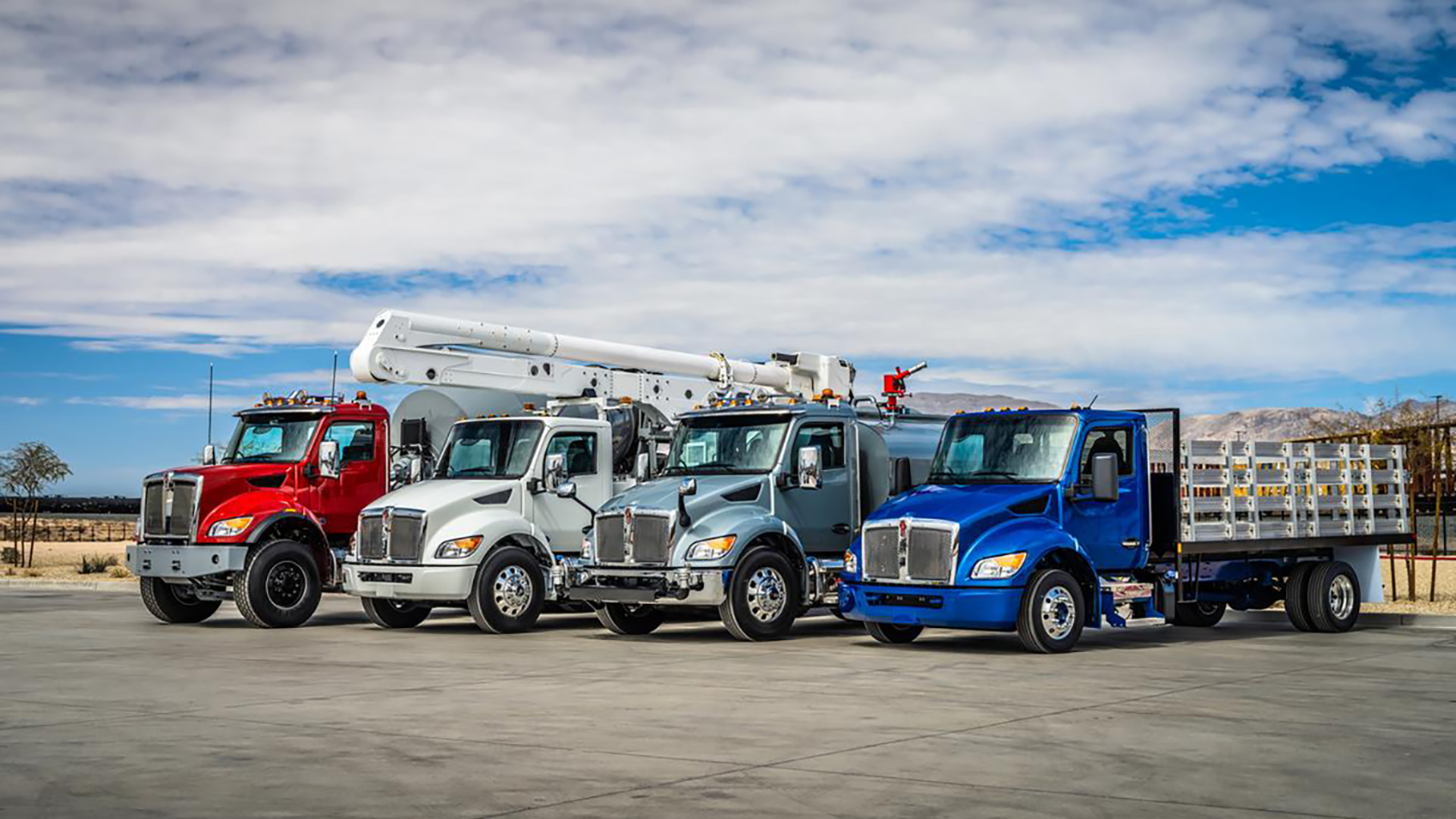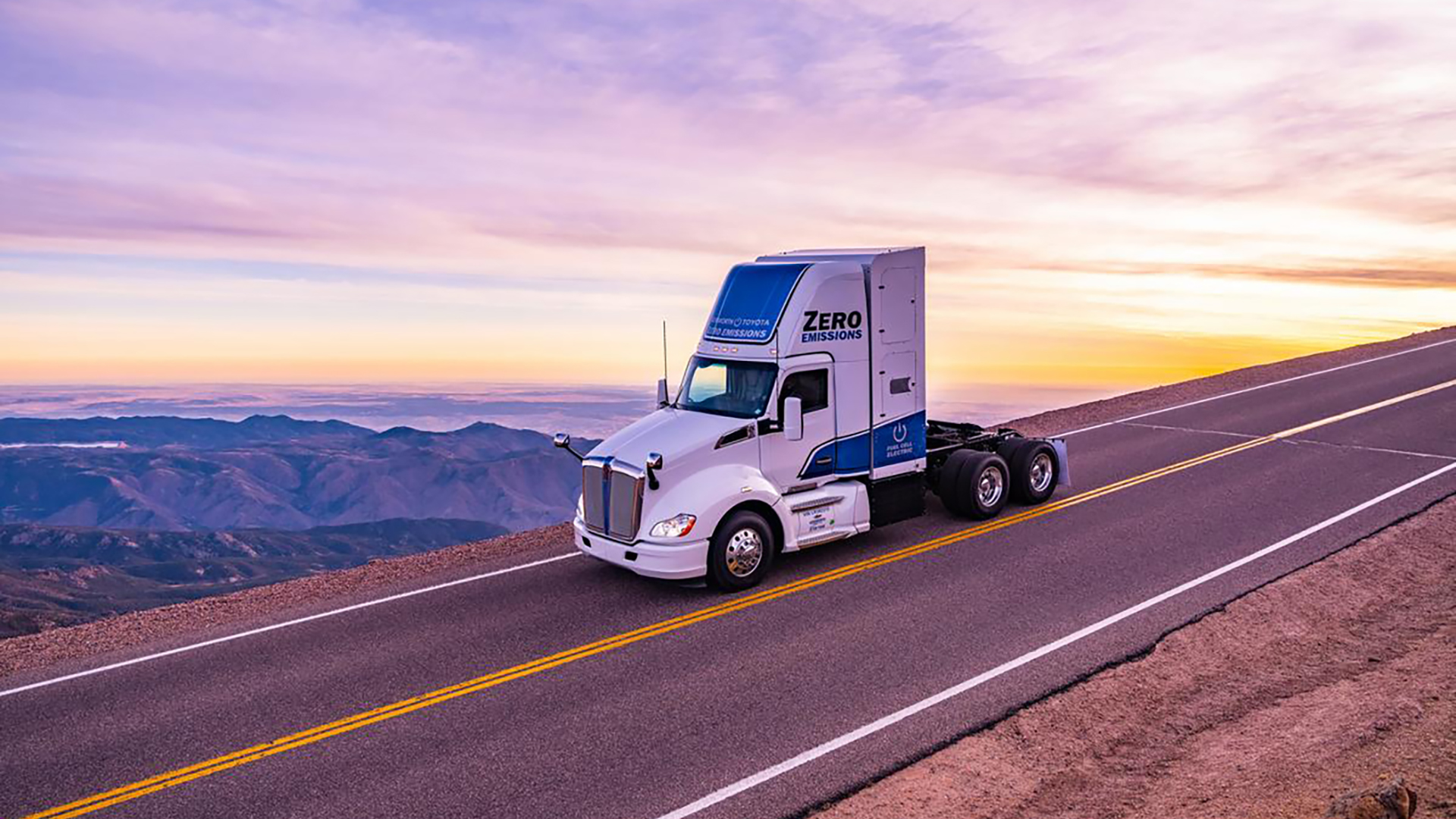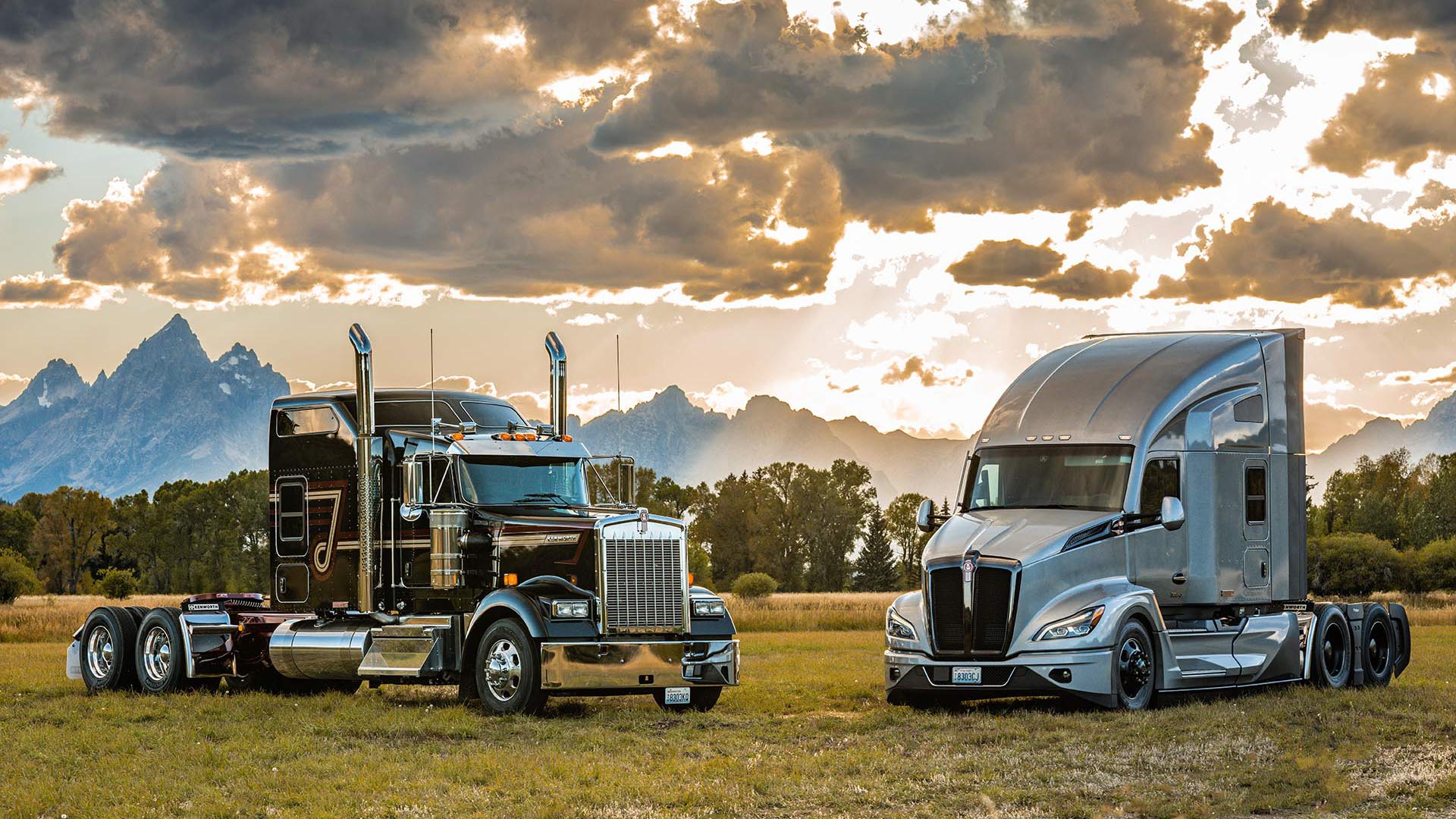100 YEARS
The Story of Kenworth
THROUGH THE YEARS
In 1923, Harry Kent and Edgar K. Worthington came together to tackle what many thought an unsolvable problem: To help Pacific Northwest loggers as they struggled to haul heavy loads down tight, rugged, muddy logging roads. By walking in those loggers’ muddy boots. Driving those slippery, winding mountain roads. They produced a truck as rugged and dependable as the loggers themselves. Kenworth has been innovating to solve our customers biggest transportation challenges ever since.
Take a scroll through the decades to see the innovative, premium quality, transportation solutions delivered over the last 100 years and exciting new technologies that will help Kenworth drive the next 100 years.
Kenworth’s origin story
January 22, 1923, at 9:04 AM Kenworth Motor Truck Company was incorporated. Harry Kent and Edgar Worthington, the two principal stakeholders, combined their names to create Kenworth, establishing their headquarters in Seattle, Washington. The first truck rolls off the line in March of 1923.
See the GalleryHumble beginnings and the key components of Kenworth
Kenworth sold a mere 80 trucks in 1924, but by 1925 upped their production to nearly two trucks per week, and customization became the Kenworth way.
See the GalleryGrowing slow and steady in Seattle and Canada
Harry Kent is named President and Kenworth grows enough to open a new factory in Seattle. This factory, on Yale and Mercer, is 120ft by 240ft and includes a showroom, service department, and offices. With a capacity of 50 trucks per month, Kenworth utilized this factory until 1946.
Additionally, in 1927, Kenworth has a first with the J-6 as the first Canadian-assembled truck to be delivered. This 3-ton truck was produced in British Columbia at the Vancouver Engineering Works on November 21, 1927.
See the GalleryPicking up the pace and trying out new trucks
Kenworth picks up speed and is building 250 trucks a year by the 1930s. By 1932 Kenworth enters the world of fire trucks, tailoring and producing them to each fire station's specific needs.
See the GalleryKenworth finds their footing in firsts
Kenworth installs and uses diesel engines as standard equipment, making them the first American truck manufacturer to do so. The first of many was built for Valley Motor Express in California with the truck featuring the first vertical exhausts in the industry and a 4-cylinder, 100 hp, HA-4 Cummins diesel engine.
Firsts didn’t stop there as Kenworth decides to become the first to offer an integrated sleeper cab. The cab featured enough room to lay down and sleep for elongated periods of time. A separate sleeper cab was not developed by Kenworth until 1947.
Regulations on the radar to benefit truckers and the conversation of weight
The Motor Carrier Act in 1935 resulted in regulations from the Interstate Commerce Commission Safety Department in the form of established routes and fixed rates geared toward the growth of financially capable and reliable trucking companies. More truckers were able to purchase equipment from Kenworth and a great expansion of truck routes was seen, leading to the development of transcontinental runs.
Each state had their own weight configuration laws to preserve older bridges and highways, so weight became a significant topic of conversation. Many Western states included weighing stations along highways. To accommodate these new standards, Kenworth launches aluminum hubs and cabs; many were skeptical, but soon Kenworth was copied by the rest of the industry. Later aluminum bumpers were included in the weight-saving technique and were placed on order from Canadian Greyhound for the first time.
See the GalleryMore firsts and new management following unfortunate events
Kenworth produces the first cab-over-engine truck (COE) in the form of the Model 516. This advancement took place because New Mexico allowed so much weight per axle but only a 45-foot length. While the design was efficient and met legal requirements, it was not a hit with drivers who preferred the traditional cab.
In 1937, Harry Kent passes from a sudden heart attack at 55. Former President of Boeing Airplane Company and United Airlines, Philip Johnson, is named President of Kenworth.
See the GalleryNeedle Nose sails Kenworth into the 1940s
Kenworth launches the 500-Series model, later dubbed “Needle Nose,” which propelled them into the 1940s as the heart of the commercial truck line. Needle Nose became the hallmark of Kenworth with its ability to haul in tough conditions with loads unattainable to other trucks.
See the GalleryGrowth and making a name for Kenworth engineers
Kenworth begins forming traditions to better the company. Kenworth engineers were building trucks with boots on the ground, literally. The motto “Kenworth engineers wear muddy boots” was born because the engineers designing the trucks went into the field to see how their designs performed. This service enabled the engineers to find exactly what was going wrong, allowing improvements to their design. Everybody won in this scenario because it allowed the vendor to sell a better truck, the customer had a more durable truck, and Kenworth had fewer headaches.
See the GalleryKenworth chips in on the war effort
Following the Pearl Harbor attack in December 1941, Kenworth started the production of four-ton, heavy-duty M-1 “Wreckers.” 1,500 more were ordered after the initial 430 by the end of the year. These six-wheel-drive vehicles featured powerful cranes, fore and aft winches, cutting and welding equipment, and special floodlights, making it the ideal vehicle for combat conditions.
See the GalleryAnother plant for production
Kenworth had to move their M-1 Wrecker production inland to retain contracts because Seattle was declared a “critical labor area.” An additional factory at the Yakima fairgrounds in Central Washington resulted to build more Wreckers. Following this, Kenworth began producing components for the B-17 “Flying Fortress” and the B-29 “Super Fortress” aircrafts at the Seattle plant.
See the GalleryKenworth goes military and the passing of Philip Johnson
Kenworth moved into military production due to World War II. Out of this era came tank retriever wreckers, bomber nose-cone assemblies, and other aircraft parts. Installing a moving assembly line replaces the stall building previously used. This era allowed Kenworth to gain valuable knowledge on aluminum sub-assembly and the use of aluminum extrusions, which prompted the first aluminum frame rail to be produced and installed on a Kenworth. Following this, the President of Kenworth Philip Johnson, passed suddenly from a stroke.
See the GalleryChanges in Kenworth and coming home
Paul Pigott of Pacific Car and Foundry offers a deal to the owners of Kenworth and Kenworth becomes an owned subsidiary of Pacific Car and Foundry, which was later renamed to PACCAR. Seattle once again becomes the home of all Kenworth manufacturing in 1946 to consolidate and open an additional facility. The South Seattle facility had chain conveyors for the line and produced trackless trolleys, inner-city buses, and dump trucks. Sales began expanding to South America, Africa, and the Middle East.
See the GalleryFirsts, redesigns and putting the driver first
Kenworth creates a separate sleeper connecting to the cab to provide a sleeping compartment, another Kenworth first. Following this change, Kenworth releases a new cab in the COE line in 1948; later nicknamed “Bull-Nose” in the 500 Series.
Drivers began showing off decals that stated “Everything You Eat, Wear, or Use Comes by Motor Truck” as a reminder to how important the trucking industry is.
See the GalleryWorldwide growth
Kenworth’s distribution grew to 27 locations outside of the United States by 1950, and foreign sales accounted for 40% of all sales. There were various models, from the 825 with torsion bar suspension to the super heavy-duty Model 888, rated at 110,000 pounds GVW. Kenworth had over 30 models operating in most states west of the Mississippi without sacrificing their dedication to custom trucks.
See the GalleryCementing a reputation by hauling over state lines and worldwide
Kenworth designed the Model 853 for the Arabian American Oil Company (ARAMCO). This successful launch resulted in 1,700 orders. Kenworth followed this up by developing the 801 for earth moving in America. 801, 802, and 803 models featured 18-72 ton chassis; larger 48-72 ton units were integrated tractor-trailer articulated units.
Additional export applications were the model 524 6 x 4 chassis which operated in Peru, hauling 60 tons of high-grade ore per trip down winding mountain roads and difficult terrain. The 851s were specially designed to haul water, geophysical equipment, and oil rigs across desert wastelands in Pakistan. 521s in Mexico were equipped with larger radiators and hauled freight out of Monterrey, which meant 1,000 miles of unpredictable climate and terrain. 524 models in Ketchikan, Alaska included off-highway loggers and 12-foot bunks that traveled intense logging roads through virgin timberland. Hauling up to 13,000 board-feet of logs each load, these trees average 80 to 140 feet in height; which cemented Kenworth’s reputation internationally for being able to supply heavy-duty off-road frames that were built to last.
This same year Kenworth completes production on their 10,000th truck.
See the GalleryBreaking records and growing the Canadian market
In 1952 Kenworth breaks their personal record, producing 1,000 trucks per year for the first time ever. That same year they created a prototype T10 Atomic Cannon Transporter for the U.S. Army. In 1953 they launched a cab-beside-engine design that is loved in a variety of applications. To better serve a growing market, Canadian Kenworth opens a new plant in Burnaby, British Columbia.
See the GalleryTaking the old and making it new
Kenworth introduces a conventional-cab truck with the 900-series. This model replaced the 500-series initially introduced in 1939. Following this the trademarked “UnitGlass” hood made its debut, featuring a unitized fiberglass hood, fenders, and radiator shell for conventional models. The cab-over-engine model was also introduced.
See the GalleryNew products expand to the tarmac
Kenworth’s strong ties to the aircraft industry and Boeing made the seemingly unique product of the aircraft tug a no-brainer for their next move. Kenworth began producing vehicles that could move planes for delivery in snowy weather.
See the GalleryGrowth in emerging markets
South of the border, the Mexican government began to place quotas and restrictions on imports and locally-made vehicles made with foreign parts which opened the door for Kenworth to establish Kenworth Mexicana. The original Kenworth Mexicana plant in Mexicali was an open-air facility producing 5 trucks a month and quickly increasing production through further investments in operations.
See the GalleryA new president is named
Paul Pigott passes away and the Pacific Car and Foundry board met to elect Robert O’Brien as the new president. O’Brien was integral in overseeing the computerization of Kenworth’s production, parts operations, expansion of facilities, and the use of microfilm records.
The S900 was introduced which featured a sloped hood that gave good visibility. While this model didn’t do well in the United States, it was well-received in Australia and was continually produced for many years.
Another milestone reached
Kenworth passed its 25,000th manufactured truck during 1962.
See the GalleryK for Kent and W for Worthington
Kenworth introduced the W900 line of trucks that featured larger cabs and redesigned instrument panels.
Kenworth initiated a new COE line aptly named the K100 series, the K standing for Kent, paying homage to one of the company’s original founders.
2,037 trucks and a new record
Kenworth develops a new plant that opened in Kansas City, Missouri. This plant stayed in use until 1986 and previously held the record for most Kenworth trucks produced in a year at 2,037.
See the GalleryBig numbers in major markets
Kenworth was producing over 3,000 a year by 1965. The W900 became the W900A model and featured a longer hood to better accommodate longer diesel engines and a larger radiator to better cool the engines.
See the GalleryGoing down under
PACCAR buys the Australian Kenworth Truck Sales Pty Ltd from Ed Cameron, who was responsible for importing and selling over 100 Kenworth prime movers. A Kenworth plant opened in Bayswater, Australia, and within two years they were producing right-hand drive conventionals and COEs for the market flourishing in Australia. Ed Cameron was a large part of the decision to manufacture in Australia and was a PACCAR director until the 1970s.
See the GalleryKenworth Mexicana plant expansion
The industrial plant of Kenworth Mexicana was built in Mexicali, Mexico, which remains the only manufacturing facilities for Mexico and Latin America.
See the GalleryEvel Knievel and a special Kenworth
The Very Important Trucker, known as VIT, was released as a version of the K100 cabover. Kenworth was able to produce a specially-made VIT for Evel Knievel.
See the Gallery10,000 trucks a year and growing products
Kenworth hit the 10,000 truck sales per year milestone for the first time and added two new product lines. These lines were the “Brute” severe service conventional and the Hustler low-cab COE was produced in Canada.
See the Gallery50 years and 100,000 trucks
Kenworth introduced the 953 for desert hauling in 1958. This unique piece in the Kenworth lineup was the only truck with dual radiators mounted next to each other behind the front grille. 1973 marks the Kenworth 50th anniversary and had their trucks reflect this milestone with gold background hood ornaments to symbolize their success through the years and the Kenworth commitment to being the best. Shortly after this, they reached the 100,000th truck milestone.
See the GalleryNew plant and media presence
Kenworth opens a plant in Chillicothe, Ohio on March 4th, 1974. This decision increased production capacity to 16,000 total units a year. The same year a dark green 1973 Kenworth W925 is featured on the new American television drama pilot “Movin’ On” which premiered on NBC May 8, 1974, running for two seasons. The model was later changed to a 1974 model for the series run.
See the GalleryIndustry firsts and a new way for trucker comfort
Kenworth introduces another industry-first - the raised-roof AERODYNE sleeper. This design set the new standard for driver comfort, offering seven feet of headroom meaning a trucker could stand tall in the sleeper while also having the additional benefit of lowering the drag caused by the trailer. With America’s bicentennial in mind, Kenworth introduced the W900 VIT 200 to join the K100 VIT 200 AERODYNE.
See the GalleryKenworth becomes a series regular, and this is just the beginning
The Kenworth W900A with a 36-inch sleeper was featured on “Smokey and the Bandit,” a 1977 classic road action comedy film starring Burt Reynolds, Sally Field, Jackie Gleason, and Jerry Reed, released May 19, 1977. The film had three separate trucks during filming, two 1974 models and a 1973 model.
See the GalleryHeavy hauls need a Kenworth
Kenworth model K100 transported a space shuttle in 1977, holding up the reputation of being able to handle heavy hauls.
See the GalleryKenworth trucks and television
Action comedy series “B.J. and the Bear” premiered on NBC February 10, 1979; this series featured a red and white Kenworth K100C AERODYNE during its three-year tenure. It’s safe to say Kenworth trucks have their moment on the big screen during this decade.
See the GalleryLimited edition trucks heading into the 80s
Kenworth takes the 80s by storm and offers a limited edition truck, the Golden Nugget. This truck had a custom paint job, a special signature decal, an exclusive interior, and extra features, the most noticeable being the gold, black, and brown metallic paint job.
See the GalleryAccommodating for cooling
The popular Kenworth W900A model was replaced with the W900B, which showcased rectangular headlights while still offering the traditional round option. This model featured a raised hood and cab and a larger radiator to help accommodate cooling requirements. In 1984, the K100E COE model was launched and consequently set new standards for aerodynamics and fuel efficiency. Time and time again over the century Kenworth is setting the standard that others inevitably follow.
See the GalleryImproving aerodynamics, stacking success, and how Kenworth is known to the world.
Kenworth introduced the increasingly aerodynamic T600A on February 28, 1985, at the Mid-America Trucking Show in Louisville, Kentucky. This design improved aerodynamics by 50% and forever changed the industry as a direct response to the oil crisis and increased all fuel prices from diesel to gasoline. Kenworth engineers experimented with scale models in the University of Washington wind tunnel to achieve this feat. Testing at the PACCAR Technical Center found that the T600 was 20% more fuel efficient than the W900 model. Following the unveiling, the T600 was referred to as the “anteater” and accounted for 40% of Kenworth tractor sales by the end of 1985, making it a smashing success. The same year Kenworth develops their now well-known slogan “The World’s Best” and releases a Liberty Edition truck.
See the GalleryInnovation and a new choice truck
Kenworth was a continuous hub for innovation through the years, and in 1986 they launched a new model: the long-lasting T800. With a set-back front axle and a heavy-duty chassis, the T800 became the choice truck for construction, pickup, delivery, and over-the-road tractors when conditions were too extreme.
See the GalleryMore trucks triumphing in industries
Kenworth introduces the Mid-Ranger COE, their first medium-duty truck. This Brazilian-produced truck was derived from the MAN G90, a wide-body version of the Volkswagen LT. In addition, the W900S extended the vocational uses of the T800-like truck into the ready-mix concrete industry in 1987. Combining a set-forward axle, short bumper setting, and cab location allowed it to meet local bridge laws. Inevitably this became immensely popular in the ready-mix concrete industry.
See the GalleryNew vehicle variants
Kenworth dropped two new truck models in 1988, the T400A and T450A. The T400A was a regional-haul tractor and variant of the T600, and the T450A was designed after the T800.
See the GalleryUpdating the old and making them new
Following up the great success that was the T600A, Kenworth updates the model to T600B, complete with aero mirrors, curved windshield, new sleeper, and full side fairings to improve fuel economy through aerodynamic improvements that the original T600A didn’t have. This new model had an upgraded interior with more storage space and comforts, and the option for the “Quiet Cab” package that significantly reduced interior noise.
See the GalleryExtra inches that make a flagship
The W900 is announced as a series of models with the introduction of the W900L. This hood extends 10 inches longer than the W900B and becomes the flagship owner-operator truck of Kenworth.
See the GalleryNew facilities and sleeper evolution
Kenworth celebrates its 70th anniversary and opens a new production facility in Renton, Washington. This site, formerly of Pacific Car and Foundry, opened June 4, 1993. The first truck at this plant was the T600B AeroCab 60-inch Sleeper, introducing the AeroCab Sleeper as a new feature that integrated into the cab instead of the traditional ‘modular’ sleepers.
1993 seemed to be the year of sleepers as Kenworth unveiled a new sleeper variation on October 13, 1993; the Studio Sleeper. This sleeper was 74 inches long, making it the largest OEM sleeper in the industry to date. The Studio Sleeper allowed options for extended stay and a sleeper/sofa combination.
T300 and 30,000 trucks
Kenworth showcases the T300, its first medium-duty conventional. Basing the design on the Class 8 platform models, including T600/T800/W900, making it the most durable medium-duty truck on the market. Kenworth would go on to top 30,000 trucks per year for the first time in history.
See the GalleryKenworth gets their flowers
On June 15, 1995 the National Award for the Advancement of Motor Vehicle Research and Development from the U.S. Department of Transportation presented an award to Kenworth for recognition of advancements in aerodynamics, energy saving, reducing environmental impact and safety with the T600 model.
To make 1995 an even bigger year, Kenworth also produced its 500,000th custom-built truck in the form of a 1996 T600 AERODYNE and gifted it to Wiley Sanders of Troy, Alabama.
Setting standards like it’s their job
Kenworth introduced the T2000 at the International Trucking Show in Las Vegas, once again setting a new standard for performance, comfort and style, including a wider cab, innovative materials, and aerodynamic improvements.
See the GalleryAn anniversary edition for 75 years
Kenworth celebrates 75 years and introduces the W900L 86-inch Studio AeroCab and Limited Edition 75th Anniversary package.
See the GalleryBreaking their own records
Kenworth teams up with CFI to compete in Pikes Peak International Hill climb on July 4, 1999. The annual event prompted engineers from Kenworth to custom build a T2000 DayCab, which included a Caterpillar C16 engine and 1,375hp; later setting a record in 2001 at 13:59.6, and again in 2003 at 13:57.8 after weight reductions.
See the GalleryKenworth back on the big screen
The Kenworth T2000 Advanced Technology truck co-starred in the television series “18 Wheels of Justice.” This TNN series aired from 2000 to 2001 on the basis of a federal agent in the Witness Protection Program, posing as a truck driver, driving his special Kenworth across the country and solving problems he stumbles upon.
See the GalleryMore space for customers
Kenworth announces an option for customers to increase the interior space of DayCab for T600, T800 and W900 models with the Extended DayCab. This included an add-on cab back wall for an extra 6 inches of interior space and utilizing the taller roof cab from an AeroCab-equipped truck.
See the GalleryMaking replacements
Kenworth replaces the 953 with the 963 model, as the 953 had been around since 1958. The 963 came with a new cab that replaced the previous model's wooden A-model floors and dual radiators with a single radiator but kept the integrity and style of the 953. The 963 is still being made today.
See the GalleryResponding to fuel costs
Kenworth unveiled the T660 on March 22, 2006. The T660 model was highly anticipated as it was designed in response to high fuel costs, new engine standards, and growing demand for improved productivity among Class 8 trucks. The T660 included a 5% larger grille for better airflow, a sculpted bumper, hood, and side fairings that, when combined, produce exceptionally low drag, and the Kenworth Clean Power known and loved by many. The first T660 hit the road on August 16th in Chillicothe, Ohio.
See the GalleryMedium-duty lines and other additions
Kenworth presented a new lineup of medium-duty trucks on March 23, 2007. The T370 Class 7, T270 Class 6 and T270 hybrid-electric, and T170 Class 5 conventional model, and the K260 Class 6 cabover; joining the K360 Class 7 cabover.
In addition to the new medium-duty lineup, Kenworth launched the K500, which included a DAF cab mounted to a C500-type frame and suspension. This oilfield truck would go on to often be used in China and other countries.
Take the wraps off
Kenworth Truck Co. removes wraps from its T700, an aerodynamic highway truck, at the 2010 Mid-America Trucking Show in Louisville, Kentucky.
See the GalleryNew Cab Platform Introduced
Kenworth launches T680 at the Mid-America Trucking Show in Louisville on Mar 21, 2012. Complete with an all-new design, 2.1-meter-wide cab, new robotic construction, stamped aluminum design, and the most advanced truck in the industry, the T680 would now be able to launch Kenworth into the future and eventually replace the T660 AND T700 models.
See the GalleryNew Cab Platform Introduced for Vocational Models
Kenworth launches the new T880 at the annual Mid-America Trucking Show in Louisville on March 20, 2013. Basing this on the same 2.1-meter cab as the T680, the T880 provided vocational features including a 5-piece hood and a rugged platform. The T880 eventually replaced the T800 model.
See the Gallery40 years for a plant and one-million trucks overall
The Kenworth Chillicothe plant celebrates 40 Years of Building the World’s Best Truck on April 1, 2014. As the biggest plant, they had assembled over 410,000 trucks, all while including quality, efficiency, environmental stewardship and satisfaction.
This same year Kenworth celebrated the production of its one-millionth truck over the course of 91 years, a great achievement.
500,000 trucks and setting more standards
In 2015 the ICON 900 Limited Edition truck was launched and incorporated on the W900L model. This featured special numbered trucks with styling accents special for the ICON product. Just two years after the Chillicothe plant celebrated 40 years, they celebrated the production of the 500,000th truck, the T680, delivered to Melton Truck Lines in 2016.
Following that achievement, Kenworth launches the T880S, a truck that features a set-forward axle to replace the W900S. Kenworth once again sets a new standard for ready-mixed concrete, dump trucks, and other applications that require a set-forward axle for bridge laws.
See the GalleryLaunch after launch
Kenworth launches the new long-hood conventional W990 based on the 2.1-meter cab platform at the Las Vegas Motor Speedway on September 28, 2018. This model offers high-horsepower capability, heavy haul and over-the-road applications.
See the GalleryKenworth adds electric to the lineup
Kenworth introduces battery-electric vehicles (BEV) with the Class 6 K270E and Class 7 K370E on September 11, 2020. These Kenworth firsts were targeted to local pickup and delivery applications. Kenworth follows this up on October 14, 2020, with the launch of its first Class 8 battery electric vehicle – the T680E.
See the GalleryStandards for excellence again and again
Kenworth launches its new T680 Next Generation on-highway flagship February 11, 2021. The launch of this model set a new standard for excellence yet again, featuring superior fuel efficiency, performance and comfort. This model sports a 15-inch Digital Display and standard SmartWheel, allowing controls and the driver’s fingertips.
See the GalleryMaking more for medium duty
Following the T680 Next Gen launch, Kenworth introduced a new lineup of 2.1m cab-based medium-duty trucks under the T180, T280, T380, and T480, with the additional T380V and T480V geared towards vocational applications. These provided extra cab space and a high-end medium-duty truck; these models replaced the T170, T270, and T370 models.
See the GalleryMore firsts in the future and Kenworth changing with times
Kenworth is never done with firsts, and this is seen with the development of the hydrogen-powered T680 Fuel Cell Electric Vehicle (FCEV) in 2021. This 10-truck demonstration program included the Port of Los Angeles, Toyota Motor North America, and Shell. Kenworth wanted to explore the long-term viability of hydrogen fuel cell technology for use in the real-world drayage operations. The T680 FCEV truck drove to the 14,115-foot summit of Pikes Peak, which made it another first, the first Class 8 hydrogen-powered vehicle to complete this challenge.
See the GalleryDriving the Next 100 Years
Kenworth recognizes its 100 year history with a year-long celebration, launching two Special Edition Trucks and celebrating The World’s Best people that build The World’s Best trucks. Kenworth will continue Driving the Next 100 Years by providing innovative solutions to the World’s biggest transportation challenges.
See the Gallery



